Shang dynasty oracle bone Stock Photos and Images
(124)See shang dynasty oracle bone stock video clipsQuick filters:
Shang dynasty oracle bone Stock Photos and Images
 China: An oracle bone of turtle plastron pierced to be threaded on a string. Xiaotun, Anyang County, Henan Province, c. 1300-1050 BCE. Oracle bone inscriptions (Chinese: 甲骨; pinyin: jiǎgǔ) are the ancient Chinese characters carved on animal scapulas (shoulder blades) or turtle plastron (underside). The oracle bone inscriptions were mainly used for divination and keeping records of events that happened in the late Shang Dynasty (c. 1300-1050 BCE). Stock Photohttps://www.alamy.com/image-license-details/?v=1https://www.alamy.com/china-an-oracle-bone-of-turtle-plastron-pierced-to-be-threaded-on-a-string-xiaotun-anyang-county-henan-province-c-1300-1050-bce-oracle-bone-inscriptions-chinese-pinyin-jig-are-the-ancient-chinese-characters-carved-on-animal-scapulas-shoulder-blades-or-turtle-plastron-underside-the-oracle-bone-inscriptions-were-mainly-used-for-divination-and-keeping-records-of-events-that-happened-in-the-late-shang-dynasty-c-1300-1050-bce-image344240561.html
China: An oracle bone of turtle plastron pierced to be threaded on a string. Xiaotun, Anyang County, Henan Province, c. 1300-1050 BCE. Oracle bone inscriptions (Chinese: 甲骨; pinyin: jiǎgǔ) are the ancient Chinese characters carved on animal scapulas (shoulder blades) or turtle plastron (underside). The oracle bone inscriptions were mainly used for divination and keeping records of events that happened in the late Shang Dynasty (c. 1300-1050 BCE). Stock Photohttps://www.alamy.com/image-license-details/?v=1https://www.alamy.com/china-an-oracle-bone-of-turtle-plastron-pierced-to-be-threaded-on-a-string-xiaotun-anyang-county-henan-province-c-1300-1050-bce-oracle-bone-inscriptions-chinese-pinyin-jig-are-the-ancient-chinese-characters-carved-on-animal-scapulas-shoulder-blades-or-turtle-plastron-underside-the-oracle-bone-inscriptions-were-mainly-used-for-divination-and-keeping-records-of-events-that-happened-in-the-late-shang-dynasty-c-1300-1050-bce-image344240561.htmlRM2B01E9N–China: An oracle bone of turtle plastron pierced to be threaded on a string. Xiaotun, Anyang County, Henan Province, c. 1300-1050 BCE. Oracle bone inscriptions (Chinese: 甲骨; pinyin: jiǎgǔ) are the ancient Chinese characters carved on animal scapulas (shoulder blades) or turtle plastron (underside). The oracle bone inscriptions were mainly used for divination and keeping records of events that happened in the late Shang Dynasty (c. 1300-1050 BCE).
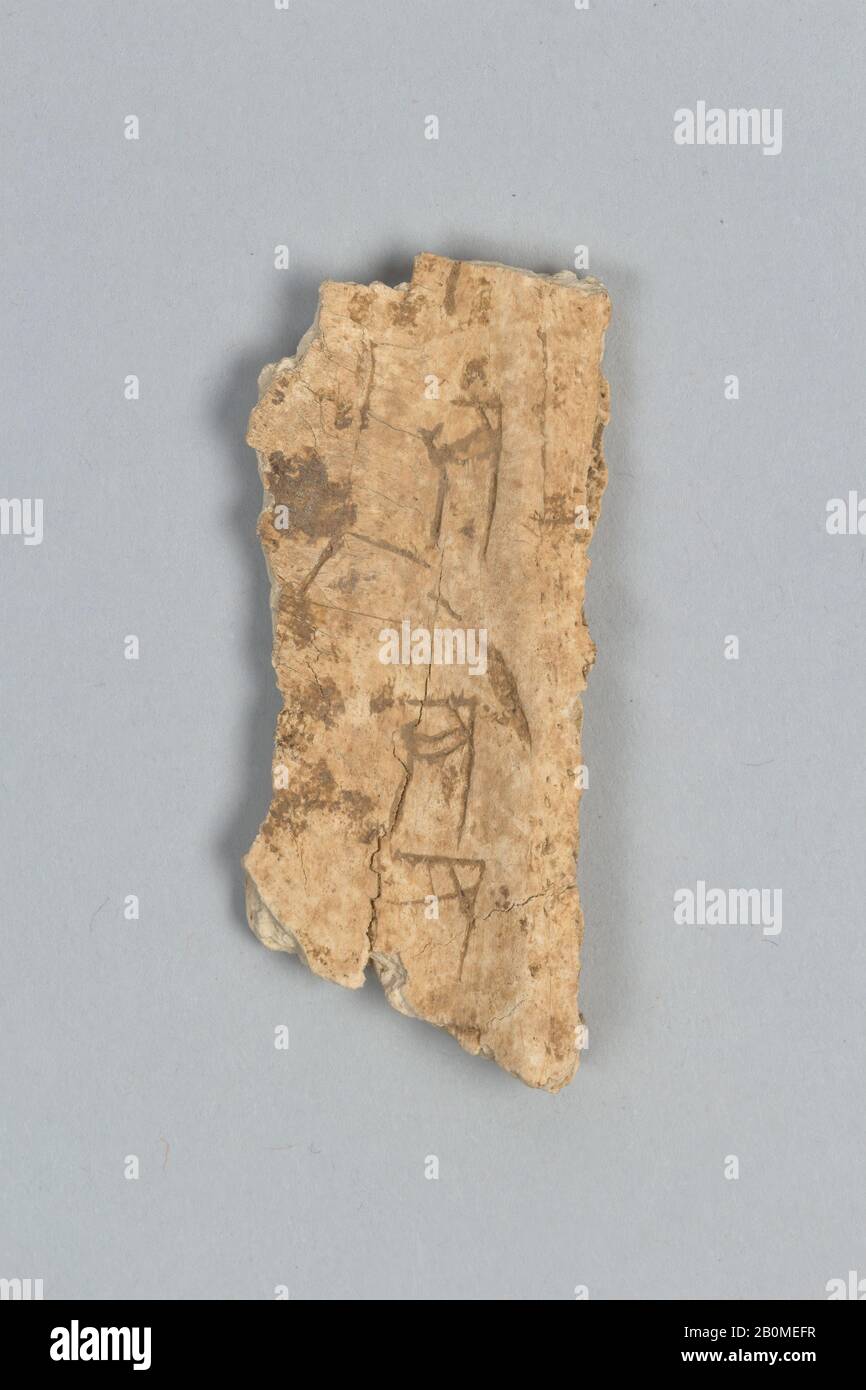 Oracle bone fragment, China, Shang dynasty (ca. 1600–1046 B.C.), Culture: China, Inscribed bone, 7/8 × 2 in. (2.2 × 5.1 cm), Bone Stock Photohttps://www.alamy.com/image-license-details/?v=1https://www.alamy.com/oracle-bone-fragment-china-shang-dynasty-ca-16001046-bc-culture-china-inscribed-bone-78-2-in-22-51-cm-bone-image344657819.html
Oracle bone fragment, China, Shang dynasty (ca. 1600–1046 B.C.), Culture: China, Inscribed bone, 7/8 × 2 in. (2.2 × 5.1 cm), Bone Stock Photohttps://www.alamy.com/image-license-details/?v=1https://www.alamy.com/oracle-bone-fragment-china-shang-dynasty-ca-16001046-bc-culture-china-inscribed-bone-78-2-in-22-51-cm-bone-image344657819.htmlRM2B0MEFR–Oracle bone fragment, China, Shang dynasty (ca. 1600–1046 B.C.), Culture: China, Inscribed bone, 7/8 × 2 in. (2.2 × 5.1 cm), Bone
 China: An oracle bone of turtle plastron divining the outcome of a military campaign. Xiaotun, Anyang County, Henan Province, c. 1300-1050 BCE. Oracle bone inscriptions (Chinese: 甲骨; pinyin: jiǎgǔ) are the ancient Chinese characters carved on animal scapulas (shoulder blades) or turtle plastron (underside). The oracle bone inscriptions were mainly used for divination and keeping records of events that happened in the late Shang Dynasty (c. 1300-1050 BCE). Stock Photohttps://www.alamy.com/image-license-details/?v=1https://www.alamy.com/china-an-oracle-bone-of-turtle-plastron-divining-the-outcome-of-a-military-campaign-xiaotun-anyang-county-henan-province-c-1300-1050-bce-oracle-bone-inscriptions-chinese-pinyin-jig-are-the-ancient-chinese-characters-carved-on-animal-scapulas-shoulder-blades-or-turtle-plastron-underside-the-oracle-bone-inscriptions-were-mainly-used-for-divination-and-keeping-records-of-events-that-happened-in-the-late-shang-dynasty-c-1300-1050-bce-image344240560.html
China: An oracle bone of turtle plastron divining the outcome of a military campaign. Xiaotun, Anyang County, Henan Province, c. 1300-1050 BCE. Oracle bone inscriptions (Chinese: 甲骨; pinyin: jiǎgǔ) are the ancient Chinese characters carved on animal scapulas (shoulder blades) or turtle plastron (underside). The oracle bone inscriptions were mainly used for divination and keeping records of events that happened in the late Shang Dynasty (c. 1300-1050 BCE). Stock Photohttps://www.alamy.com/image-license-details/?v=1https://www.alamy.com/china-an-oracle-bone-of-turtle-plastron-divining-the-outcome-of-a-military-campaign-xiaotun-anyang-county-henan-province-c-1300-1050-bce-oracle-bone-inscriptions-chinese-pinyin-jig-are-the-ancient-chinese-characters-carved-on-animal-scapulas-shoulder-blades-or-turtle-plastron-underside-the-oracle-bone-inscriptions-were-mainly-used-for-divination-and-keeping-records-of-events-that-happened-in-the-late-shang-dynasty-c-1300-1050-bce-image344240560.htmlRM2B01E9M–China: An oracle bone of turtle plastron divining the outcome of a military campaign. Xiaotun, Anyang County, Henan Province, c. 1300-1050 BCE. Oracle bone inscriptions (Chinese: 甲骨; pinyin: jiǎgǔ) are the ancient Chinese characters carved on animal scapulas (shoulder blades) or turtle plastron (underside). The oracle bone inscriptions were mainly used for divination and keeping records of events that happened in the late Shang Dynasty (c. 1300-1050 BCE).
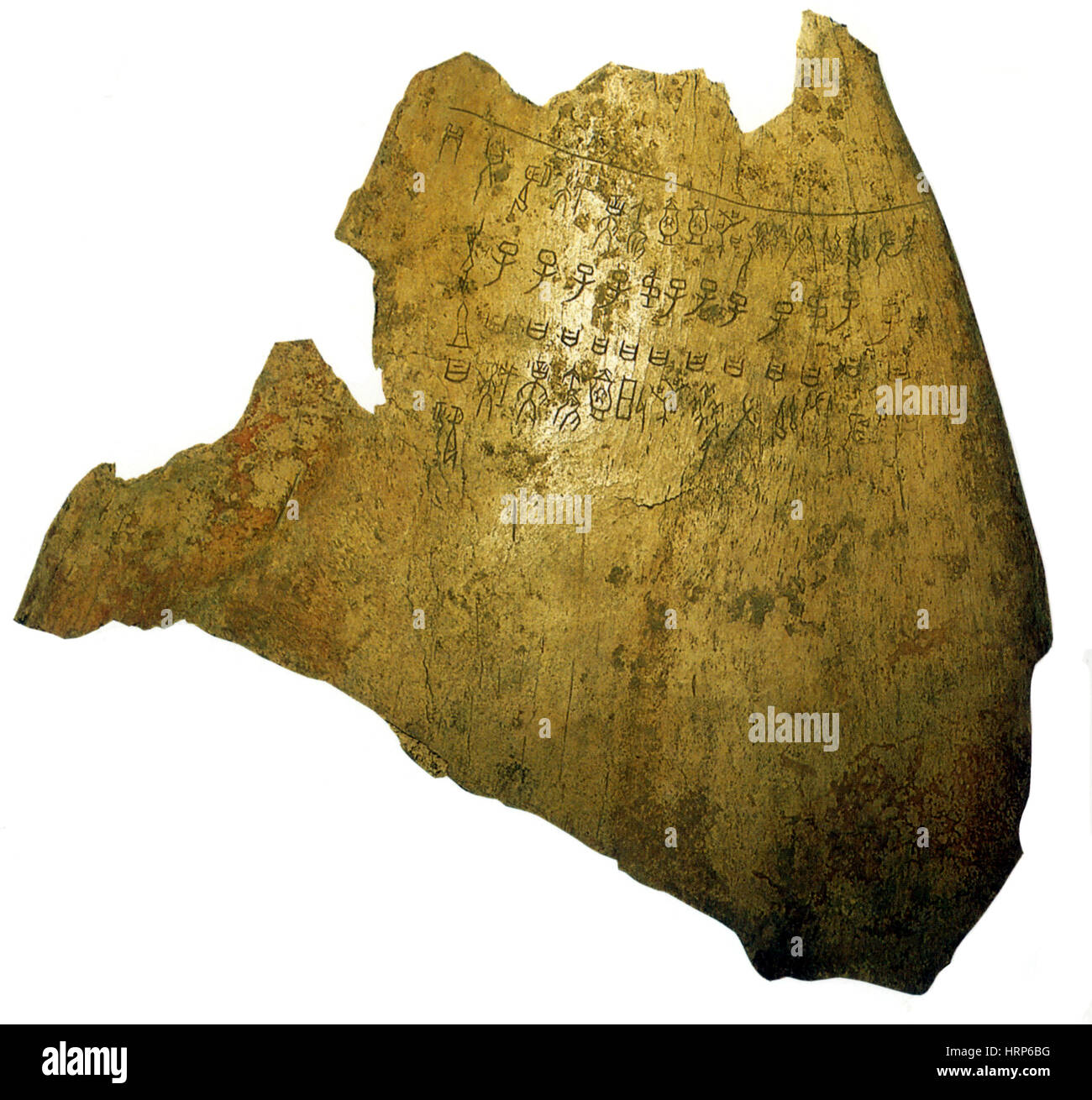 Pyromancy, Ancient Chinese Oracle Bone Stock Photohttps://www.alamy.com/image-license-details/?v=1https://www.alamy.com/stock-photo-pyromancy-ancient-chinese-oracle-bone-135097636.html
Pyromancy, Ancient Chinese Oracle Bone Stock Photohttps://www.alamy.com/image-license-details/?v=1https://www.alamy.com/stock-photo-pyromancy-ancient-chinese-oracle-bone-135097636.htmlRMHRP6BG–Pyromancy, Ancient Chinese Oracle Bone
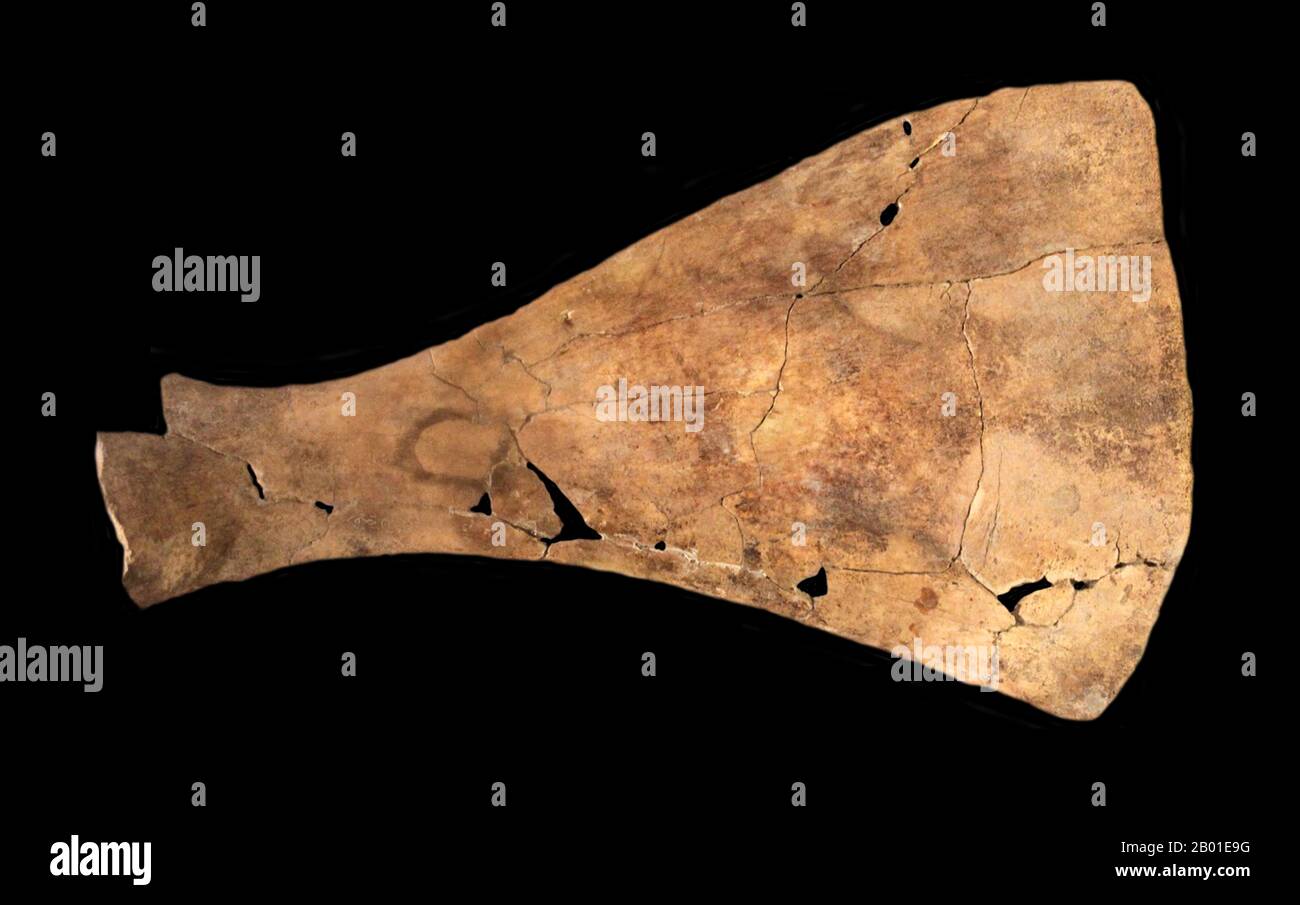 China: An ox scapula oracle bone divining future good or bad fortune. Xiaotun, Anyang County, Henan Province, c. 1300-1050 BCE. Oracle bone inscriptions (Chinese: 甲骨; pinyin: jiǎgǔ) are the ancient Chinese characters carved on animal scapulas (shoulder blades) or turtle plastron (underside). The oracle bone inscriptions were mainly used for divination and keeping records of events that happened in the late Shang Dynasty (c. 1300-1050 BCE). Stock Photohttps://www.alamy.com/image-license-details/?v=1https://www.alamy.com/china-an-ox-scapula-oracle-bone-divining-future-good-or-bad-fortune-xiaotun-anyang-county-henan-province-c-1300-1050-bce-oracle-bone-inscriptions-chinese-pinyin-jig-are-the-ancient-chinese-characters-carved-on-animal-scapulas-shoulder-blades-or-turtle-plastron-underside-the-oracle-bone-inscriptions-were-mainly-used-for-divination-and-keeping-records-of-events-that-happened-in-the-late-shang-dynasty-c-1300-1050-bce-image344240556.html
China: An ox scapula oracle bone divining future good or bad fortune. Xiaotun, Anyang County, Henan Province, c. 1300-1050 BCE. Oracle bone inscriptions (Chinese: 甲骨; pinyin: jiǎgǔ) are the ancient Chinese characters carved on animal scapulas (shoulder blades) or turtle plastron (underside). The oracle bone inscriptions were mainly used for divination and keeping records of events that happened in the late Shang Dynasty (c. 1300-1050 BCE). Stock Photohttps://www.alamy.com/image-license-details/?v=1https://www.alamy.com/china-an-ox-scapula-oracle-bone-divining-future-good-or-bad-fortune-xiaotun-anyang-county-henan-province-c-1300-1050-bce-oracle-bone-inscriptions-chinese-pinyin-jig-are-the-ancient-chinese-characters-carved-on-animal-scapulas-shoulder-blades-or-turtle-plastron-underside-the-oracle-bone-inscriptions-were-mainly-used-for-divination-and-keeping-records-of-events-that-happened-in-the-late-shang-dynasty-c-1300-1050-bce-image344240556.htmlRM2B01E9G–China: An ox scapula oracle bone divining future good or bad fortune. Xiaotun, Anyang County, Henan Province, c. 1300-1050 BCE. Oracle bone inscriptions (Chinese: 甲骨; pinyin: jiǎgǔ) are the ancient Chinese characters carved on animal scapulas (shoulder blades) or turtle plastron (underside). The oracle bone inscriptions were mainly used for divination and keeping records of events that happened in the late Shang Dynasty (c. 1300-1050 BCE).
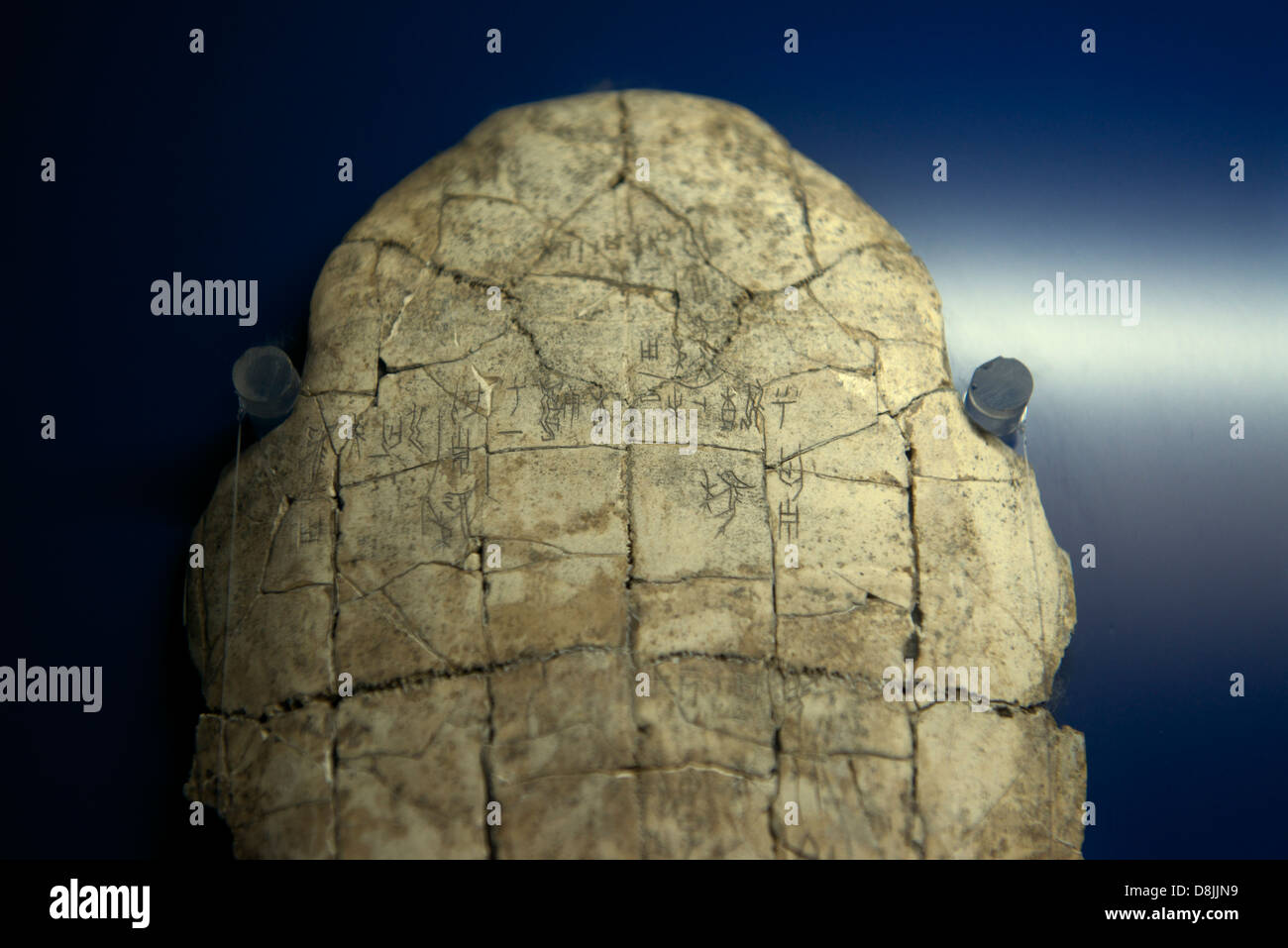 Oracle-Bone Inscriptions - Yin Ruin in Anyang, Henan province. Stock Photohttps://www.alamy.com/image-license-details/?v=1https://www.alamy.com/stock-photo-oracle-bone-inscriptions-yin-ruin-in-anyang-henan-province-56958197.html
Oracle-Bone Inscriptions - Yin Ruin in Anyang, Henan province. Stock Photohttps://www.alamy.com/image-license-details/?v=1https://www.alamy.com/stock-photo-oracle-bone-inscriptions-yin-ruin-in-anyang-henan-province-56958197.htmlRMD8JJN9–Oracle-Bone Inscriptions - Yin Ruin in Anyang, Henan province.
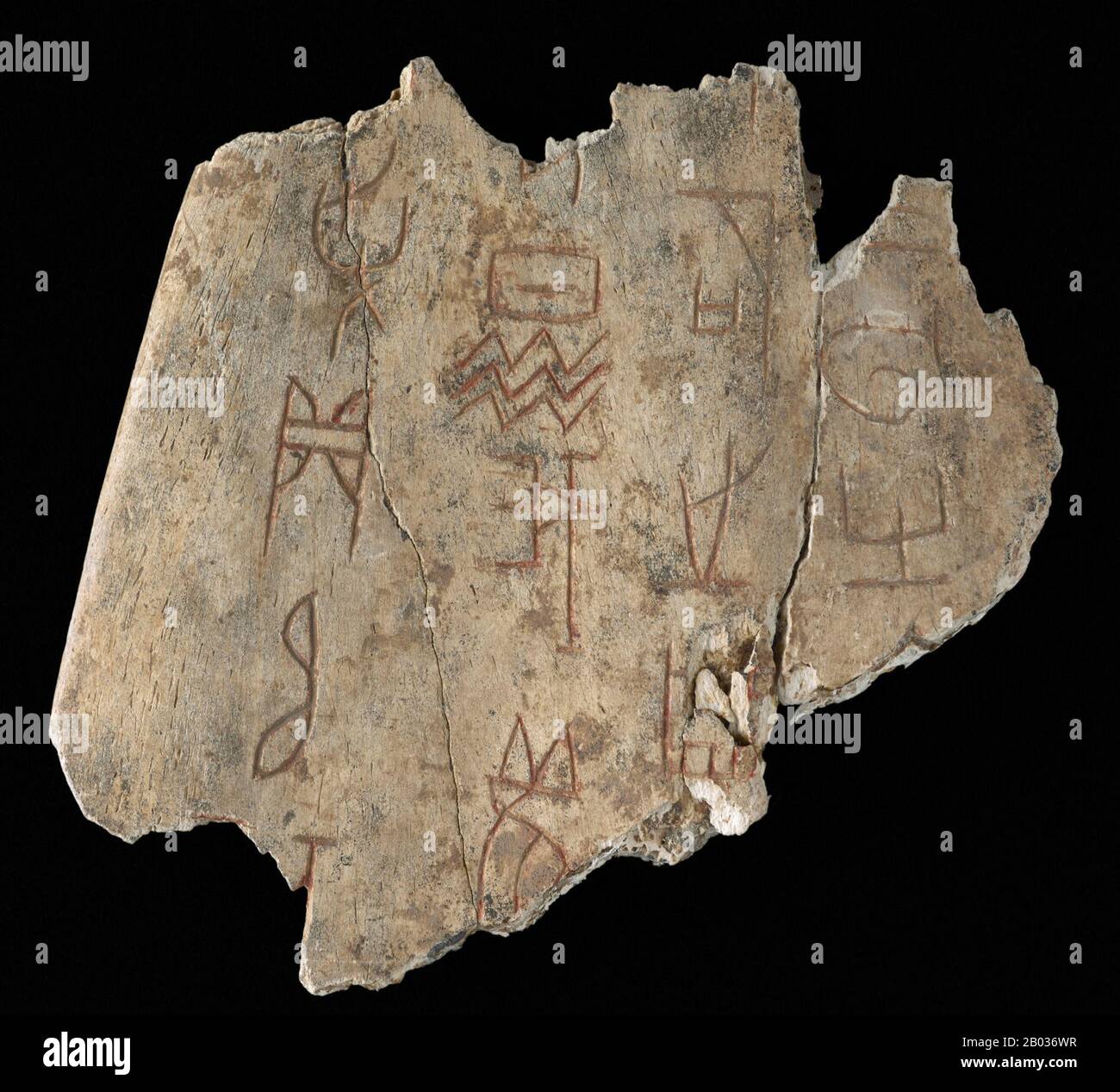 Oracle bones (Chinese: jiagu) are pieces of ox scapula or turtle plastron, which were used for pyromancy – a form of divination – in ancient China, mainly during the late Shang dynasty. Scapulimancy is the correct term if ox scapulae were used for the divination; plastromancy if turtle plastrons were used. The oracle bones bear the earliest known significant corpus of ancient Chinese writing and contain important historical information such as the complete royal genealogy of the Shang dynasty. When they were discovered and deciphered in the early twentieth century, these records confirmed the Stock Photohttps://www.alamy.com/image-license-details/?v=1https://www.alamy.com/oracle-bones-chinese-jiagu-are-pieces-of-ox-scapula-or-turtle-plastron-which-were-used-for-pyromancy-a-form-of-divination-in-ancient-china-mainly-during-the-late-shang-dynasty-scapulimancy-is-the-correct-term-if-ox-scapulae-were-used-for-the-divination-plastromancy-if-turtle-plastrons-were-used-the-oracle-bones-bear-the-earliest-known-significant-corpus-of-ancient-chinese-writing-and-contain-important-historical-information-such-as-the-complete-royal-genealogy-of-the-shang-dynasty-when-they-were-discovered-and-deciphered-in-the-early-twentieth-century-these-records-confirmed-the-image344278643.html
Oracle bones (Chinese: jiagu) are pieces of ox scapula or turtle plastron, which were used for pyromancy – a form of divination – in ancient China, mainly during the late Shang dynasty. Scapulimancy is the correct term if ox scapulae were used for the divination; plastromancy if turtle plastrons were used. The oracle bones bear the earliest known significant corpus of ancient Chinese writing and contain important historical information such as the complete royal genealogy of the Shang dynasty. When they were discovered and deciphered in the early twentieth century, these records confirmed the Stock Photohttps://www.alamy.com/image-license-details/?v=1https://www.alamy.com/oracle-bones-chinese-jiagu-are-pieces-of-ox-scapula-or-turtle-plastron-which-were-used-for-pyromancy-a-form-of-divination-in-ancient-china-mainly-during-the-late-shang-dynasty-scapulimancy-is-the-correct-term-if-ox-scapulae-were-used-for-the-divination-plastromancy-if-turtle-plastrons-were-used-the-oracle-bones-bear-the-earliest-known-significant-corpus-of-ancient-chinese-writing-and-contain-important-historical-information-such-as-the-complete-royal-genealogy-of-the-shang-dynasty-when-they-were-discovered-and-deciphered-in-the-early-twentieth-century-these-records-confirmed-the-image344278643.htmlRM2B036WR–Oracle bones (Chinese: jiagu) are pieces of ox scapula or turtle plastron, which were used for pyromancy – a form of divination – in ancient China, mainly during the late Shang dynasty. Scapulimancy is the correct term if ox scapulae were used for the divination; plastromancy if turtle plastrons were used. The oracle bones bear the earliest known significant corpus of ancient Chinese writing and contain important historical information such as the complete royal genealogy of the Shang dynasty. When they were discovered and deciphered in the early twentieth century, these records confirmed the
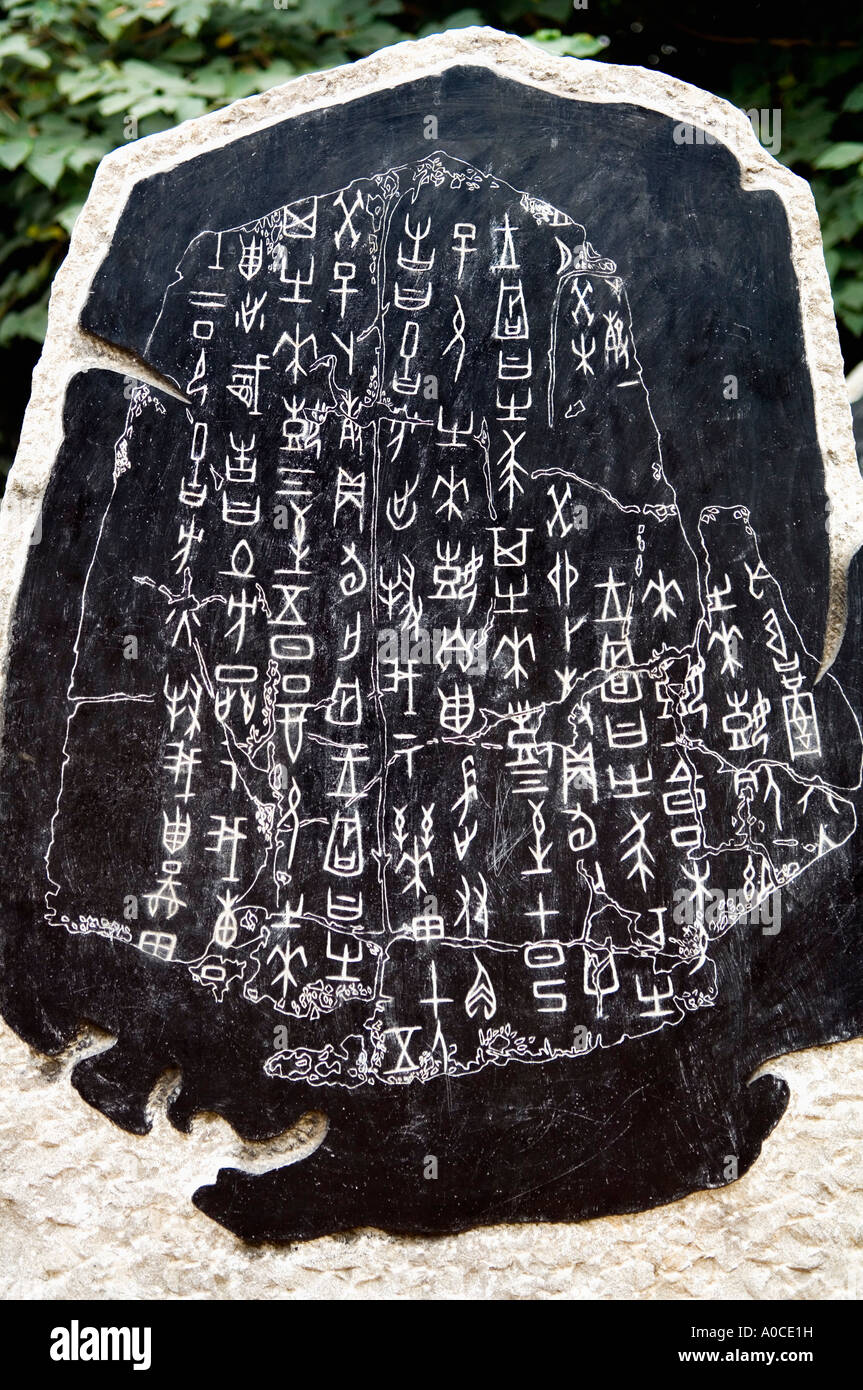 Inscribed Oracle Bone From the Shang Dynasty in Yinxu city, Henan Province, China Stock Photohttps://www.alamy.com/image-license-details/?v=1https://www.alamy.com/inscribed-oracle-bone-from-the-shang-dynasty-in-yinxu-city-henan-province-image9952108.html
Inscribed Oracle Bone From the Shang Dynasty in Yinxu city, Henan Province, China Stock Photohttps://www.alamy.com/image-license-details/?v=1https://www.alamy.com/inscribed-oracle-bone-from-the-shang-dynasty-in-yinxu-city-henan-province-image9952108.htmlRMA0CE1H–Inscribed Oracle Bone From the Shang Dynasty in Yinxu city, Henan Province, China
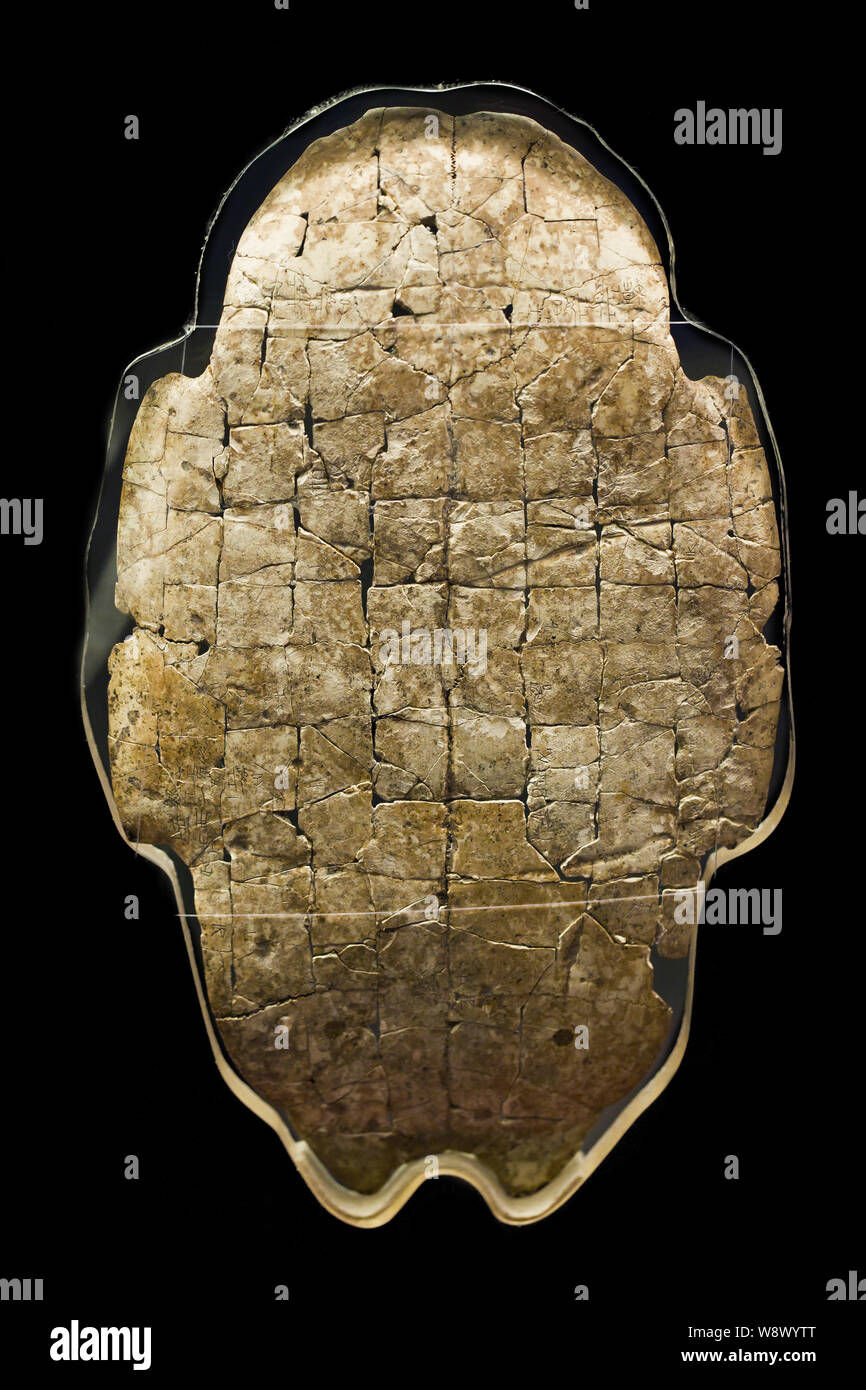 Oracle bone inscriptions of the Shang Dynasty are displayed at Anyang Yin Xu Museum in Anyang city, central Chinas Henan province, May 2010. Stock Photohttps://www.alamy.com/image-license-details/?v=1https://www.alamy.com/oracle-bone-inscriptions-of-the-shang-dynasty-are-displayed-at-anyang-yin-xu-museum-in-anyang-city-central-chinas-henan-province-may-2010-image263643432.html
Oracle bone inscriptions of the Shang Dynasty are displayed at Anyang Yin Xu Museum in Anyang city, central Chinas Henan province, May 2010. Stock Photohttps://www.alamy.com/image-license-details/?v=1https://www.alamy.com/oracle-bone-inscriptions-of-the-shang-dynasty-are-displayed-at-anyang-yin-xu-museum-in-anyang-city-central-chinas-henan-province-may-2010-image263643432.htmlRMW8WYTT–Oracle bone inscriptions of the Shang Dynasty are displayed at Anyang Yin Xu Museum in Anyang city, central Chinas Henan province, May 2010.
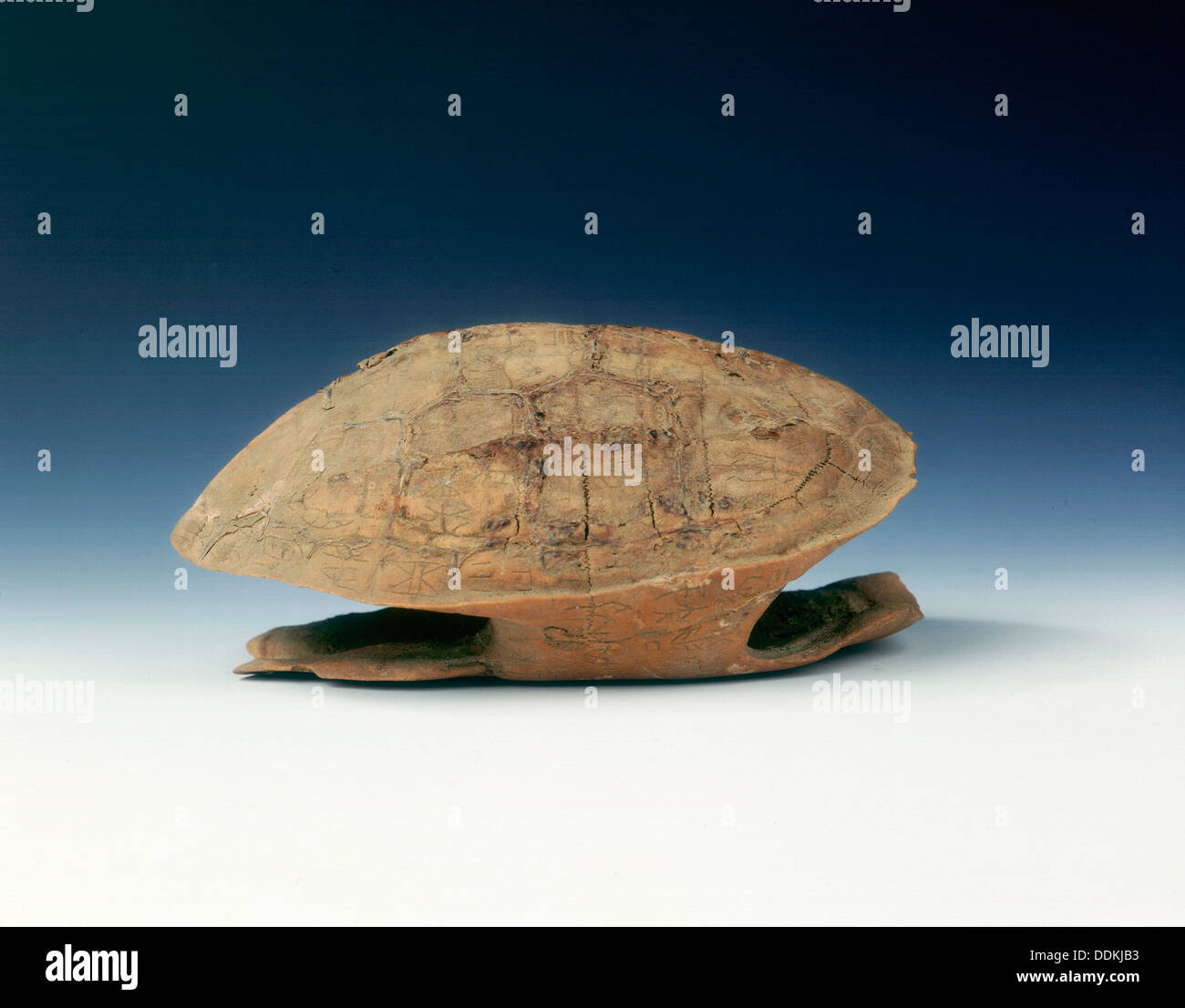 Petrified tortoise shell with oracle bone inscriptions, possibly Shang Dynasty, China, c1400 BC. Artist: Unknown Stock Photohttps://www.alamy.com/image-license-details/?v=1https://www.alamy.com/petrified-tortoise-shell-with-oracle-bone-inscriptions-possibly-shang-image60053143.html
Petrified tortoise shell with oracle bone inscriptions, possibly Shang Dynasty, China, c1400 BC. Artist: Unknown Stock Photohttps://www.alamy.com/image-license-details/?v=1https://www.alamy.com/petrified-tortoise-shell-with-oracle-bone-inscriptions-possibly-shang-image60053143.htmlRMDDKJB3–Petrified tortoise shell with oracle bone inscriptions, possibly Shang Dynasty, China, c1400 BC. Artist: Unknown
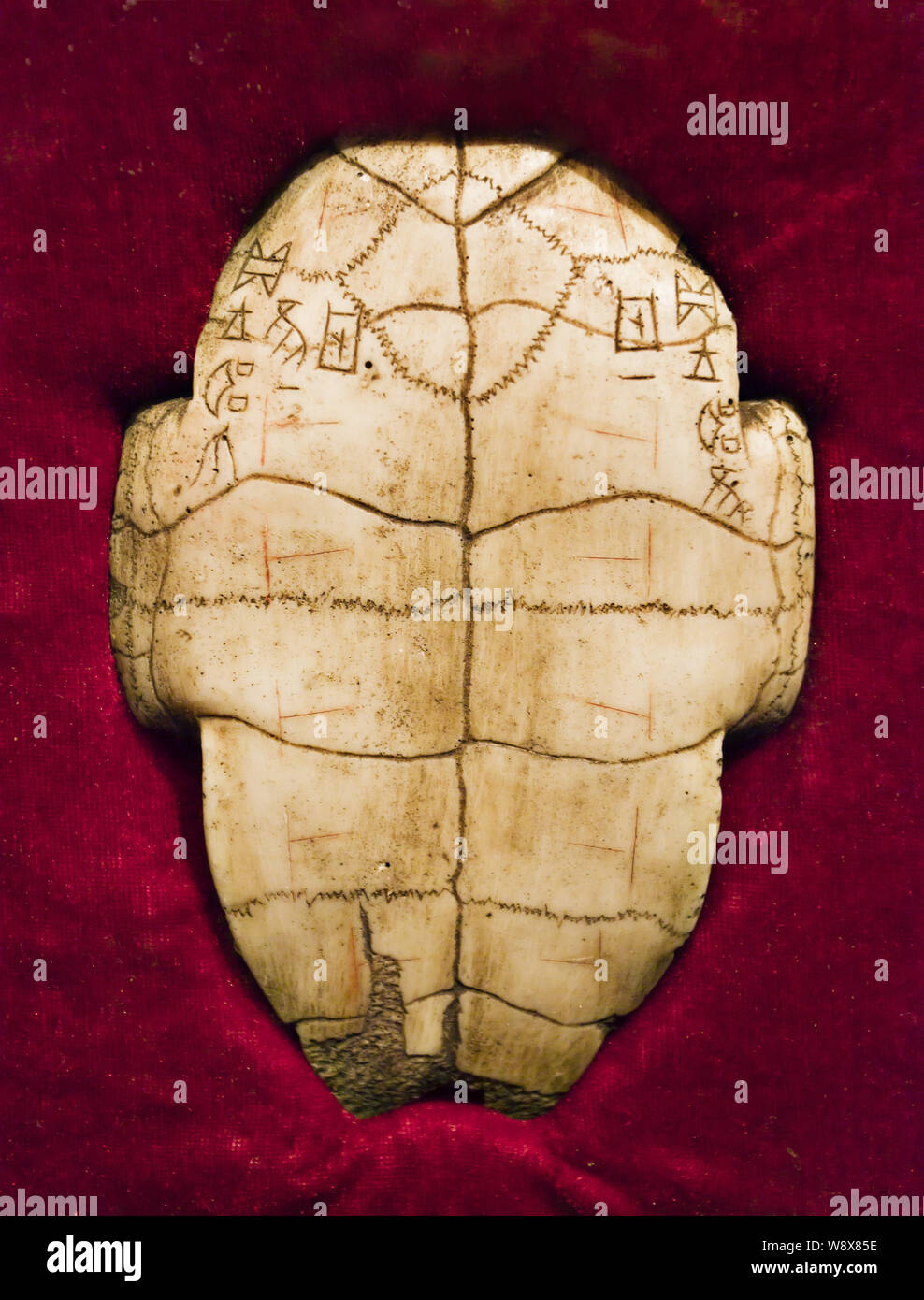 Oracle bone inscriptions of the Shang Dynasty are displayed at Anyang Yin Xu Museum in Anyang city, central Chinas Henan province, May 2010. Stock Photohttps://www.alamy.com/image-license-details/?v=1https://www.alamy.com/oracle-bone-inscriptions-of-the-shang-dynasty-are-displayed-at-anyang-yin-xu-museum-in-anyang-city-central-chinas-henan-province-may-2010-image263649946.html
Oracle bone inscriptions of the Shang Dynasty are displayed at Anyang Yin Xu Museum in Anyang city, central Chinas Henan province, May 2010. Stock Photohttps://www.alamy.com/image-license-details/?v=1https://www.alamy.com/oracle-bone-inscriptions-of-the-shang-dynasty-are-displayed-at-anyang-yin-xu-museum-in-anyang-city-central-chinas-henan-province-may-2010-image263649946.htmlRMW8X85E–Oracle bone inscriptions of the Shang Dynasty are displayed at Anyang Yin Xu Museum in Anyang city, central Chinas Henan province, May 2010.
 Chinese oracle bone. Diviners of the Shang dynasty (16th-10th centuries B.C.) produced oracles by reading cracks on ox bones. Such bones bear the earliest writing known in China. China, 16th-10th century BC. Source: Or. 7694, 1593. Stock Photohttps://www.alamy.com/image-license-details/?v=1https://www.alamy.com/chinese-oracle-bone-diviners-of-the-shang-dynasty-16th-10th-centuries-bc-produced-oracles-by-reading-cracks-on-ox-bones-such-bones-bear-the-earliest-writing-known-in-china-china-16th-10th-century-bc-source-or-7694-1593-image226830583.html
Chinese oracle bone. Diviners of the Shang dynasty (16th-10th centuries B.C.) produced oracles by reading cracks on ox bones. Such bones bear the earliest writing known in China. China, 16th-10th century BC. Source: Or. 7694, 1593. Stock Photohttps://www.alamy.com/image-license-details/?v=1https://www.alamy.com/chinese-oracle-bone-diviners-of-the-shang-dynasty-16th-10th-centuries-bc-produced-oracles-by-reading-cracks-on-ox-bones-such-bones-bear-the-earliest-writing-known-in-china-china-16th-10th-century-bc-source-or-7694-1593-image226830583.htmlRMR510M7–Chinese oracle bone. Diviners of the Shang dynasty (16th-10th centuries B.C.) produced oracles by reading cracks on ox bones. Such bones bear the earliest writing known in China. China, 16th-10th century BC. Source: Or. 7694, 1593.
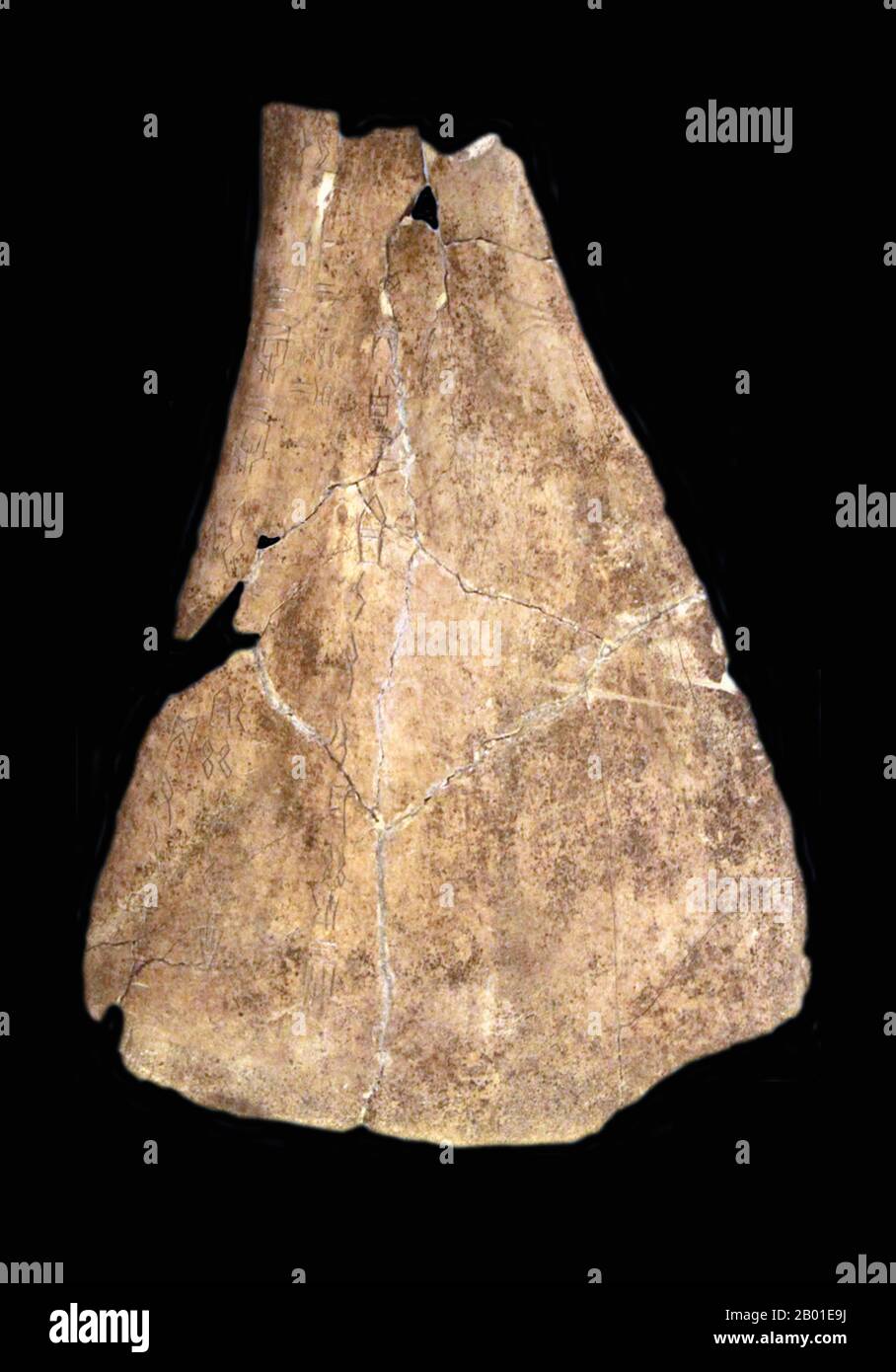 China: An ox scapula oracle bone divining future good or bad fortune. Xiaotun, Anyang County, Henan Province, c. 1300-1050 BCE. Oracle bone inscriptions (Chinese: 甲骨; pinyin: jiǎgǔ) are the ancient Chinese characters carved on animal scapulas (shoulder blades) or turtle plastron (underside). The oracle bone inscriptions were mainly used for divination and keeping records of events that happened in the late Shang Dynasty (c. 1300-1050 BCE). Stock Photohttps://www.alamy.com/image-license-details/?v=1https://www.alamy.com/china-an-ox-scapula-oracle-bone-divining-future-good-or-bad-fortune-xiaotun-anyang-county-henan-province-c-1300-1050-bce-oracle-bone-inscriptions-chinese-pinyin-jig-are-the-ancient-chinese-characters-carved-on-animal-scapulas-shoulder-blades-or-turtle-plastron-underside-the-oracle-bone-inscriptions-were-mainly-used-for-divination-and-keeping-records-of-events-that-happened-in-the-late-shang-dynasty-c-1300-1050-bce-image344240558.html
China: An ox scapula oracle bone divining future good or bad fortune. Xiaotun, Anyang County, Henan Province, c. 1300-1050 BCE. Oracle bone inscriptions (Chinese: 甲骨; pinyin: jiǎgǔ) are the ancient Chinese characters carved on animal scapulas (shoulder blades) or turtle plastron (underside). The oracle bone inscriptions were mainly used for divination and keeping records of events that happened in the late Shang Dynasty (c. 1300-1050 BCE). Stock Photohttps://www.alamy.com/image-license-details/?v=1https://www.alamy.com/china-an-ox-scapula-oracle-bone-divining-future-good-or-bad-fortune-xiaotun-anyang-county-henan-province-c-1300-1050-bce-oracle-bone-inscriptions-chinese-pinyin-jig-are-the-ancient-chinese-characters-carved-on-animal-scapulas-shoulder-blades-or-turtle-plastron-underside-the-oracle-bone-inscriptions-were-mainly-used-for-divination-and-keeping-records-of-events-that-happened-in-the-late-shang-dynasty-c-1300-1050-bce-image344240558.htmlRM2B01E9J–China: An ox scapula oracle bone divining future good or bad fortune. Xiaotun, Anyang County, Henan Province, c. 1300-1050 BCE. Oracle bone inscriptions (Chinese: 甲骨; pinyin: jiǎgǔ) are the ancient Chinese characters carved on animal scapulas (shoulder blades) or turtle plastron (underside). The oracle bone inscriptions were mainly used for divination and keeping records of events that happened in the late Shang Dynasty (c. 1300-1050 BCE).
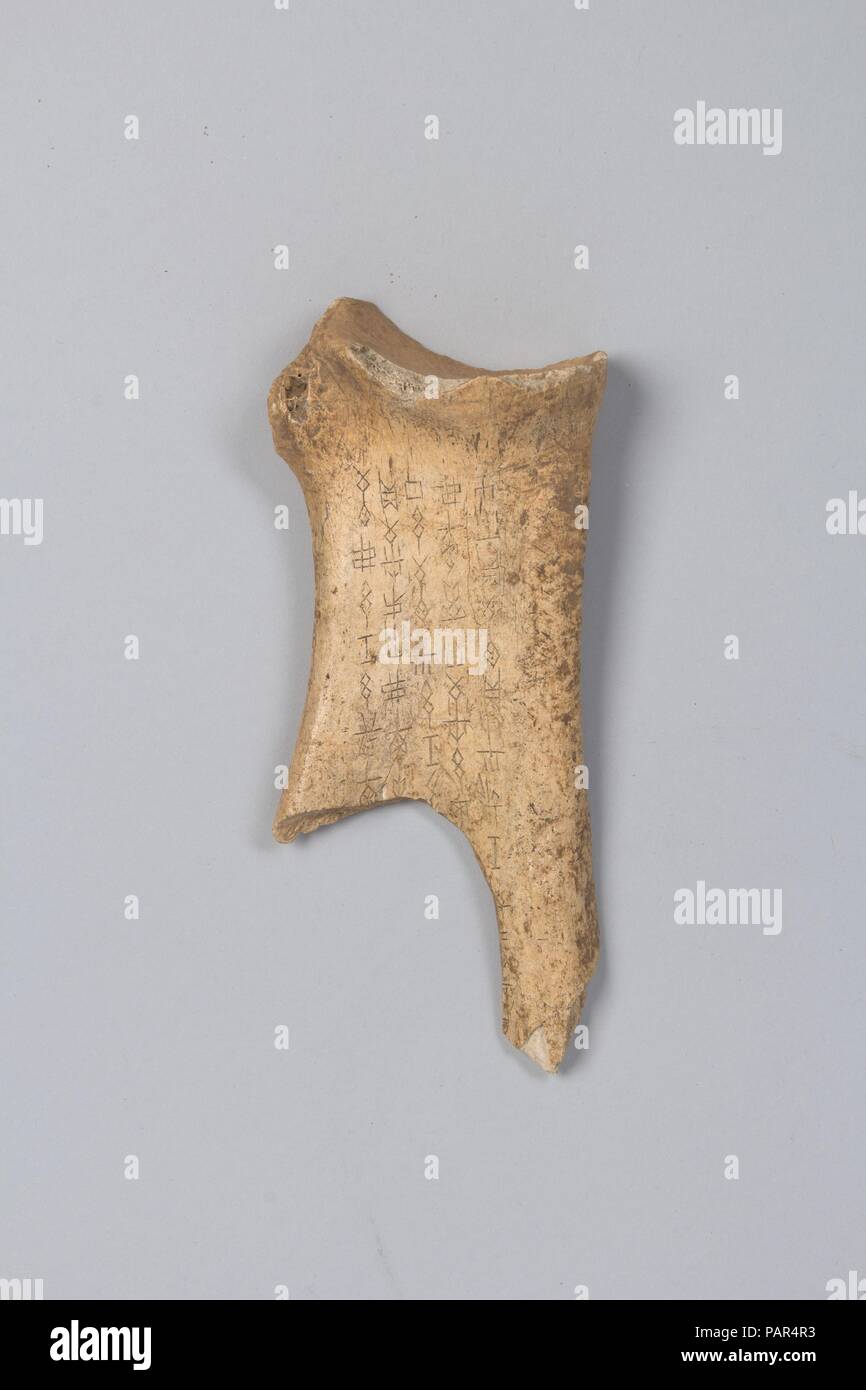 Oracle bone fragment. Culture: China. Dimensions: 3 × 7 in. (7.6 × 17.8 cm). Museum: Metropolitan Museum of Art, New York, USA. Stock Photohttps://www.alamy.com/image-license-details/?v=1https://www.alamy.com/oracle-bone-fragment-culture-china-dimensions-3-7-in-76-178-cm-museum-metropolitan-museum-of-art-new-york-usa-image213179655.html
Oracle bone fragment. Culture: China. Dimensions: 3 × 7 in. (7.6 × 17.8 cm). Museum: Metropolitan Museum of Art, New York, USA. Stock Photohttps://www.alamy.com/image-license-details/?v=1https://www.alamy.com/oracle-bone-fragment-culture-china-dimensions-3-7-in-76-178-cm-museum-metropolitan-museum-of-art-new-york-usa-image213179655.htmlRMPAR4R3–Oracle bone fragment. Culture: China. Dimensions: 3 × 7 in. (7.6 × 17.8 cm). Museum: Metropolitan Museum of Art, New York, USA.
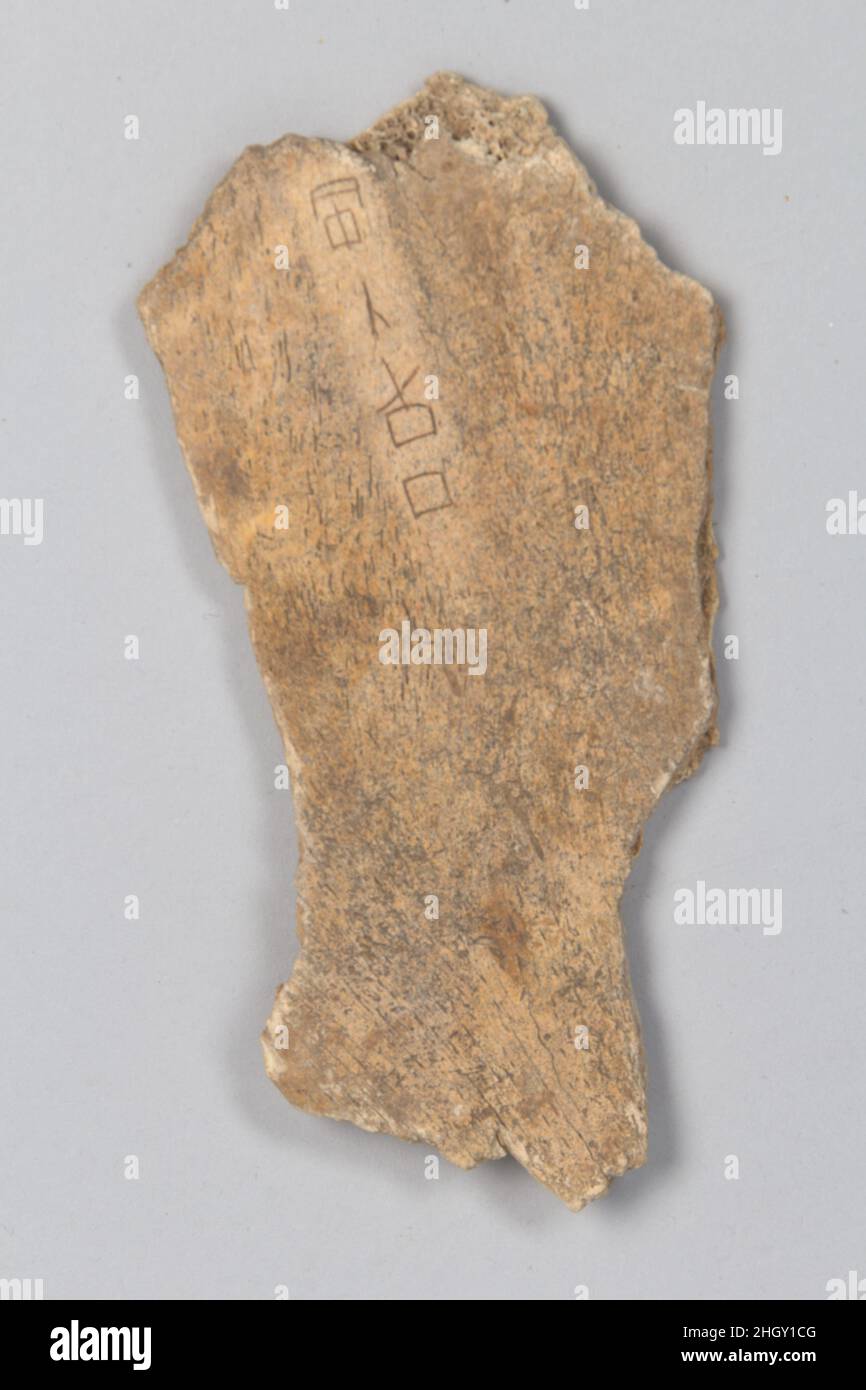 Oracle bone fragment China. Oracle bone fragment. China. Inscribed bone. Shang dynasty (ca. 1600–1046 B.C.). Bone Stock Photohttps://www.alamy.com/image-license-details/?v=1https://www.alamy.com/oracle-bone-fragment-china-oracle-bone-fragment-china-inscribed-bone-shang-dynasty-ca-16001046-bc-bone-image457897904.html
Oracle bone fragment China. Oracle bone fragment. China. Inscribed bone. Shang dynasty (ca. 1600–1046 B.C.). Bone Stock Photohttps://www.alamy.com/image-license-details/?v=1https://www.alamy.com/oracle-bone-fragment-china-oracle-bone-fragment-china-inscribed-bone-shang-dynasty-ca-16001046-bc-bone-image457897904.htmlRM2HGY1CG–Oracle bone fragment China. Oracle bone fragment. China. Inscribed bone. Shang dynasty (ca. 1600–1046 B.C.). Bone
 China. 27th Nov, 2017. CHINA-November 2017:(EDITORIAL USE ONLY. CHINA OUT) An ancient oracle-bone inscriptions. Chinese oracle-bone inscriptions have recently been included in the Memory of the World Register, a list of documentary heritage of the UNESCO, according to the UN agency's website.Oracle-bone inscriptions were excavated from the Ruins of Yin in Anyang, Central China's Henan Province. Inscriptions on tortoise shells and animal bones represent the original characters of the Chinese written language, which date back to the Shang Dynasty Credit: SIPA Asia/ZUMA Wire/Alamy Live News Stock Photohttps://www.alamy.com/image-license-details/?v=1https://www.alamy.com/stock-image-china-27th-nov-2017-china-november-2017editorial-use-only-china-out-166517570.html
China. 27th Nov, 2017. CHINA-November 2017:(EDITORIAL USE ONLY. CHINA OUT) An ancient oracle-bone inscriptions. Chinese oracle-bone inscriptions have recently been included in the Memory of the World Register, a list of documentary heritage of the UNESCO, according to the UN agency's website.Oracle-bone inscriptions were excavated from the Ruins of Yin in Anyang, Central China's Henan Province. Inscriptions on tortoise shells and animal bones represent the original characters of the Chinese written language, which date back to the Shang Dynasty Credit: SIPA Asia/ZUMA Wire/Alamy Live News Stock Photohttps://www.alamy.com/image-license-details/?v=1https://www.alamy.com/stock-image-china-27th-nov-2017-china-november-2017editorial-use-only-china-out-166517570.htmlRMKJWET2–China. 27th Nov, 2017. CHINA-November 2017:(EDITORIAL USE ONLY. CHINA OUT) An ancient oracle-bone inscriptions. Chinese oracle-bone inscriptions have recently been included in the Memory of the World Register, a list of documentary heritage of the UNESCO, according to the UN agency's website.Oracle-bone inscriptions were excavated from the Ruins of Yin in Anyang, Central China's Henan Province. Inscriptions on tortoise shells and animal bones represent the original characters of the Chinese written language, which date back to the Shang Dynasty Credit: SIPA Asia/ZUMA Wire/Alamy Live News
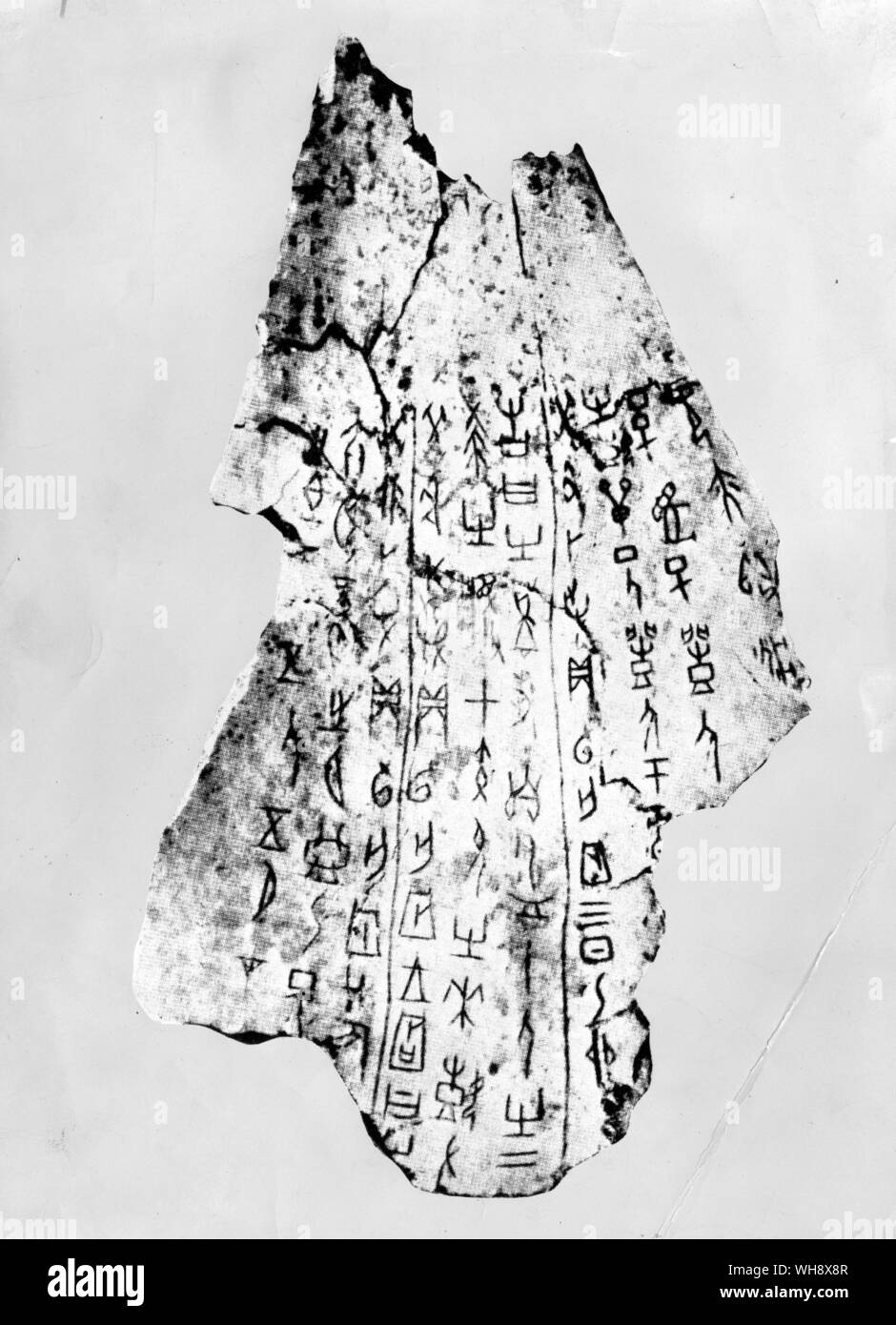 An oracle-bone (c.1600-c.1100) Stock Photohttps://www.alamy.com/image-license-details/?v=1https://www.alamy.com/an-oracle-bone-c1600-c1100-image268800919.html
An oracle-bone (c.1600-c.1100) Stock Photohttps://www.alamy.com/image-license-details/?v=1https://www.alamy.com/an-oracle-bone-c1600-c1100-image268800919.htmlRMWH8X8R–An oracle-bone (c.1600-c.1100)
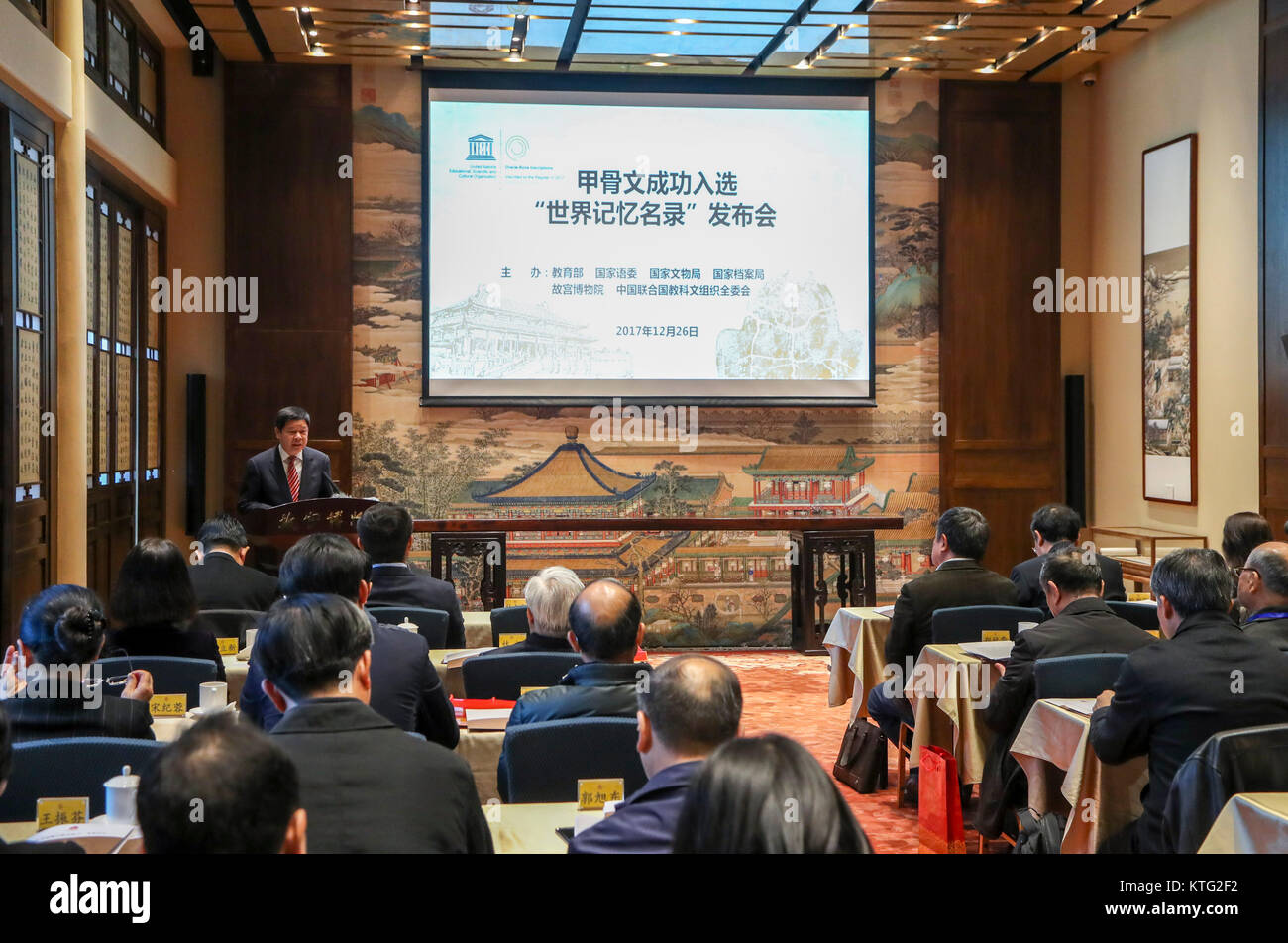 (171226) -- BEIJING, Dec. 26, 2017 (Xinhua) -- A press conference on the Chinese oracle bone inscriptions is held at the Palace Museum in Beijing, capital of China, Dec. 26, 2017. Chinese oracle bone inscriptions were included on the UNESCO Memory of the World Register, Chinese authorities announced Tuesday. Oracle bones are pieces of ox scapula or turtle plastron, which were used for divination during the late Shang Dynasty (1600-1046 B.C.). They bear the earliest significant corpus of ancient Chinese writing and contain important historical information about the Shang. Around 160,000 pieces Stock Photohttps://www.alamy.com/image-license-details/?v=1https://www.alamy.com/stock-image-171226-beijing-dec-26-2017-xinhua-a-press-conference-on-the-chinese-169998278.html
(171226) -- BEIJING, Dec. 26, 2017 (Xinhua) -- A press conference on the Chinese oracle bone inscriptions is held at the Palace Museum in Beijing, capital of China, Dec. 26, 2017. Chinese oracle bone inscriptions were included on the UNESCO Memory of the World Register, Chinese authorities announced Tuesday. Oracle bones are pieces of ox scapula or turtle plastron, which were used for divination during the late Shang Dynasty (1600-1046 B.C.). They bear the earliest significant corpus of ancient Chinese writing and contain important historical information about the Shang. Around 160,000 pieces Stock Photohttps://www.alamy.com/image-license-details/?v=1https://www.alamy.com/stock-image-171226-beijing-dec-26-2017-xinhua-a-press-conference-on-the-chinese-169998278.htmlRMKTG2F2–(171226) -- BEIJING, Dec. 26, 2017 (Xinhua) -- A press conference on the Chinese oracle bone inscriptions is held at the Palace Museum in Beijing, capital of China, Dec. 26, 2017. Chinese oracle bone inscriptions were included on the UNESCO Memory of the World Register, Chinese authorities announced Tuesday. Oracle bones are pieces of ox scapula or turtle plastron, which were used for divination during the late Shang Dynasty (1600-1046 B.C.). They bear the earliest significant corpus of ancient Chinese writing and contain important historical information about the Shang. Around 160,000 pieces
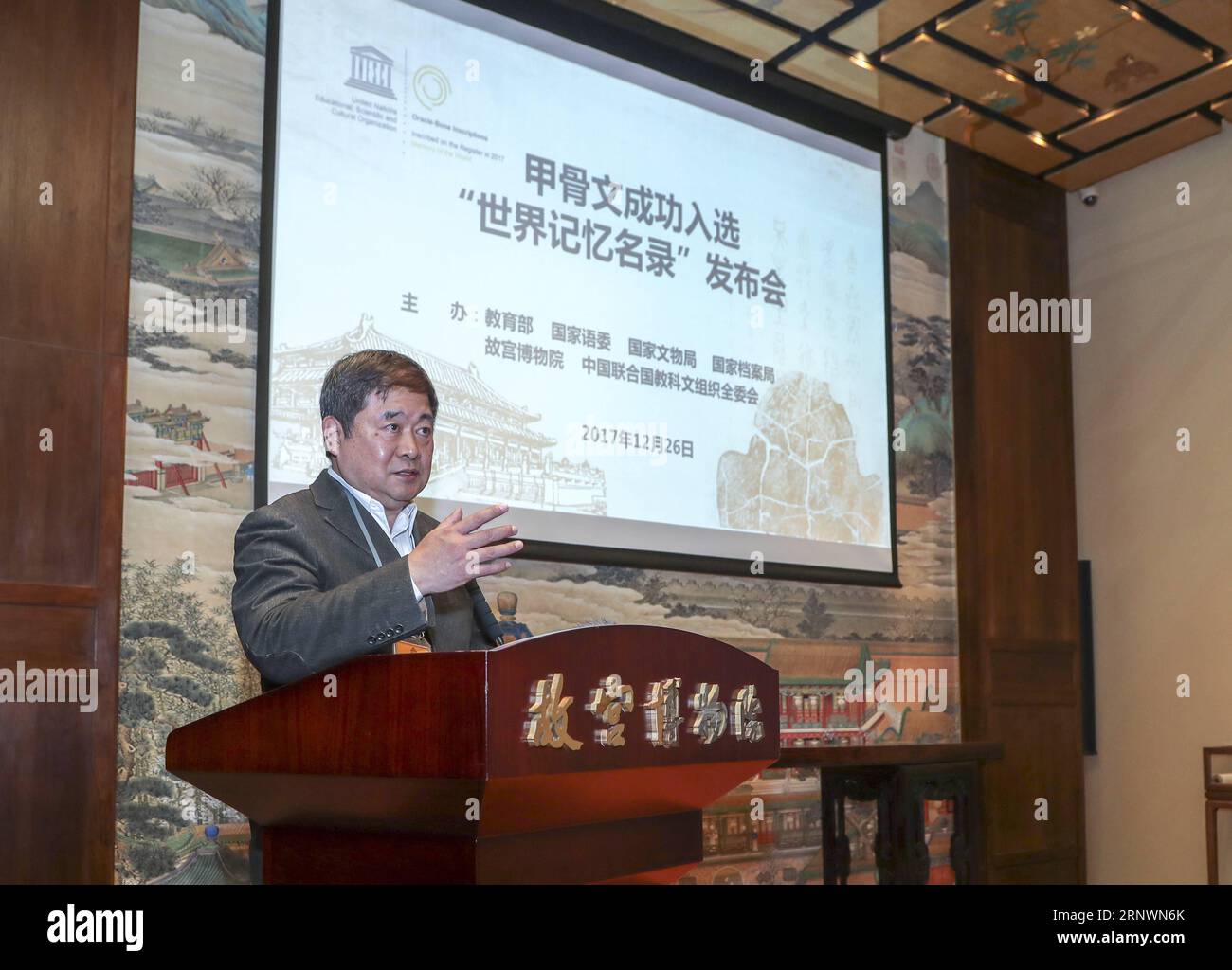 (171226) -- BEIJING, Dec. 26, 2017 () -- Director of the Palace Museum Shan Jixiang speaks at a press conference on the Chinese oracle bone inscriptions at the Palace Museum in Beijing, capital of China, Dec. 26, 2017. Chinese oracle bone inscriptions were included on the UNESCO Memory of the World Register, Chinese authorities announced Tuesday. Oracle bones are pieces of ox scapula or turtle plastron, which were used for divination during the late Shang Dynasty (1600-1046 B.C.). They bear the earliest significant corpus of ancient Chinese writing and contain important historical information Stock Photohttps://www.alamy.com/image-license-details/?v=1https://www.alamy.com/171226-beijing-dec-26-2017-director-of-the-palace-museum-shan-jixiang-speaks-at-a-press-conference-on-the-chinese-oracle-bone-inscriptions-at-the-palace-museum-in-beijing-capital-of-china-dec-26-2017-chinese-oracle-bone-inscriptions-were-included-on-the-unesco-memory-of-the-world-register-chinese-authorities-announced-tuesday-oracle-bones-are-pieces-of-ox-scapula-or-turtle-plastron-which-were-used-for-divination-during-the-late-shang-dynasty-1600-1046-bc-they-bear-the-earliest-significant-corpus-of-ancient-chinese-writing-and-contain-important-historical-information-image564205003.html
(171226) -- BEIJING, Dec. 26, 2017 () -- Director of the Palace Museum Shan Jixiang speaks at a press conference on the Chinese oracle bone inscriptions at the Palace Museum in Beijing, capital of China, Dec. 26, 2017. Chinese oracle bone inscriptions were included on the UNESCO Memory of the World Register, Chinese authorities announced Tuesday. Oracle bones are pieces of ox scapula or turtle plastron, which were used for divination during the late Shang Dynasty (1600-1046 B.C.). They bear the earliest significant corpus of ancient Chinese writing and contain important historical information Stock Photohttps://www.alamy.com/image-license-details/?v=1https://www.alamy.com/171226-beijing-dec-26-2017-director-of-the-palace-museum-shan-jixiang-speaks-at-a-press-conference-on-the-chinese-oracle-bone-inscriptions-at-the-palace-museum-in-beijing-capital-of-china-dec-26-2017-chinese-oracle-bone-inscriptions-were-included-on-the-unesco-memory-of-the-world-register-chinese-authorities-announced-tuesday-oracle-bones-are-pieces-of-ox-scapula-or-turtle-plastron-which-were-used-for-divination-during-the-late-shang-dynasty-1600-1046-bc-they-bear-the-earliest-significant-corpus-of-ancient-chinese-writing-and-contain-important-historical-information-image564205003.htmlRM2RNWN6K–(171226) -- BEIJING, Dec. 26, 2017 () -- Director of the Palace Museum Shan Jixiang speaks at a press conference on the Chinese oracle bone inscriptions at the Palace Museum in Beijing, capital of China, Dec. 26, 2017. Chinese oracle bone inscriptions were included on the UNESCO Memory of the World Register, Chinese authorities announced Tuesday. Oracle bones are pieces of ox scapula or turtle plastron, which were used for divination during the late Shang Dynasty (1600-1046 B.C.). They bear the earliest significant corpus of ancient Chinese writing and contain important historical information
 View of stone tablets of oracle bone inscriptions at Yin Xu, or the Ruins of Yin, which was the capital of the Shang (Yin) Dynasty, in Anyang city, ce Stock Photohttps://www.alamy.com/image-license-details/?v=1https://www.alamy.com/view-of-stone-tablets-of-oracle-bone-inscriptions-at-yin-xu-or-the-ruins-of-yin-which-was-the-capital-of-the-shang-yin-dynasty-in-anyang-city-ce-image263642832.html
View of stone tablets of oracle bone inscriptions at Yin Xu, or the Ruins of Yin, which was the capital of the Shang (Yin) Dynasty, in Anyang city, ce Stock Photohttps://www.alamy.com/image-license-details/?v=1https://www.alamy.com/view-of-stone-tablets-of-oracle-bone-inscriptions-at-yin-xu-or-the-ruins-of-yin-which-was-the-capital-of-the-shang-yin-dynasty-in-anyang-city-ce-image263642832.htmlRMW8WY3C–View of stone tablets of oracle bone inscriptions at Yin Xu, or the Ruins of Yin, which was the capital of the Shang (Yin) Dynasty, in Anyang city, ce
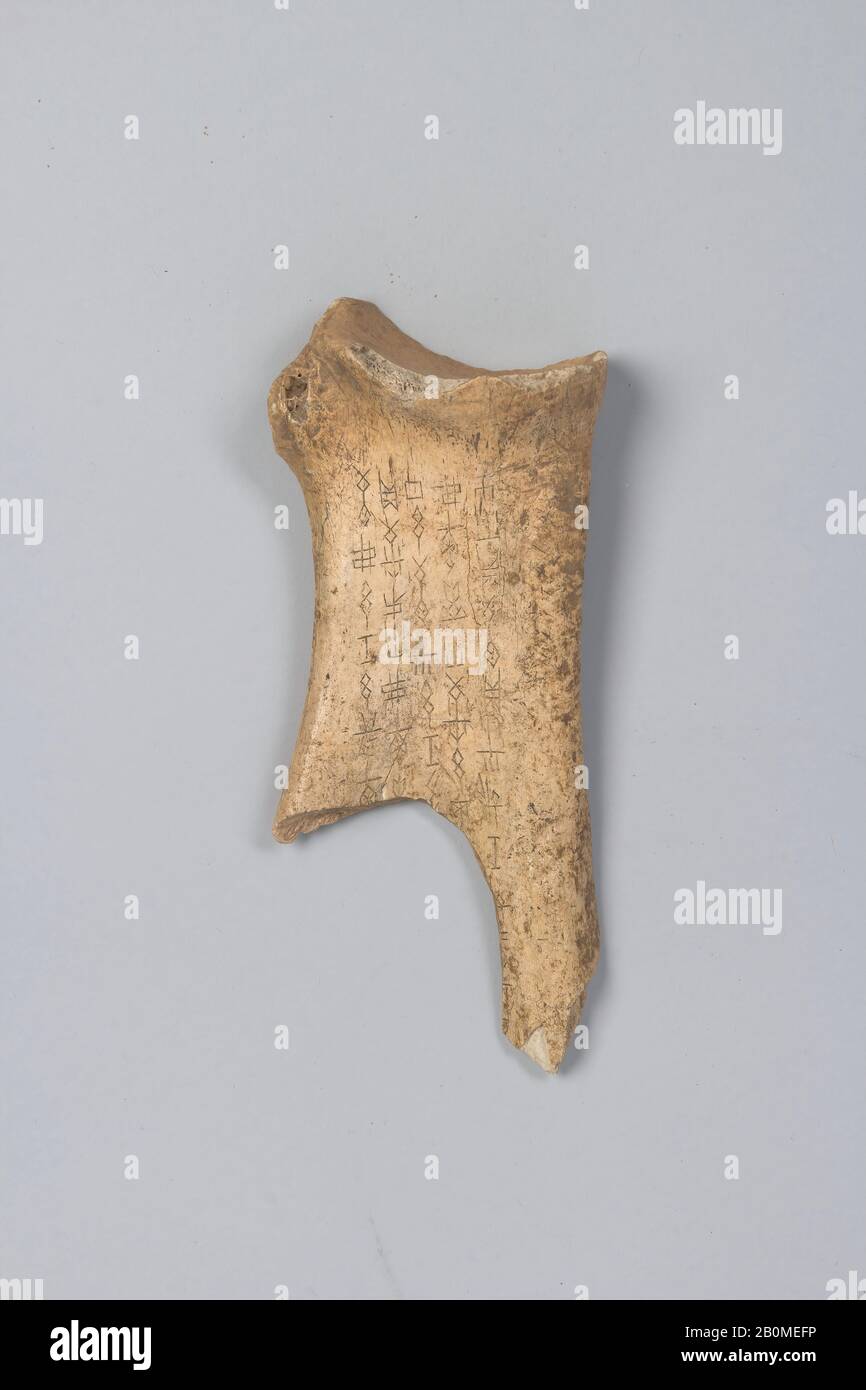 Oracle bone fragment, China, Shang dynasty (ca. 1600–1046 B.C.), Culture: China, Inscribed bone, 3 × 7 in. (7.6 × 17.8 cm), Bone Stock Photohttps://www.alamy.com/image-license-details/?v=1https://www.alamy.com/oracle-bone-fragment-china-shang-dynasty-ca-16001046-bc-culture-china-inscribed-bone-3-7-in-76-178-cm-bone-image344657818.html
Oracle bone fragment, China, Shang dynasty (ca. 1600–1046 B.C.), Culture: China, Inscribed bone, 3 × 7 in. (7.6 × 17.8 cm), Bone Stock Photohttps://www.alamy.com/image-license-details/?v=1https://www.alamy.com/oracle-bone-fragment-china-shang-dynasty-ca-16001046-bc-culture-china-inscribed-bone-3-7-in-76-178-cm-bone-image344657818.htmlRM2B0MEFP–Oracle bone fragment, China, Shang dynasty (ca. 1600–1046 B.C.), Culture: China, Inscribed bone, 3 × 7 in. (7.6 × 17.8 cm), Bone
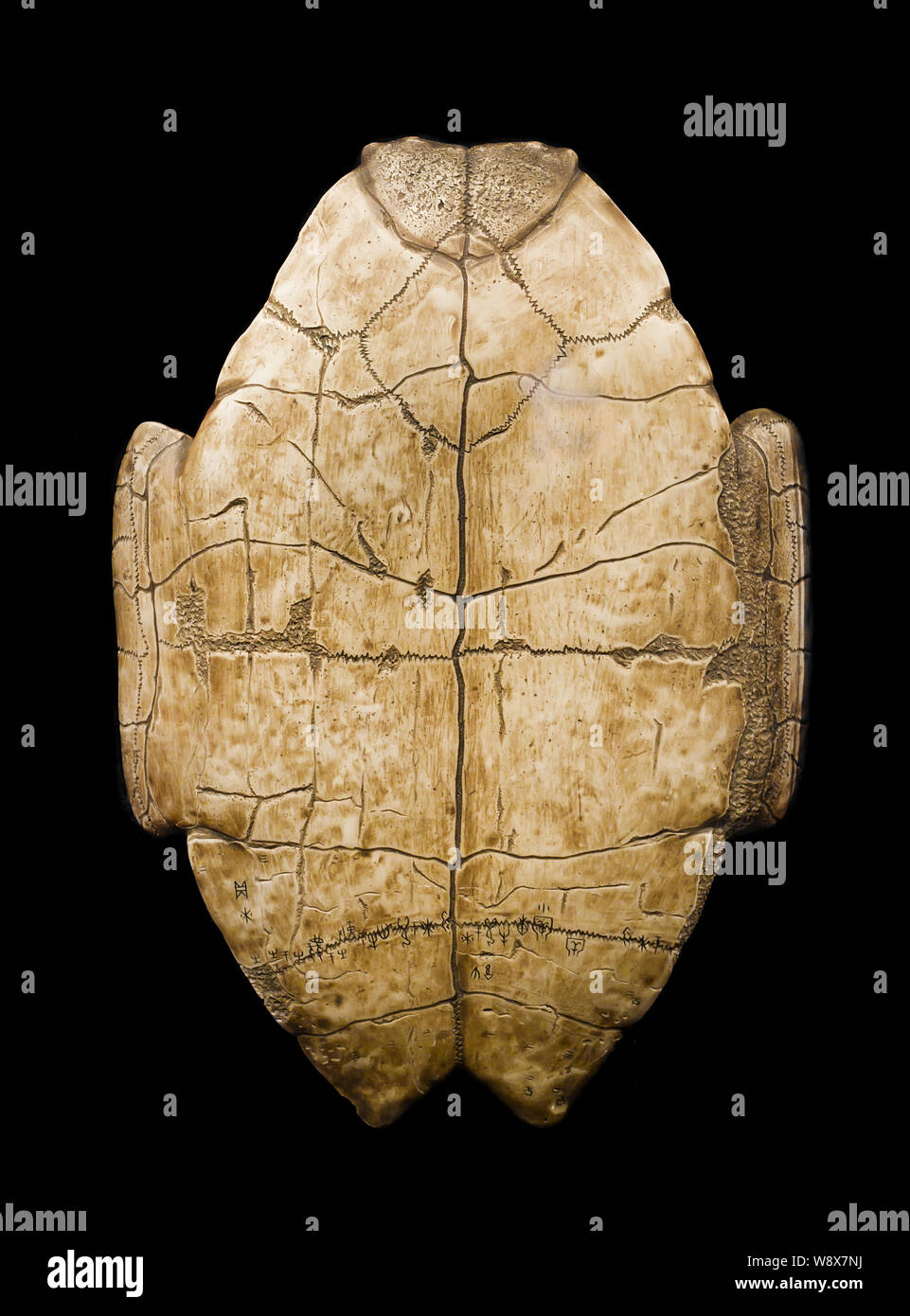 Oracle bone inscriptions of the Shang Dynasty are displayed at Anyang Yin Xu Museum in Anyang city, central Chinas Henan province, May 2010. Stock Photohttps://www.alamy.com/image-license-details/?v=1https://www.alamy.com/oracle-bone-inscriptions-of-the-shang-dynasty-are-displayed-at-anyang-yin-xu-museum-in-anyang-city-central-chinas-henan-province-may-2010-image263649614.html
Oracle bone inscriptions of the Shang Dynasty are displayed at Anyang Yin Xu Museum in Anyang city, central Chinas Henan province, May 2010. Stock Photohttps://www.alamy.com/image-license-details/?v=1https://www.alamy.com/oracle-bone-inscriptions-of-the-shang-dynasty-are-displayed-at-anyang-yin-xu-museum-in-anyang-city-central-chinas-henan-province-may-2010-image263649614.htmlRMW8X7NJ–Oracle bone inscriptions of the Shang Dynasty are displayed at Anyang Yin Xu Museum in Anyang city, central Chinas Henan province, May 2010.
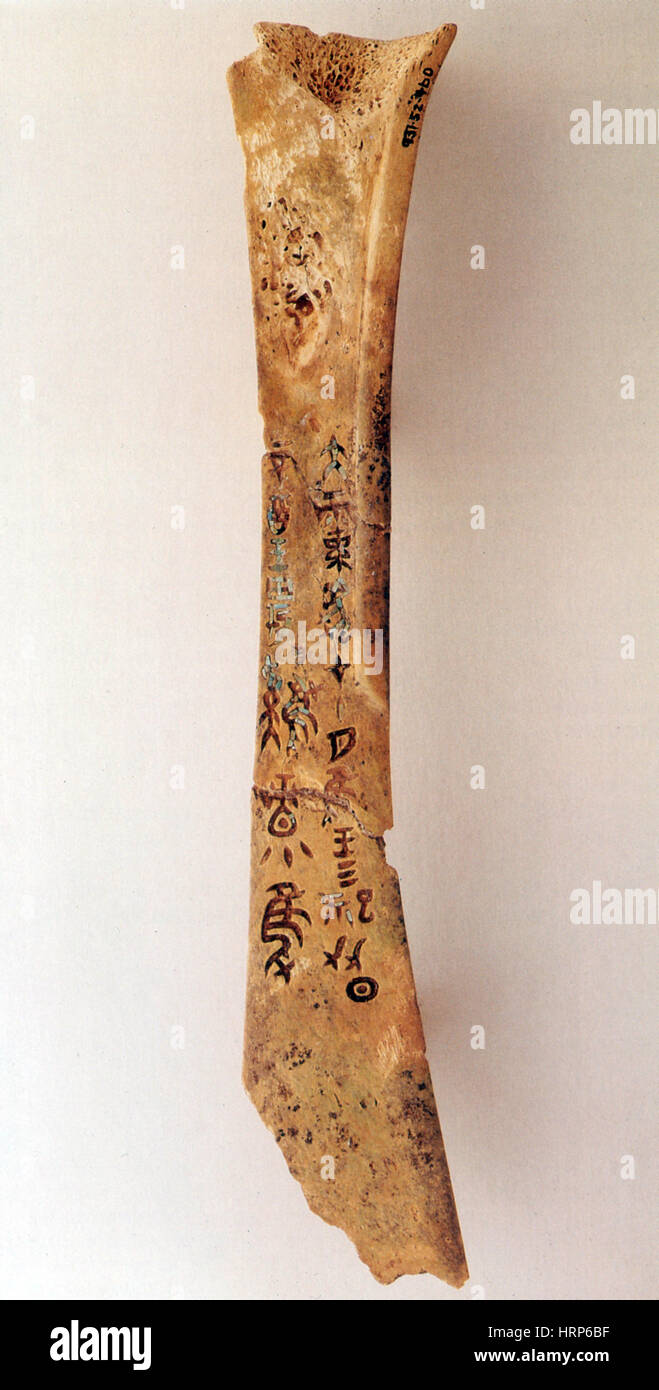 Pyromancy, Ancient Chinese Oracle Bone Stock Photohttps://www.alamy.com/image-license-details/?v=1https://www.alamy.com/stock-photo-pyromancy-ancient-chinese-oracle-bone-135097635.html
Pyromancy, Ancient Chinese Oracle Bone Stock Photohttps://www.alamy.com/image-license-details/?v=1https://www.alamy.com/stock-photo-pyromancy-ancient-chinese-oracle-bone-135097635.htmlRMHRP6BF–Pyromancy, Ancient Chinese Oracle Bone
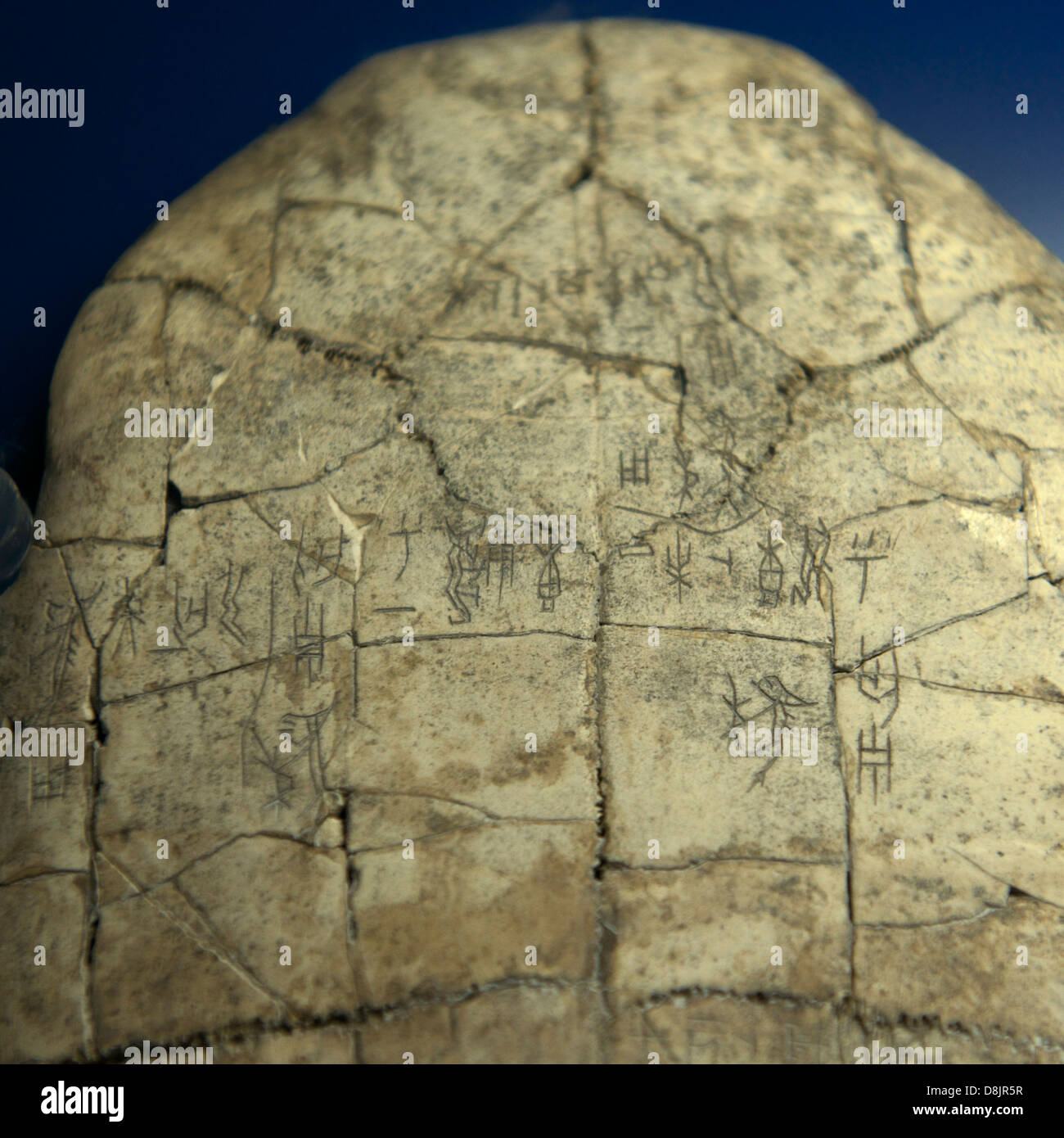 Oracle-Bone Inscriptions - Yin Ruin in Anyang, Henan province. Stock Photohttps://www.alamy.com/image-license-details/?v=1https://www.alamy.com/stock-photo-oracle-bone-inscriptions-yin-ruin-in-anyang-henan-province-56961683.html
Oracle-Bone Inscriptions - Yin Ruin in Anyang, Henan province. Stock Photohttps://www.alamy.com/image-license-details/?v=1https://www.alamy.com/stock-photo-oracle-bone-inscriptions-yin-ruin-in-anyang-henan-province-56961683.htmlRMD8JR5R–Oracle-Bone Inscriptions - Yin Ruin in Anyang, Henan province.
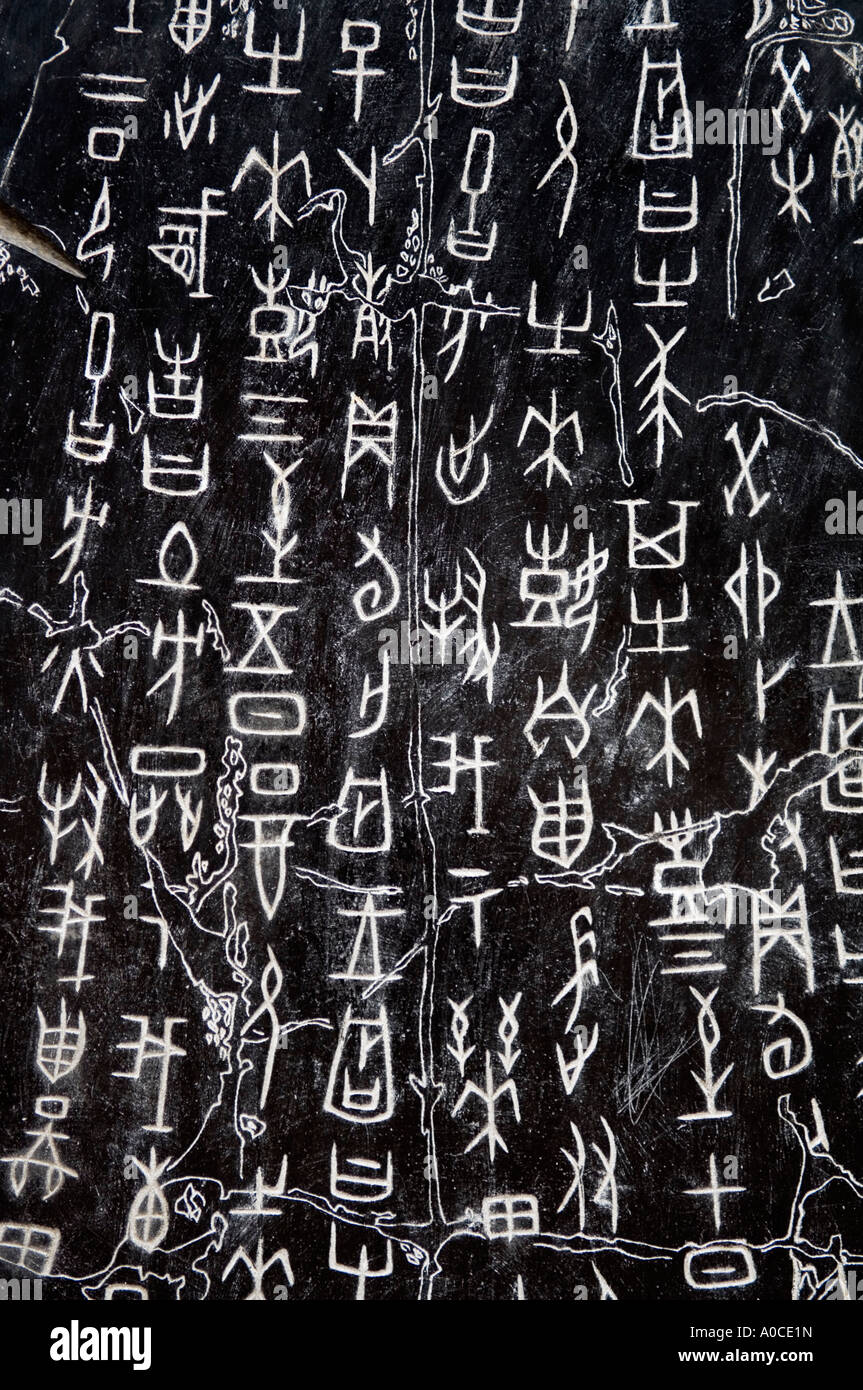 Inscribed Oracle Bone From the Shang Dynasty in Yinxu city, Henan Province, China Stock Photohttps://www.alamy.com/image-license-details/?v=1https://www.alamy.com/inscribed-oracle-bone-from-the-shang-dynasty-in-yinxu-city-henan-province-image9952112.html
Inscribed Oracle Bone From the Shang Dynasty in Yinxu city, Henan Province, China Stock Photohttps://www.alamy.com/image-license-details/?v=1https://www.alamy.com/inscribed-oracle-bone-from-the-shang-dynasty-in-yinxu-city-henan-province-image9952112.htmlRMA0CE1N–Inscribed Oracle Bone From the Shang Dynasty in Yinxu city, Henan Province, China
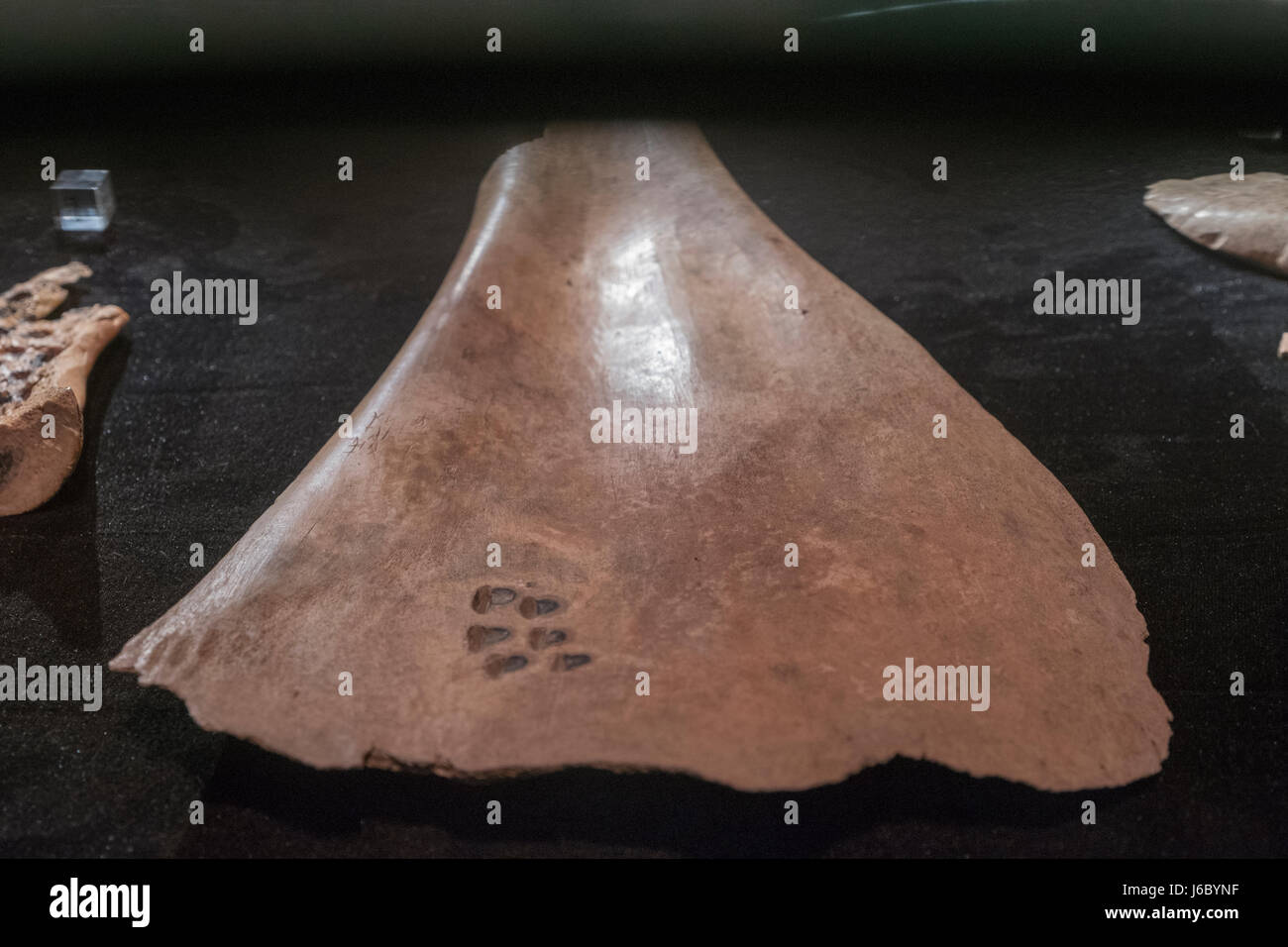 Oracle bone carved with characters. Late Shang Dynasty (13th century B.C.E - mid. 11th century B.C.E) Discovered in Yin relic in Anyang, Henan. Stock Photohttps://www.alamy.com/image-license-details/?v=1https://www.alamy.com/stock-photo-oracle-bone-carved-with-characters-late-shang-dynasty-13th-century-141634123.html
Oracle bone carved with characters. Late Shang Dynasty (13th century B.C.E - mid. 11th century B.C.E) Discovered in Yin relic in Anyang, Henan. Stock Photohttps://www.alamy.com/image-license-details/?v=1https://www.alamy.com/stock-photo-oracle-bone-carved-with-characters-late-shang-dynasty-13th-century-141634123.htmlRMJ6BYNF–Oracle bone carved with characters. Late Shang Dynasty (13th century B.C.E - mid. 11th century B.C.E) Discovered in Yin relic in Anyang, Henan.
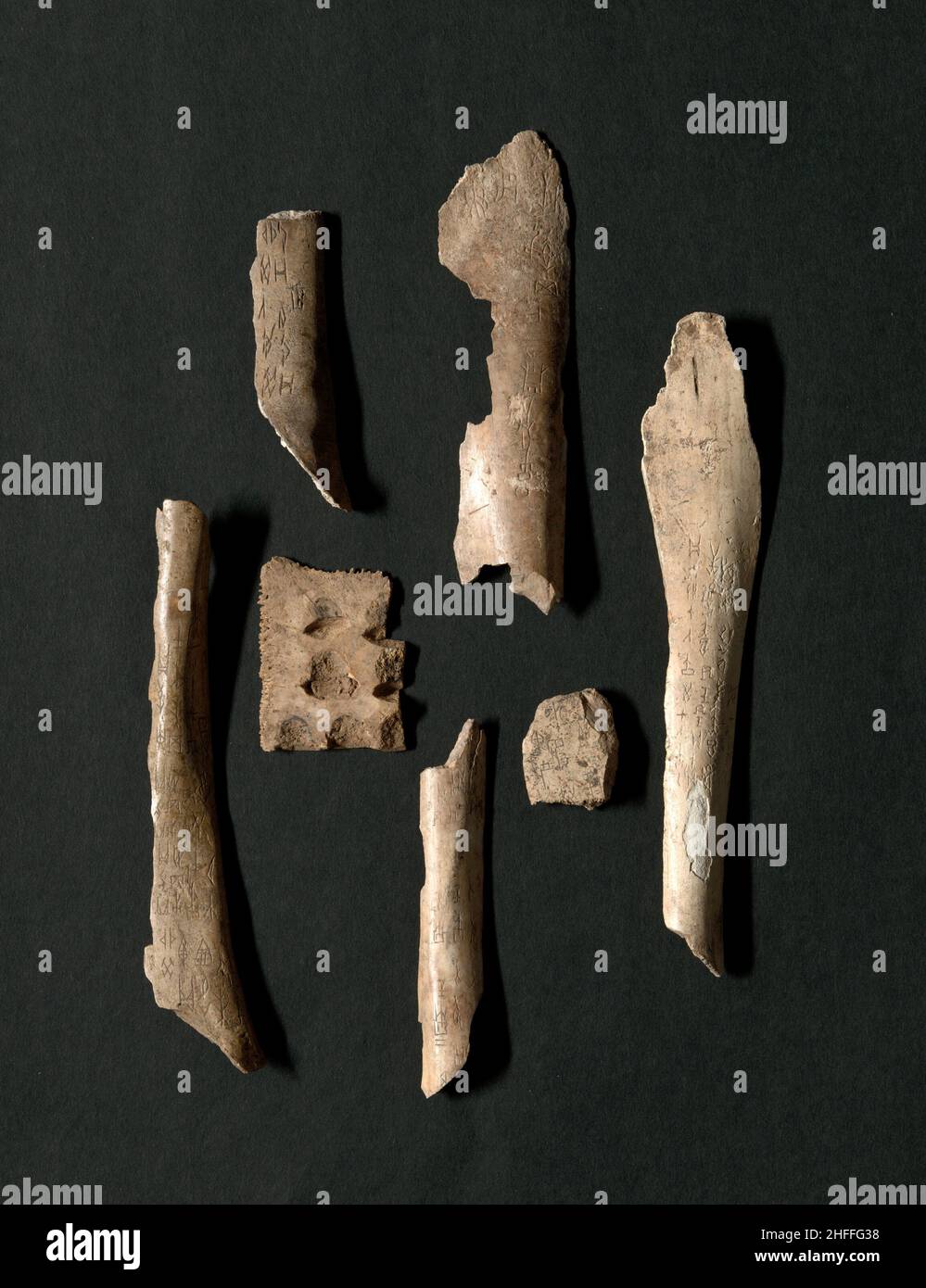 Oracle Bones (76 total), Shang dynasty (about 1600-1046 BC). Segments of turtle plastrons and bones of oxen, polished, burned, with carved inscriptions. Stock Photohttps://www.alamy.com/image-license-details/?v=1https://www.alamy.com/oracle-bones-76-total-shang-dynasty-about-1600-1046-bc-segments-of-turtle-plastrons-and-bones-of-oxen-polished-burned-with-carved-inscriptions-image457031324.html
Oracle Bones (76 total), Shang dynasty (about 1600-1046 BC). Segments of turtle plastrons and bones of oxen, polished, burned, with carved inscriptions. Stock Photohttps://www.alamy.com/image-license-details/?v=1https://www.alamy.com/oracle-bones-76-total-shang-dynasty-about-1600-1046-bc-segments-of-turtle-plastrons-and-bones-of-oxen-polished-burned-with-carved-inscriptions-image457031324.htmlRM2HFFG38–Oracle Bones (76 total), Shang dynasty (about 1600-1046 BC). Segments of turtle plastrons and bones of oxen, polished, burned, with carved inscriptions.
 Chinese oracle bone. China, 16th-10th century BC. Diviners of the Shang dynasty (16th-10th centuries B.C.) produced oracles by reading cracks on ox bones. Such bones bear the earliest writing known in China. Source: Or. 7694, 1535. Language: Chinese. Stock Photohttps://www.alamy.com/image-license-details/?v=1https://www.alamy.com/chinese-oracle-bone-china-16th-10th-century-bc-diviners-of-the-shang-dynasty-16th-10th-centuries-bc-produced-oracles-by-reading-cracks-on-ox-bones-such-bones-bear-the-earliest-writing-known-in-china-source-or-7694-1535-language-chinese-image226991658.html
Chinese oracle bone. China, 16th-10th century BC. Diviners of the Shang dynasty (16th-10th centuries B.C.) produced oracles by reading cracks on ox bones. Such bones bear the earliest writing known in China. Source: Or. 7694, 1535. Language: Chinese. Stock Photohttps://www.alamy.com/image-license-details/?v=1https://www.alamy.com/chinese-oracle-bone-china-16th-10th-century-bc-diviners-of-the-shang-dynasty-16th-10th-centuries-bc-produced-oracles-by-reading-cracks-on-ox-bones-such-bones-bear-the-earliest-writing-known-in-china-source-or-7694-1535-language-chinese-image226991658.htmlRMR58A4X–Chinese oracle bone. China, 16th-10th century BC. Diviners of the Shang dynasty (16th-10th centuries B.C.) produced oracles by reading cracks on ox bones. Such bones bear the earliest writing known in China. Source: Or. 7694, 1535. Language: Chinese.
 Oracle bone fragment. Culture: China. Dimensions: 1 x 3/8 in. (2.5 x 1 cm). Museum: Metropolitan Museum of Art, New York, USA. Stock Photohttps://www.alamy.com/image-license-details/?v=1https://www.alamy.com/oracle-bone-fragment-culture-china-dimensions-1-x-38-in-25-x-1-cm-museum-metropolitan-museum-of-art-new-york-usa-image213318413.html
Oracle bone fragment. Culture: China. Dimensions: 1 x 3/8 in. (2.5 x 1 cm). Museum: Metropolitan Museum of Art, New York, USA. Stock Photohttps://www.alamy.com/image-license-details/?v=1https://www.alamy.com/oracle-bone-fragment-culture-china-dimensions-1-x-38-in-25-x-1-cm-museum-metropolitan-museum-of-art-new-york-usa-image213318413.htmlRMPB1DPN–Oracle bone fragment. Culture: China. Dimensions: 1 x 3/8 in. (2.5 x 1 cm). Museum: Metropolitan Museum of Art, New York, USA.
 Oracle bone fragment China. Oracle bone fragment. China. Inscribed bone. Shang dynasty (ca. 1600–1046 B.C.). Bone Stock Photohttps://www.alamy.com/image-license-details/?v=1https://www.alamy.com/oracle-bone-fragment-china-oracle-bone-fragment-china-inscribed-bone-shang-dynasty-ca-16001046-bc-bone-image457897915.html
Oracle bone fragment China. Oracle bone fragment. China. Inscribed bone. Shang dynasty (ca. 1600–1046 B.C.). Bone Stock Photohttps://www.alamy.com/image-license-details/?v=1https://www.alamy.com/oracle-bone-fragment-china-oracle-bone-fragment-china-inscribed-bone-shang-dynasty-ca-16001046-bc-bone-image457897915.htmlRM2HGY1CY–Oracle bone fragment China. Oracle bone fragment. China. Inscribed bone. Shang dynasty (ca. 1600–1046 B.C.). Bone
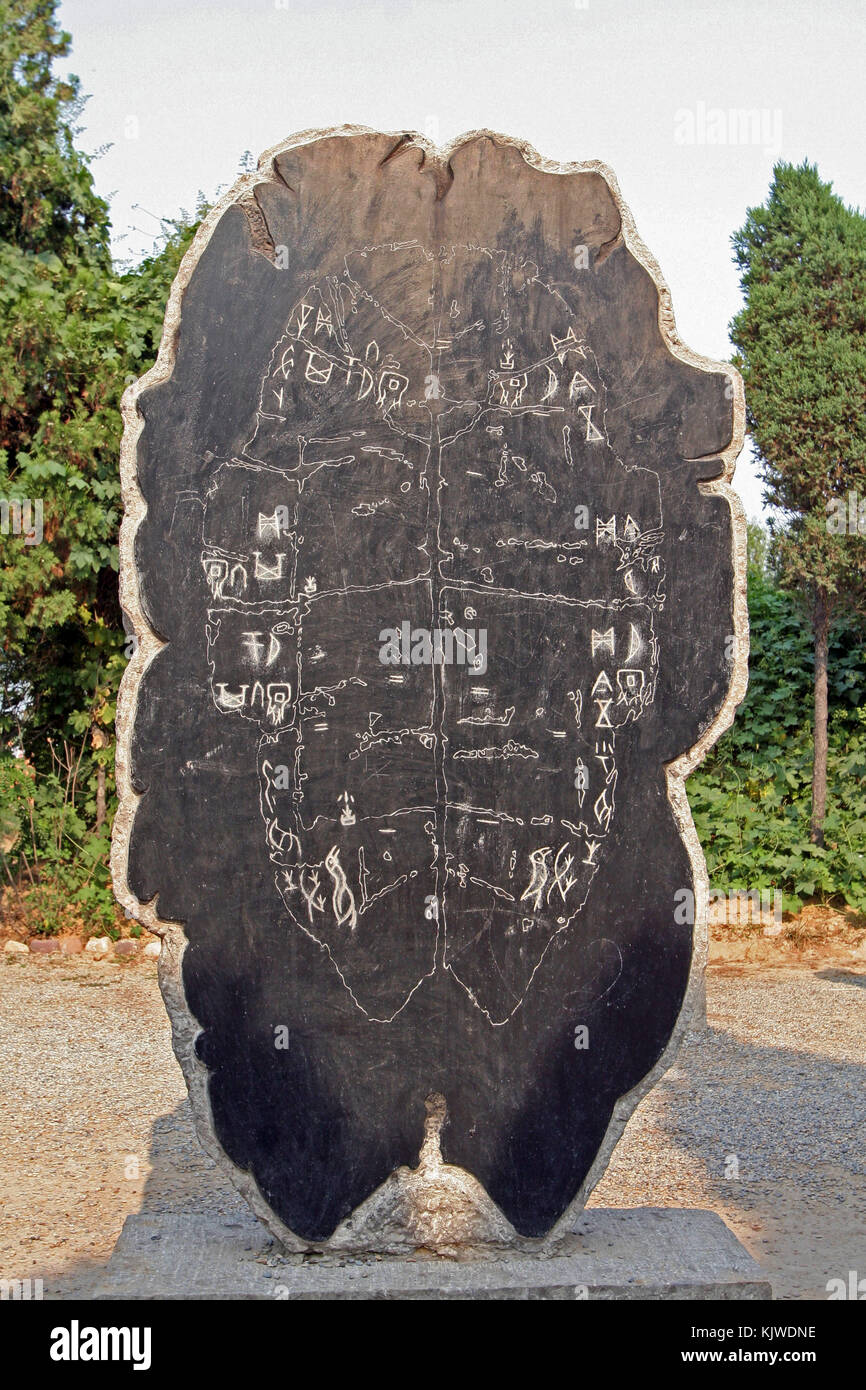 November 27, 2017 - China - CHINA-November 2017:(EDITORIAL USE ONLY. CHINA OUT) An ancient oracle-bone inscriptions. Chinese oracle-bone inscriptions have recently been included in the Memory of the World Register, a list of documentary heritage of the UNESCO, according to the UN agency's website.Oracle-bone inscriptions were excavated from the Ruins of Yin in Anyang, Central China's Henan Province. Inscriptions on tortoise shells and animal bones represent the original characters of the Chinese written language, which date back to the Shang Dynasty (Credit Image: © SIPA Asia via ZUMA Wire) Stock Photohttps://www.alamy.com/image-license-details/?v=1https://www.alamy.com/stock-image-november-27-2017-china-china-november-2017editorial-use-only-china-166516714.html
November 27, 2017 - China - CHINA-November 2017:(EDITORIAL USE ONLY. CHINA OUT) An ancient oracle-bone inscriptions. Chinese oracle-bone inscriptions have recently been included in the Memory of the World Register, a list of documentary heritage of the UNESCO, according to the UN agency's website.Oracle-bone inscriptions were excavated from the Ruins of Yin in Anyang, Central China's Henan Province. Inscriptions on tortoise shells and animal bones represent the original characters of the Chinese written language, which date back to the Shang Dynasty (Credit Image: © SIPA Asia via ZUMA Wire) Stock Photohttps://www.alamy.com/image-license-details/?v=1https://www.alamy.com/stock-image-november-27-2017-china-china-november-2017editorial-use-only-china-166516714.htmlRMKJWDNE–November 27, 2017 - China - CHINA-November 2017:(EDITORIAL USE ONLY. CHINA OUT) An ancient oracle-bone inscriptions. Chinese oracle-bone inscriptions have recently been included in the Memory of the World Register, a list of documentary heritage of the UNESCO, according to the UN agency's website.Oracle-bone inscriptions were excavated from the Ruins of Yin in Anyang, Central China's Henan Province. Inscriptions on tortoise shells and animal bones represent the original characters of the Chinese written language, which date back to the Shang Dynasty (Credit Image: © SIPA Asia via ZUMA Wire)
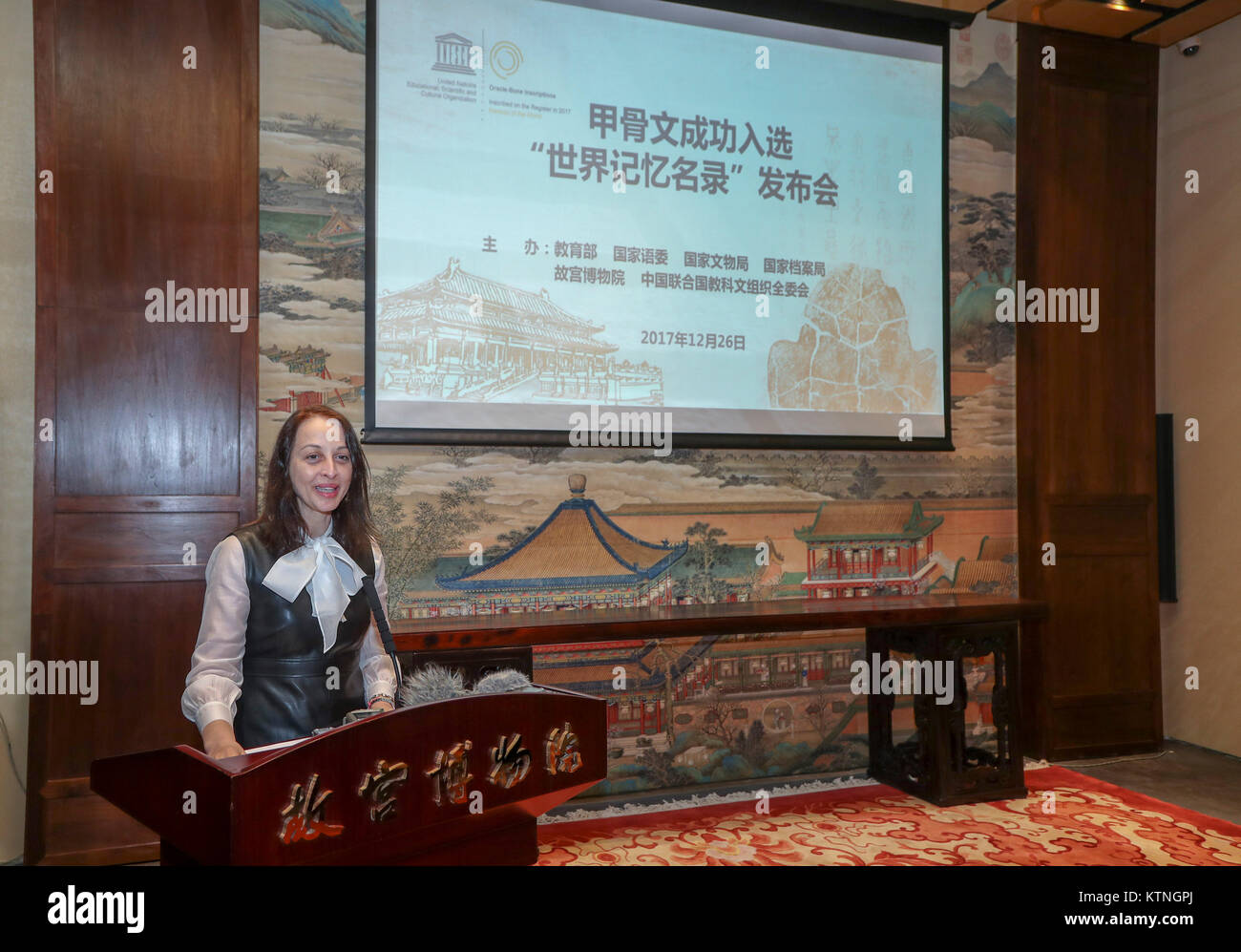 (171226) -- BEIJING, Dec. 26, 2017 (Xinhua) -- Marielza Oliveira, director of UNESCO's Beijing office, speaks at a press conference on the Chinese oracle-bone inscriptions at the Palace Museum in Beijing, capital of China, Dec. 26, 2017. Chinese oracle bone inscriptions were included on the UNESCO Memory of the World Register, Chinese authorities announced Tuesday. Oracle bones are pieces of ox scapula or turtle plastron, which were used for divination during the late Shang Dynasty (1600-1046 B.C.). They bear the earliest significant corpus of ancient Chinese writing and contain important hist Stock Photohttps://www.alamy.com/image-license-details/?v=1https://www.alamy.com/stock-photo-171226-beijing-dec-26-2017-xinhua-marielza-oliveira-director-of-unescos-170119226.html
(171226) -- BEIJING, Dec. 26, 2017 (Xinhua) -- Marielza Oliveira, director of UNESCO's Beijing office, speaks at a press conference on the Chinese oracle-bone inscriptions at the Palace Museum in Beijing, capital of China, Dec. 26, 2017. Chinese oracle bone inscriptions were included on the UNESCO Memory of the World Register, Chinese authorities announced Tuesday. Oracle bones are pieces of ox scapula or turtle plastron, which were used for divination during the late Shang Dynasty (1600-1046 B.C.). They bear the earliest significant corpus of ancient Chinese writing and contain important hist Stock Photohttps://www.alamy.com/image-license-details/?v=1https://www.alamy.com/stock-photo-171226-beijing-dec-26-2017-xinhua-marielza-oliveira-director-of-unescos-170119226.htmlRMKTNGPJ–(171226) -- BEIJING, Dec. 26, 2017 (Xinhua) -- Marielza Oliveira, director of UNESCO's Beijing office, speaks at a press conference on the Chinese oracle-bone inscriptions at the Palace Museum in Beijing, capital of China, Dec. 26, 2017. Chinese oracle bone inscriptions were included on the UNESCO Memory of the World Register, Chinese authorities announced Tuesday. Oracle bones are pieces of ox scapula or turtle plastron, which were used for divination during the late Shang Dynasty (1600-1046 B.C.). They bear the earliest significant corpus of ancient Chinese writing and contain important hist
 (171226) -- BEIJING, Dec. 26, 2017 () -- A press conference on the Chinese oracle bone inscriptions is held at the Palace Museum in Beijing, capital of China, Dec. 26, 2017. Chinese oracle bone inscriptions were included on the UNESCO Memory of the World Register, Chinese authorities announced Tuesday. Oracle bones are pieces of ox scapula or turtle plastron, which were used for divination during the late Shang Dynasty (1600-1046 B.C.). They bear the earliest significant corpus of ancient Chinese writing and contain important historical information about the Shang. Around 160,000 pieces of ora Stock Photohttps://www.alamy.com/image-license-details/?v=1https://www.alamy.com/171226-beijing-dec-26-2017-a-press-conference-on-the-chinese-oracle-bone-inscriptions-is-held-at-the-palace-museum-in-beijing-capital-of-china-dec-26-2017-chinese-oracle-bone-inscriptions-were-included-on-the-unesco-memory-of-the-world-register-chinese-authorities-announced-tuesday-oracle-bones-are-pieces-of-ox-scapula-or-turtle-plastron-which-were-used-for-divination-during-the-late-shang-dynasty-1600-1046-bc-they-bear-the-earliest-significant-corpus-of-ancient-chinese-writing-and-contain-important-historical-information-about-the-shang-around-160000-pieces-of-ora-image564204978.html
(171226) -- BEIJING, Dec. 26, 2017 () -- A press conference on the Chinese oracle bone inscriptions is held at the Palace Museum in Beijing, capital of China, Dec. 26, 2017. Chinese oracle bone inscriptions were included on the UNESCO Memory of the World Register, Chinese authorities announced Tuesday. Oracle bones are pieces of ox scapula or turtle plastron, which were used for divination during the late Shang Dynasty (1600-1046 B.C.). They bear the earliest significant corpus of ancient Chinese writing and contain important historical information about the Shang. Around 160,000 pieces of ora Stock Photohttps://www.alamy.com/image-license-details/?v=1https://www.alamy.com/171226-beijing-dec-26-2017-a-press-conference-on-the-chinese-oracle-bone-inscriptions-is-held-at-the-palace-museum-in-beijing-capital-of-china-dec-26-2017-chinese-oracle-bone-inscriptions-were-included-on-the-unesco-memory-of-the-world-register-chinese-authorities-announced-tuesday-oracle-bones-are-pieces-of-ox-scapula-or-turtle-plastron-which-were-used-for-divination-during-the-late-shang-dynasty-1600-1046-bc-they-bear-the-earliest-significant-corpus-of-ancient-chinese-writing-and-contain-important-historical-information-about-the-shang-around-160000-pieces-of-ora-image564204978.htmlRM2RNWN5P–(171226) -- BEIJING, Dec. 26, 2017 () -- A press conference on the Chinese oracle bone inscriptions is held at the Palace Museum in Beijing, capital of China, Dec. 26, 2017. Chinese oracle bone inscriptions were included on the UNESCO Memory of the World Register, Chinese authorities announced Tuesday. Oracle bones are pieces of ox scapula or turtle plastron, which were used for divination during the late Shang Dynasty (1600-1046 B.C.). They bear the earliest significant corpus of ancient Chinese writing and contain important historical information about the Shang. Around 160,000 pieces of ora
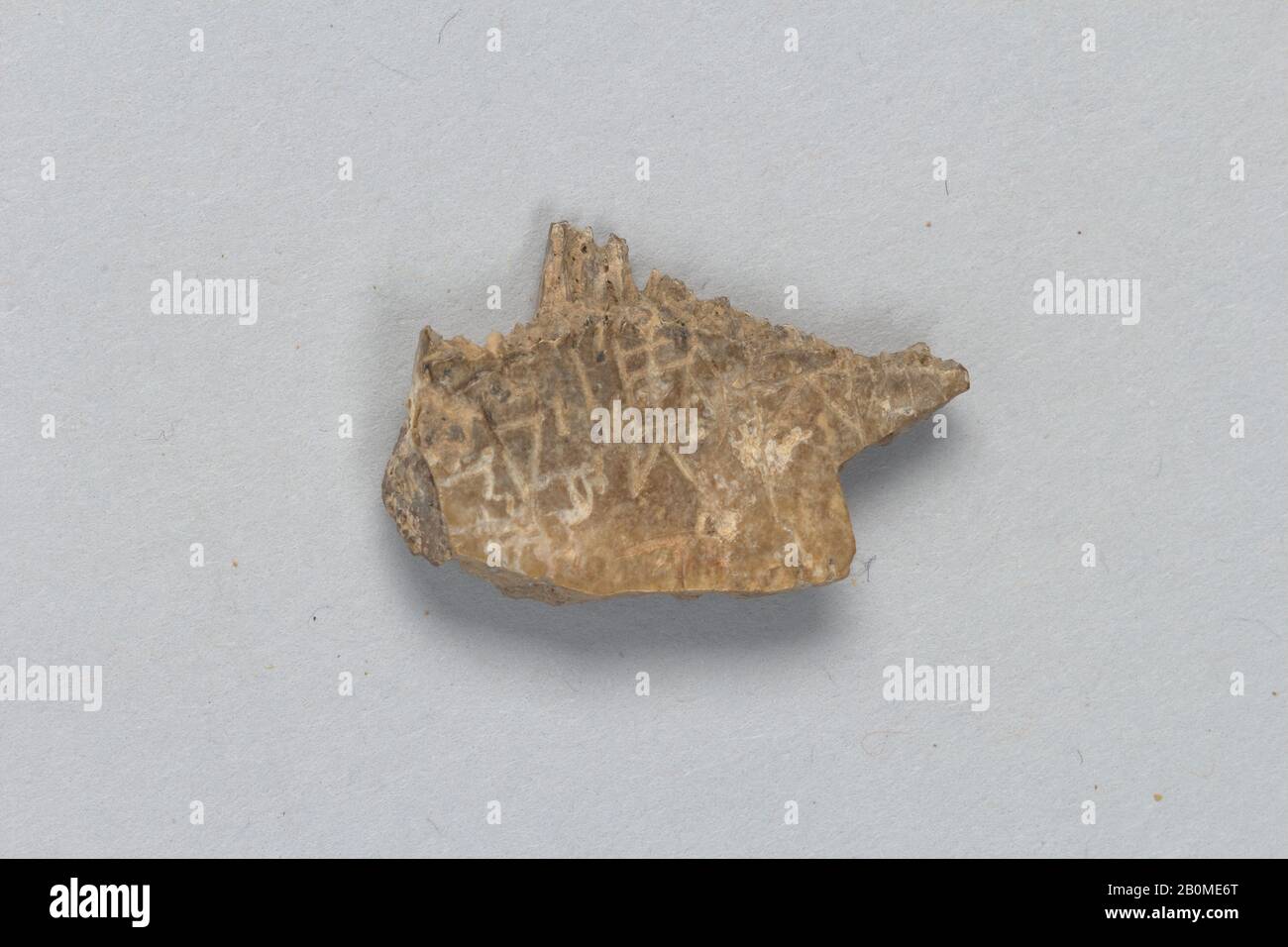 Oracle bone fragment, China, Shang dynasty (ca. 1600–1046 B.C.), Culture: China, Inscribed bone, 15/16 x 11/16 in. (2.4 x 1.7 cm), Bone Stock Photohttps://www.alamy.com/image-license-details/?v=1https://www.alamy.com/oracle-bone-fragment-china-shang-dynasty-ca-16001046-bc-culture-china-inscribed-bone-1516-x-1116-in-24-x-17-cm-bone-image344657568.html
Oracle bone fragment, China, Shang dynasty (ca. 1600–1046 B.C.), Culture: China, Inscribed bone, 15/16 x 11/16 in. (2.4 x 1.7 cm), Bone Stock Photohttps://www.alamy.com/image-license-details/?v=1https://www.alamy.com/oracle-bone-fragment-china-shang-dynasty-ca-16001046-bc-culture-china-inscribed-bone-1516-x-1116-in-24-x-17-cm-bone-image344657568.htmlRM2B0ME6T–Oracle bone fragment, China, Shang dynasty (ca. 1600–1046 B.C.), Culture: China, Inscribed bone, 15/16 x 11/16 in. (2.4 x 1.7 cm), Bone
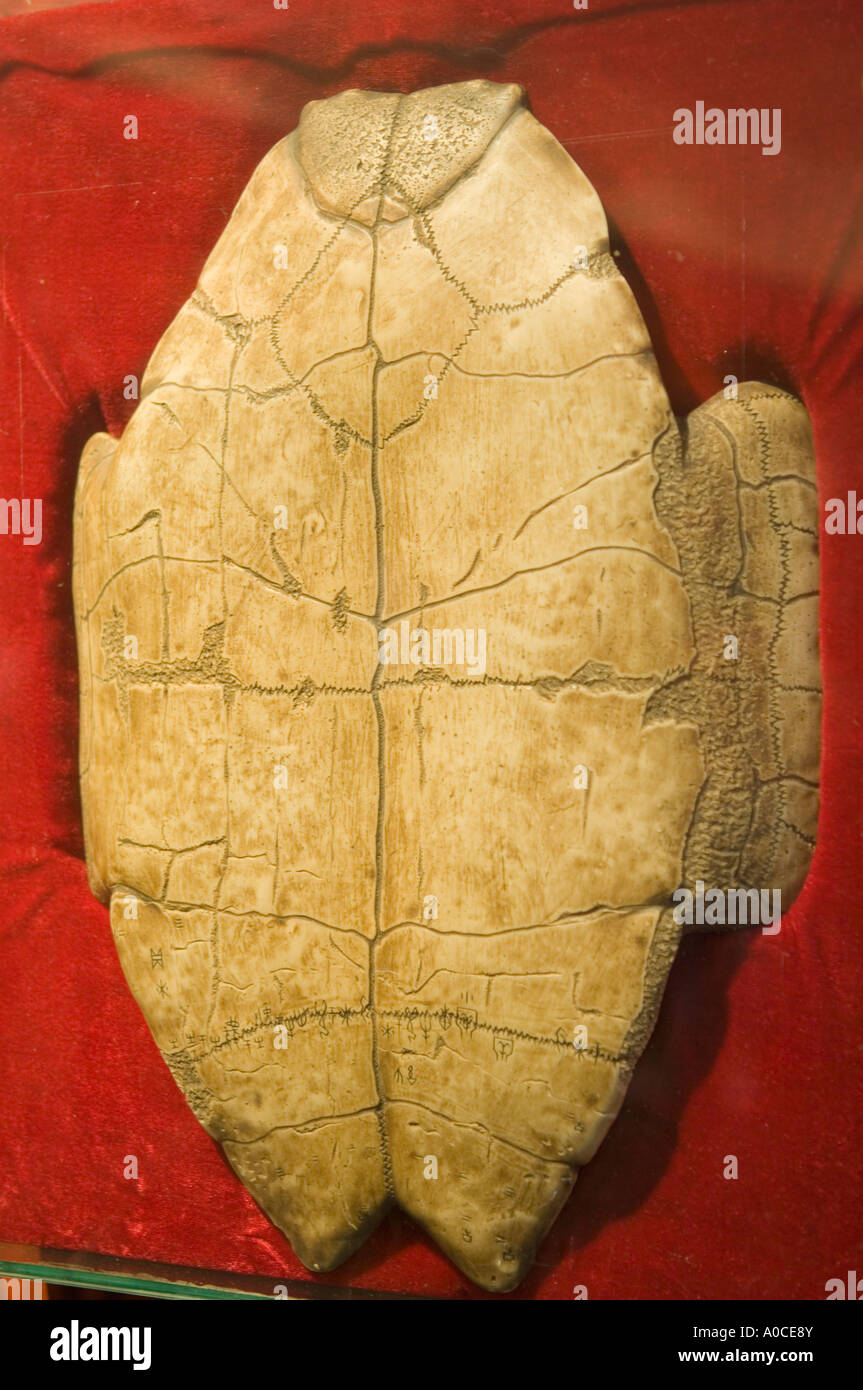 the biggest Inscribed Oracle Bone From the Shang Dynasty in Yinxu city, Henan Province, China Stock Photohttps://www.alamy.com/image-license-details/?v=1https://www.alamy.com/the-biggest-inscribed-oracle-bone-from-the-shang-dynasty-in-yinxu-image9952202.html
the biggest Inscribed Oracle Bone From the Shang Dynasty in Yinxu city, Henan Province, China Stock Photohttps://www.alamy.com/image-license-details/?v=1https://www.alamy.com/the-biggest-inscribed-oracle-bone-from-the-shang-dynasty-in-yinxu-image9952202.htmlRMA0CE8Y–the biggest Inscribed Oracle Bone From the Shang Dynasty in Yinxu city, Henan Province, China
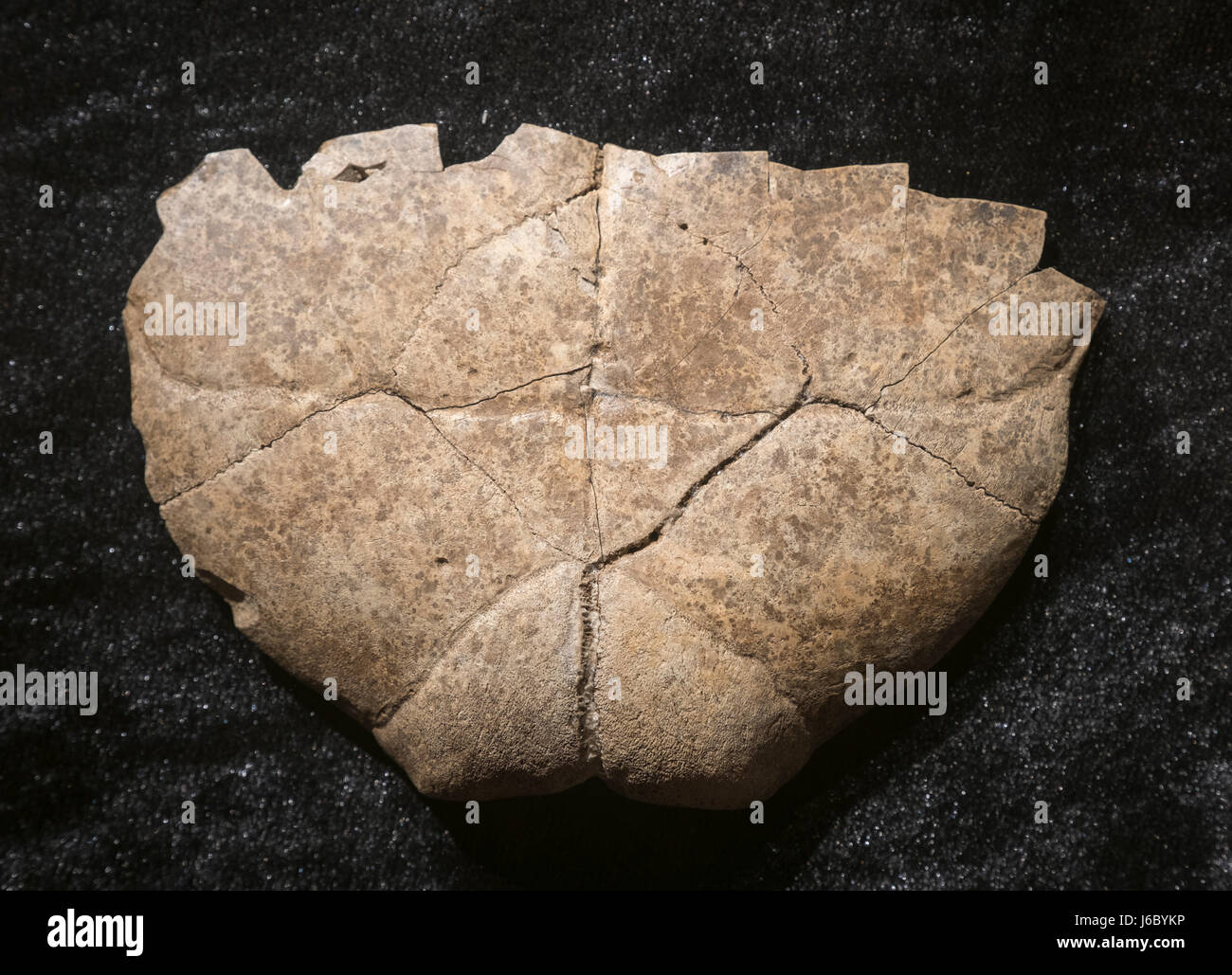 Oracle bone carved with characters. Late Shang Dynasty (13th century B.C.E - mid. 11th century B.C.E) Discovered in Yin relic in Anyang, Henan. Stock Photohttps://www.alamy.com/image-license-details/?v=1https://www.alamy.com/stock-photo-oracle-bone-carved-with-characters-late-shang-dynasty-13th-century-141634074.html
Oracle bone carved with characters. Late Shang Dynasty (13th century B.C.E - mid. 11th century B.C.E) Discovered in Yin relic in Anyang, Henan. Stock Photohttps://www.alamy.com/image-license-details/?v=1https://www.alamy.com/stock-photo-oracle-bone-carved-with-characters-late-shang-dynasty-13th-century-141634074.htmlRMJ6BYKP–Oracle bone carved with characters. Late Shang Dynasty (13th century B.C.E - mid. 11th century B.C.E) Discovered in Yin relic in Anyang, Henan.
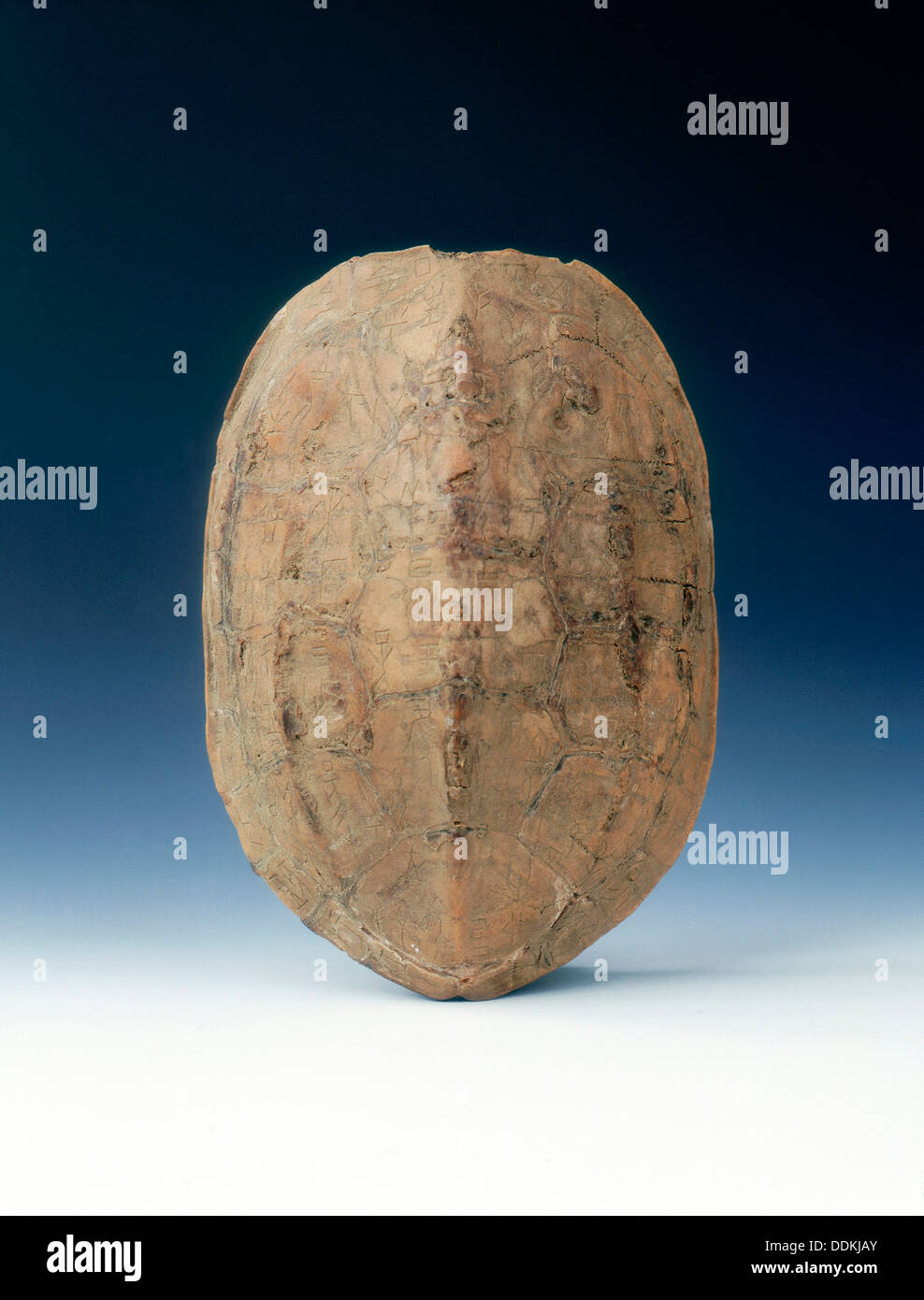 Petrified tortoise shell with oracle bone inscriptions, possibly Shang Dynasty, China, c1400 BC. Artist: Unknown Stock Photohttps://www.alamy.com/image-license-details/?v=1https://www.alamy.com/petrified-tortoise-shell-with-oracle-bone-inscriptions-possibly-shang-image60053139.html
Petrified tortoise shell with oracle bone inscriptions, possibly Shang Dynasty, China, c1400 BC. Artist: Unknown Stock Photohttps://www.alamy.com/image-license-details/?v=1https://www.alamy.com/petrified-tortoise-shell-with-oracle-bone-inscriptions-possibly-shang-image60053139.htmlRMDDKJAY–Petrified tortoise shell with oracle bone inscriptions, possibly Shang Dynasty, China, c1400 BC. Artist: Unknown
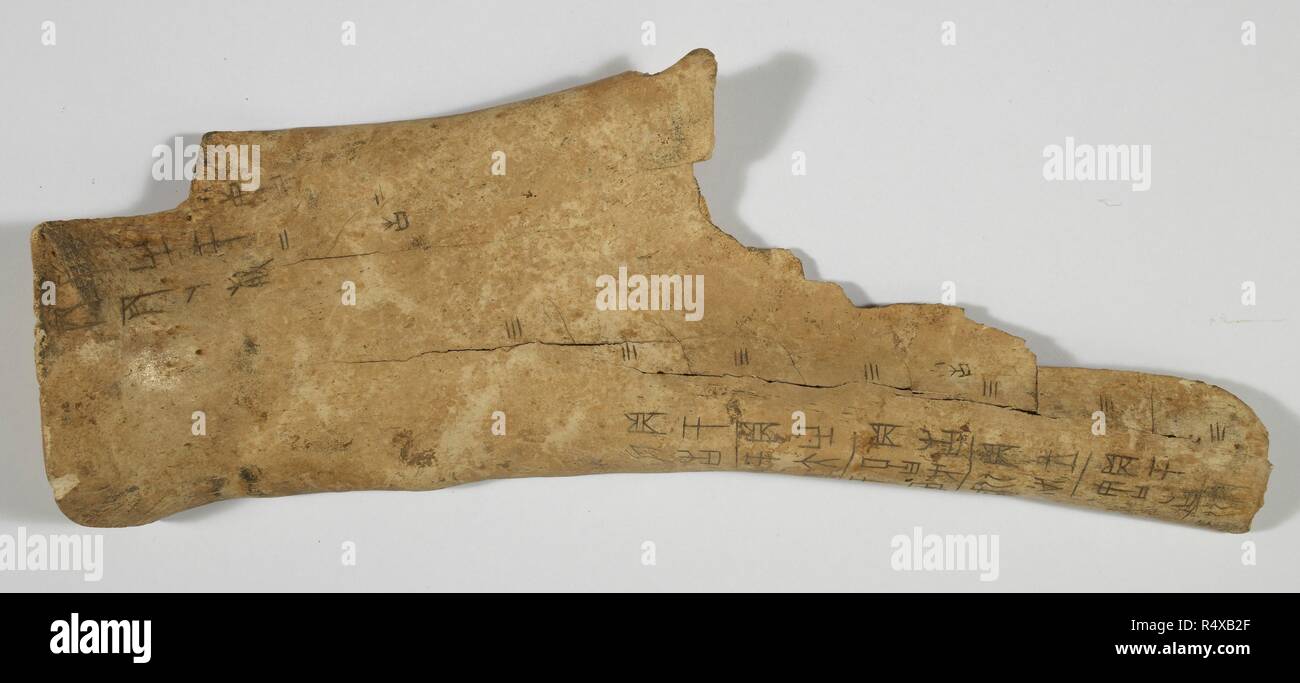 Chinese oracle bone. China, 16th-10th century BC. Diviners of the Shang dynasty (16th-10th centuries B.C.) produced oracles by reading cracks on ox bones. Such bones bear the earliest writing known in China. Originally published/produced in China, 16th-10th century BC. . Source: Or. 7694, 1601. Stock Photohttps://www.alamy.com/image-license-details/?v=1https://www.alamy.com/chinese-oracle-bone-china-16th-10th-century-bc-diviners-of-the-shang-dynasty-16th-10th-centuries-bc-produced-oracles-by-reading-cracks-on-ox-bones-such-bones-bear-the-earliest-writing-known-in-china-originally-publishedproduced-in-china-16th-10th-century-bc-source-or-7694-1601-image226772855.html
Chinese oracle bone. China, 16th-10th century BC. Diviners of the Shang dynasty (16th-10th centuries B.C.) produced oracles by reading cracks on ox bones. Such bones bear the earliest writing known in China. Originally published/produced in China, 16th-10th century BC. . Source: Or. 7694, 1601. Stock Photohttps://www.alamy.com/image-license-details/?v=1https://www.alamy.com/chinese-oracle-bone-china-16th-10th-century-bc-diviners-of-the-shang-dynasty-16th-10th-centuries-bc-produced-oracles-by-reading-cracks-on-ox-bones-such-bones-bear-the-earliest-writing-known-in-china-originally-publishedproduced-in-china-16th-10th-century-bc-source-or-7694-1601-image226772855.htmlRMR4XB2F–Chinese oracle bone. China, 16th-10th century BC. Diviners of the Shang dynasty (16th-10th centuries B.C.) produced oracles by reading cracks on ox bones. Such bones bear the earliest writing known in China. Originally published/produced in China, 16th-10th century BC. . Source: Or. 7694, 1601.
 Oracle bone fragment. Culture: China. Dimensions: 3 1/2 × 8 in. (8.9 × 20.3 cm). Museum: Metropolitan Museum of Art, New York, USA. Stock Photohttps://www.alamy.com/image-license-details/?v=1https://www.alamy.com/oracle-bone-fragment-culture-china-dimensions-3-12-8-in-89-203-cm-museum-metropolitan-museum-of-art-new-york-usa-image213434949.html
Oracle bone fragment. Culture: China. Dimensions: 3 1/2 × 8 in. (8.9 × 20.3 cm). Museum: Metropolitan Museum of Art, New York, USA. Stock Photohttps://www.alamy.com/image-license-details/?v=1https://www.alamy.com/oracle-bone-fragment-culture-china-dimensions-3-12-8-in-89-203-cm-museum-metropolitan-museum-of-art-new-york-usa-image213434949.htmlRMPB6PCN–Oracle bone fragment. Culture: China. Dimensions: 3 1/2 × 8 in. (8.9 × 20.3 cm). Museum: Metropolitan Museum of Art, New York, USA.
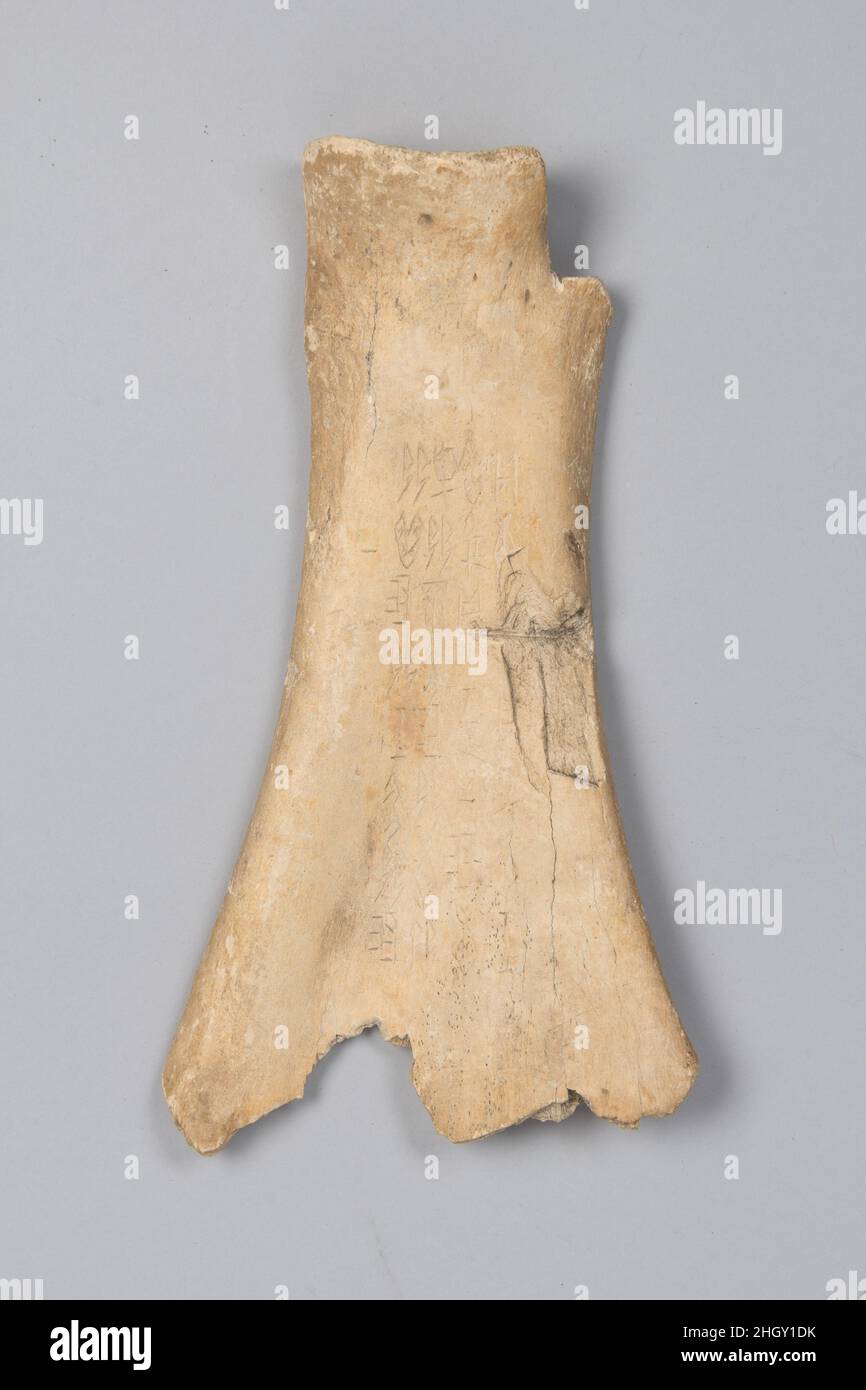 Oracle bone China. Oracle bone. China. Inscribed bone. Shang dynasty (ca. 1600–1046 B.C.). Bone Stock Photohttps://www.alamy.com/image-license-details/?v=1https://www.alamy.com/oracle-bone-china-oracle-bone-china-inscribed-bone-shang-dynasty-ca-16001046-bc-bone-image457897935.html
Oracle bone China. Oracle bone. China. Inscribed bone. Shang dynasty (ca. 1600–1046 B.C.). Bone Stock Photohttps://www.alamy.com/image-license-details/?v=1https://www.alamy.com/oracle-bone-china-oracle-bone-china-inscribed-bone-shang-dynasty-ca-16001046-bc-bone-image457897935.htmlRM2HGY1DK–Oracle bone China. Oracle bone. China. Inscribed bone. Shang dynasty (ca. 1600–1046 B.C.). Bone
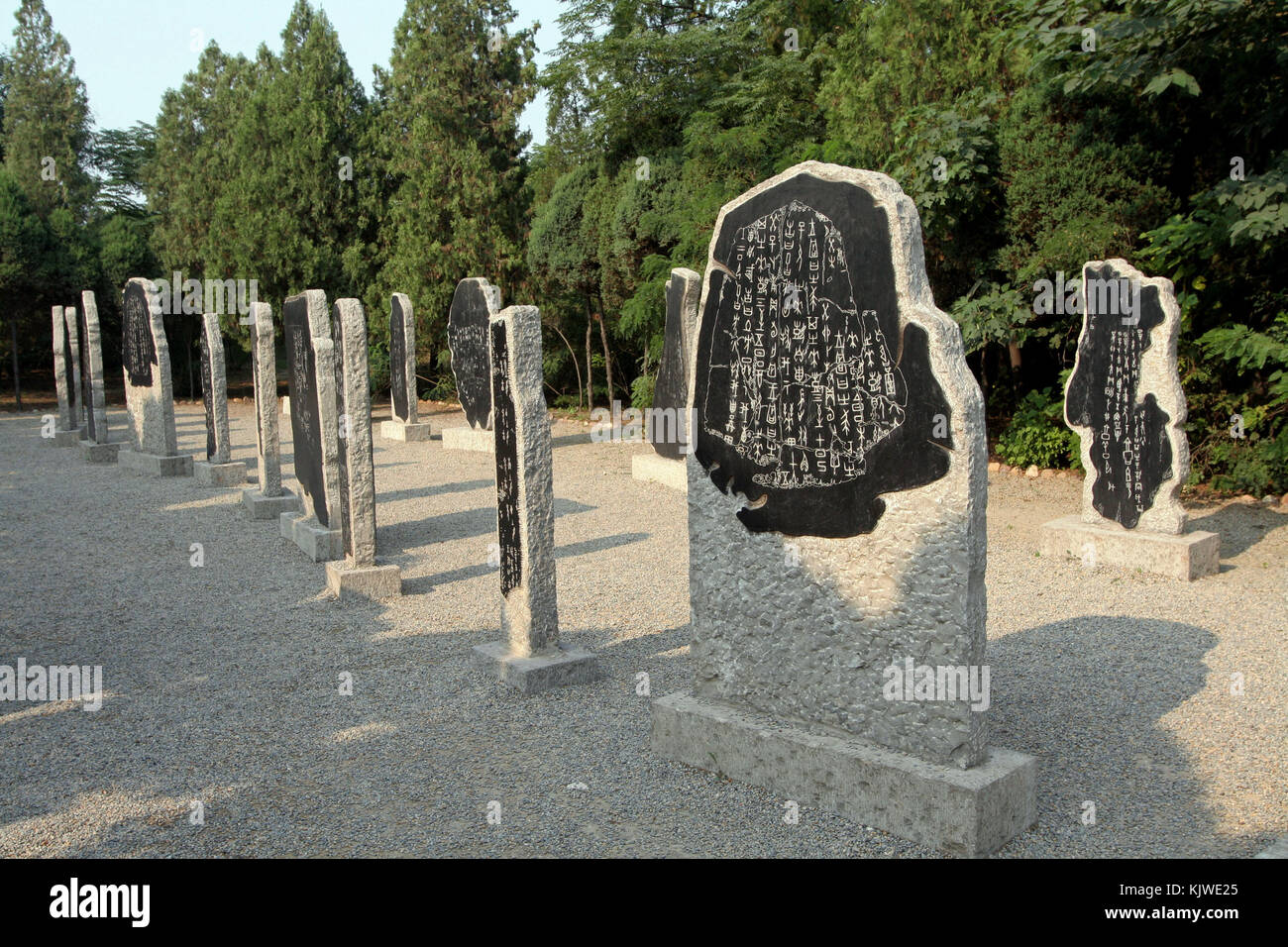 China. 27th Nov, 2017. CHINA-November 2017:(EDITORIAL USE ONLY. CHINA OUT) An ancient oracle-bone inscriptions. Chinese oracle-bone inscriptions have recently been included in the Memory of the World Register, a list of documentary heritage of the UNESCO, according to the UN agency's website.Oracle-bone inscriptions were excavated from the Ruins of Yin in Anyang, Central China's Henan Province. Inscriptions on tortoise shells and animal bones represent the original characters of the Chinese written language, which date back to the Shang Dynasty Credit: SIPA Asia/ZUMA Wire/Alamy Live News Stock Photohttps://www.alamy.com/image-license-details/?v=1https://www.alamy.com/stock-image-china-27th-nov-2017-china-november-2017editorial-use-only-china-out-166516957.html
China. 27th Nov, 2017. CHINA-November 2017:(EDITORIAL USE ONLY. CHINA OUT) An ancient oracle-bone inscriptions. Chinese oracle-bone inscriptions have recently been included in the Memory of the World Register, a list of documentary heritage of the UNESCO, according to the UN agency's website.Oracle-bone inscriptions were excavated from the Ruins of Yin in Anyang, Central China's Henan Province. Inscriptions on tortoise shells and animal bones represent the original characters of the Chinese written language, which date back to the Shang Dynasty Credit: SIPA Asia/ZUMA Wire/Alamy Live News Stock Photohttps://www.alamy.com/image-license-details/?v=1https://www.alamy.com/stock-image-china-27th-nov-2017-china-november-2017editorial-use-only-china-out-166516957.htmlRMKJWE25–China. 27th Nov, 2017. CHINA-November 2017:(EDITORIAL USE ONLY. CHINA OUT) An ancient oracle-bone inscriptions. Chinese oracle-bone inscriptions have recently been included in the Memory of the World Register, a list of documentary heritage of the UNESCO, according to the UN agency's website.Oracle-bone inscriptions were excavated from the Ruins of Yin in Anyang, Central China's Henan Province. Inscriptions on tortoise shells and animal bones represent the original characters of the Chinese written language, which date back to the Shang Dynasty Credit: SIPA Asia/ZUMA Wire/Alamy Live News
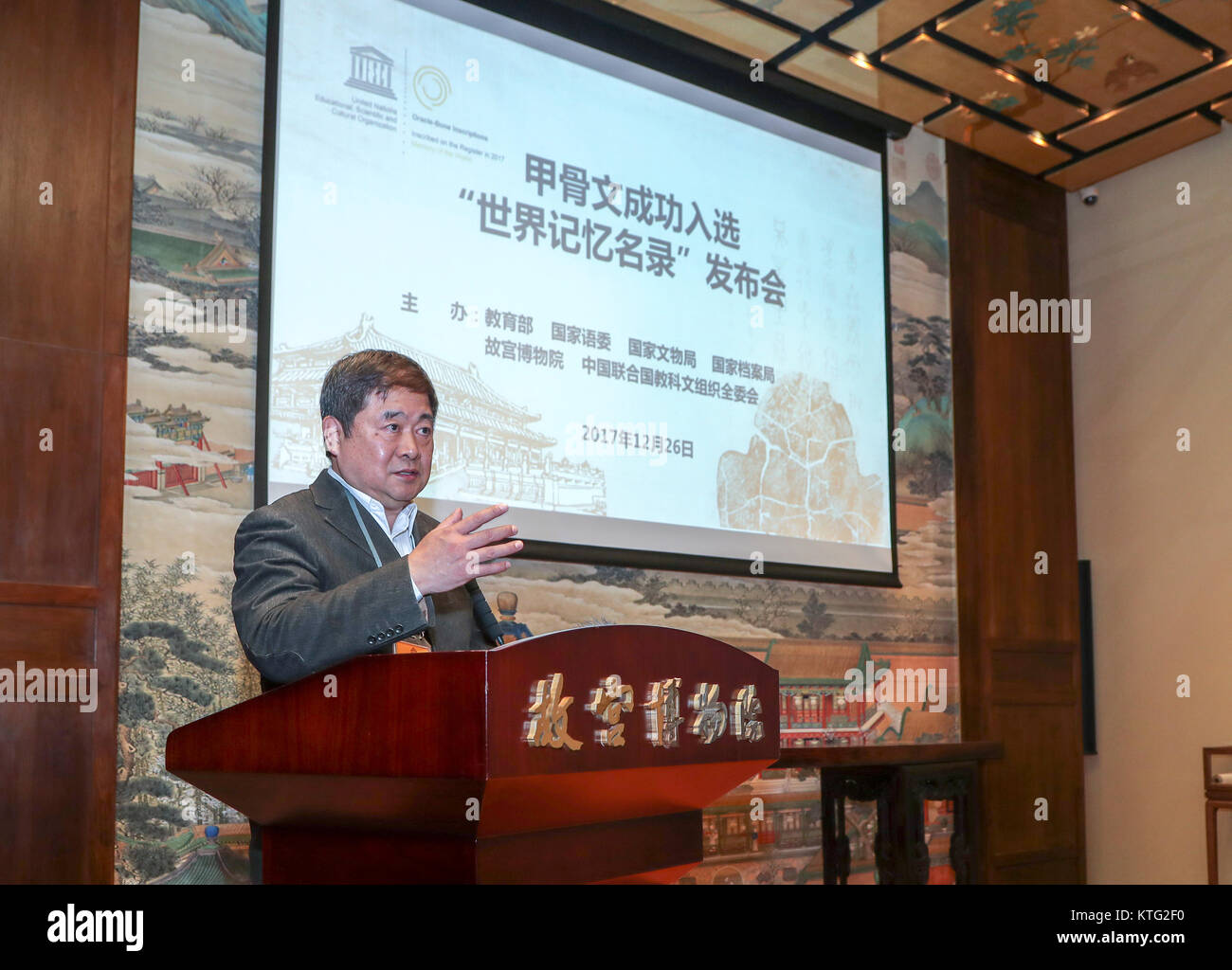 (171226) -- BEIJING, Dec. 26, 2017 (Xinhua) -- Director of the Palace Museum Shan Jixiang speaks at a press conference on the Chinese oracle bone inscriptions at the Palace Museum in Beijing, capital of China, Dec. 26, 2017. Chinese oracle bone inscriptions were included on the UNESCO Memory of the World Register, Chinese authorities announced Tuesday. Oracle bones are pieces of ox scapula or turtle plastron, which were used for divination during the late Shang Dynasty (1600-1046 B.C.). They bear the earliest significant corpus of ancient Chinese writing and contain important historical inform Stock Photohttps://www.alamy.com/image-license-details/?v=1https://www.alamy.com/stock-image-171226-beijing-dec-26-2017-xinhua-director-of-the-palace-museum-shan-169998276.html
(171226) -- BEIJING, Dec. 26, 2017 (Xinhua) -- Director of the Palace Museum Shan Jixiang speaks at a press conference on the Chinese oracle bone inscriptions at the Palace Museum in Beijing, capital of China, Dec. 26, 2017. Chinese oracle bone inscriptions were included on the UNESCO Memory of the World Register, Chinese authorities announced Tuesday. Oracle bones are pieces of ox scapula or turtle plastron, which were used for divination during the late Shang Dynasty (1600-1046 B.C.). They bear the earliest significant corpus of ancient Chinese writing and contain important historical inform Stock Photohttps://www.alamy.com/image-license-details/?v=1https://www.alamy.com/stock-image-171226-beijing-dec-26-2017-xinhua-director-of-the-palace-museum-shan-169998276.htmlRMKTG2F0–(171226) -- BEIJING, Dec. 26, 2017 (Xinhua) -- Director of the Palace Museum Shan Jixiang speaks at a press conference on the Chinese oracle bone inscriptions at the Palace Museum in Beijing, capital of China, Dec. 26, 2017. Chinese oracle bone inscriptions were included on the UNESCO Memory of the World Register, Chinese authorities announced Tuesday. Oracle bones are pieces of ox scapula or turtle plastron, which were used for divination during the late Shang Dynasty (1600-1046 B.C.). They bear the earliest significant corpus of ancient Chinese writing and contain important historical inform
 (171226) -- BEIJING, Dec. 26, 2017 -- Marielza Oliveira, director of UNESCO s Beijing office, speaks at a press conference on the Chinese oracle-bone inscriptions at the Palace Museum in Beijing, capital of China, Dec. 26, 2017. Chinese oracle bone inscriptions were included on the UNESCO Memory of the World Register, Chinese authorities announced Tuesday. Oracle bones are pieces of ox scapula or turtle plastron, which were used for divination during the late Shang Dynasty (1600-1046 B.C.). They bear the earliest significant corpus of ancient Chinese writing and contain important historical in Stock Photohttps://www.alamy.com/image-license-details/?v=1https://www.alamy.com/171226-beijing-dec-26-2017-marielza-oliveira-director-of-unesco-s-beijing-office-speaks-at-a-press-conference-on-the-chinese-oracle-bone-inscriptions-at-the-palace-museum-in-beijing-capital-of-china-dec-26-2017-chinese-oracle-bone-inscriptions-were-included-on-the-unesco-memory-of-the-world-register-chinese-authorities-announced-tuesday-oracle-bones-are-pieces-of-ox-scapula-or-turtle-plastron-which-were-used-for-divination-during-the-late-shang-dynasty-1600-1046-bc-they-bear-the-earliest-significant-corpus-of-ancient-chinese-writing-and-contain-important-historical-in-image564205075.html
(171226) -- BEIJING, Dec. 26, 2017 -- Marielza Oliveira, director of UNESCO s Beijing office, speaks at a press conference on the Chinese oracle-bone inscriptions at the Palace Museum in Beijing, capital of China, Dec. 26, 2017. Chinese oracle bone inscriptions were included on the UNESCO Memory of the World Register, Chinese authorities announced Tuesday. Oracle bones are pieces of ox scapula or turtle plastron, which were used for divination during the late Shang Dynasty (1600-1046 B.C.). They bear the earliest significant corpus of ancient Chinese writing and contain important historical in Stock Photohttps://www.alamy.com/image-license-details/?v=1https://www.alamy.com/171226-beijing-dec-26-2017-marielza-oliveira-director-of-unesco-s-beijing-office-speaks-at-a-press-conference-on-the-chinese-oracle-bone-inscriptions-at-the-palace-museum-in-beijing-capital-of-china-dec-26-2017-chinese-oracle-bone-inscriptions-were-included-on-the-unesco-memory-of-the-world-register-chinese-authorities-announced-tuesday-oracle-bones-are-pieces-of-ox-scapula-or-turtle-plastron-which-were-used-for-divination-during-the-late-shang-dynasty-1600-1046-bc-they-bear-the-earliest-significant-corpus-of-ancient-chinese-writing-and-contain-important-historical-in-image564205075.htmlRM2RNWN97–(171226) -- BEIJING, Dec. 26, 2017 -- Marielza Oliveira, director of UNESCO s Beijing office, speaks at a press conference on the Chinese oracle-bone inscriptions at the Palace Museum in Beijing, capital of China, Dec. 26, 2017. Chinese oracle bone inscriptions were included on the UNESCO Memory of the World Register, Chinese authorities announced Tuesday. Oracle bones are pieces of ox scapula or turtle plastron, which were used for divination during the late Shang Dynasty (1600-1046 B.C.). They bear the earliest significant corpus of ancient Chinese writing and contain important historical in
 (200414) -- JIYUAN, April 14, 2020 (Xinhua) -- The undated file photo shows a relic unearthed from the Chaizhuang site in Jiyuan, central China's Henan Province. Archaeologists have discovered human bones in kneeling position in a sacrificial pit of ruins dating back to the late Shang Dynasty (1600 BC-1046 BC) in central China's Henan Province, which proves a glyph in oracle bone inscription of the burial. In the excavation of the Chaizhuang site in Jiyuan, archaeologists found a large number of tombs of the late Shang Dynasty, providing evidence for the study of ancient social and ritual c Stock Photohttps://www.alamy.com/image-license-details/?v=1https://www.alamy.com/200414-jiyuan-april-14-2020-xinhua-the-undated-file-photo-shows-a-relic-unearthed-from-the-chaizhuang-site-in-jiyuan-central-chinas-henan-province-archaeologists-have-discovered-human-bones-in-kneeling-position-in-a-sacrificial-pit-of-ruins-dating-back-to-the-late-shang-dynasty-1600-bc-1046-bc-in-central-chinas-henan-province-which-proves-a-glyph-in-oracle-bone-inscription-of-the-burial-in-the-excavation-of-the-chaizhuang-site-in-jiyuan-archaeologists-found-a-large-number-of-tombs-of-the-late-shang-dynasty-providing-evidence-for-the-study-of-ancient-social-and-ritual-c-image353233980.html
(200414) -- JIYUAN, April 14, 2020 (Xinhua) -- The undated file photo shows a relic unearthed from the Chaizhuang site in Jiyuan, central China's Henan Province. Archaeologists have discovered human bones in kneeling position in a sacrificial pit of ruins dating back to the late Shang Dynasty (1600 BC-1046 BC) in central China's Henan Province, which proves a glyph in oracle bone inscription of the burial. In the excavation of the Chaizhuang site in Jiyuan, archaeologists found a large number of tombs of the late Shang Dynasty, providing evidence for the study of ancient social and ritual c Stock Photohttps://www.alamy.com/image-license-details/?v=1https://www.alamy.com/200414-jiyuan-april-14-2020-xinhua-the-undated-file-photo-shows-a-relic-unearthed-from-the-chaizhuang-site-in-jiyuan-central-chinas-henan-province-archaeologists-have-discovered-human-bones-in-kneeling-position-in-a-sacrificial-pit-of-ruins-dating-back-to-the-late-shang-dynasty-1600-bc-1046-bc-in-central-chinas-henan-province-which-proves-a-glyph-in-oracle-bone-inscription-of-the-burial-in-the-excavation-of-the-chaizhuang-site-in-jiyuan-archaeologists-found-a-large-number-of-tombs-of-the-late-shang-dynasty-providing-evidence-for-the-study-of-ancient-social-and-ritual-c-image353233980.htmlRM2BEK5F8–(200414) -- JIYUAN, April 14, 2020 (Xinhua) -- The undated file photo shows a relic unearthed from the Chaizhuang site in Jiyuan, central China's Henan Province. Archaeologists have discovered human bones in kneeling position in a sacrificial pit of ruins dating back to the late Shang Dynasty (1600 BC-1046 BC) in central China's Henan Province, which proves a glyph in oracle bone inscription of the burial. In the excavation of the Chaizhuang site in Jiyuan, archaeologists found a large number of tombs of the late Shang Dynasty, providing evidence for the study of ancient social and ritual c
 Oracle bone fragment, China, Shang dynasty (ca. 1600–1046 B.C.), Culture: China, Inscribed bone, 3 3/8 × 6 1/2 in. (8.6 × 16.5 cm), Bone Stock Photohttps://www.alamy.com/image-license-details/?v=1https://www.alamy.com/oracle-bone-fragment-china-shang-dynasty-ca-16001046-bc-culture-china-inscribed-bone-3-38-6-12-in-86-165-cm-bone-image344657820.html
Oracle bone fragment, China, Shang dynasty (ca. 1600–1046 B.C.), Culture: China, Inscribed bone, 3 3/8 × 6 1/2 in. (8.6 × 16.5 cm), Bone Stock Photohttps://www.alamy.com/image-license-details/?v=1https://www.alamy.com/oracle-bone-fragment-china-shang-dynasty-ca-16001046-bc-culture-china-inscribed-bone-3-38-6-12-in-86-165-cm-bone-image344657820.htmlRM2B0MEFT–Oracle bone fragment, China, Shang dynasty (ca. 1600–1046 B.C.), Culture: China, Inscribed bone, 3 3/8 × 6 1/2 in. (8.6 × 16.5 cm), Bone
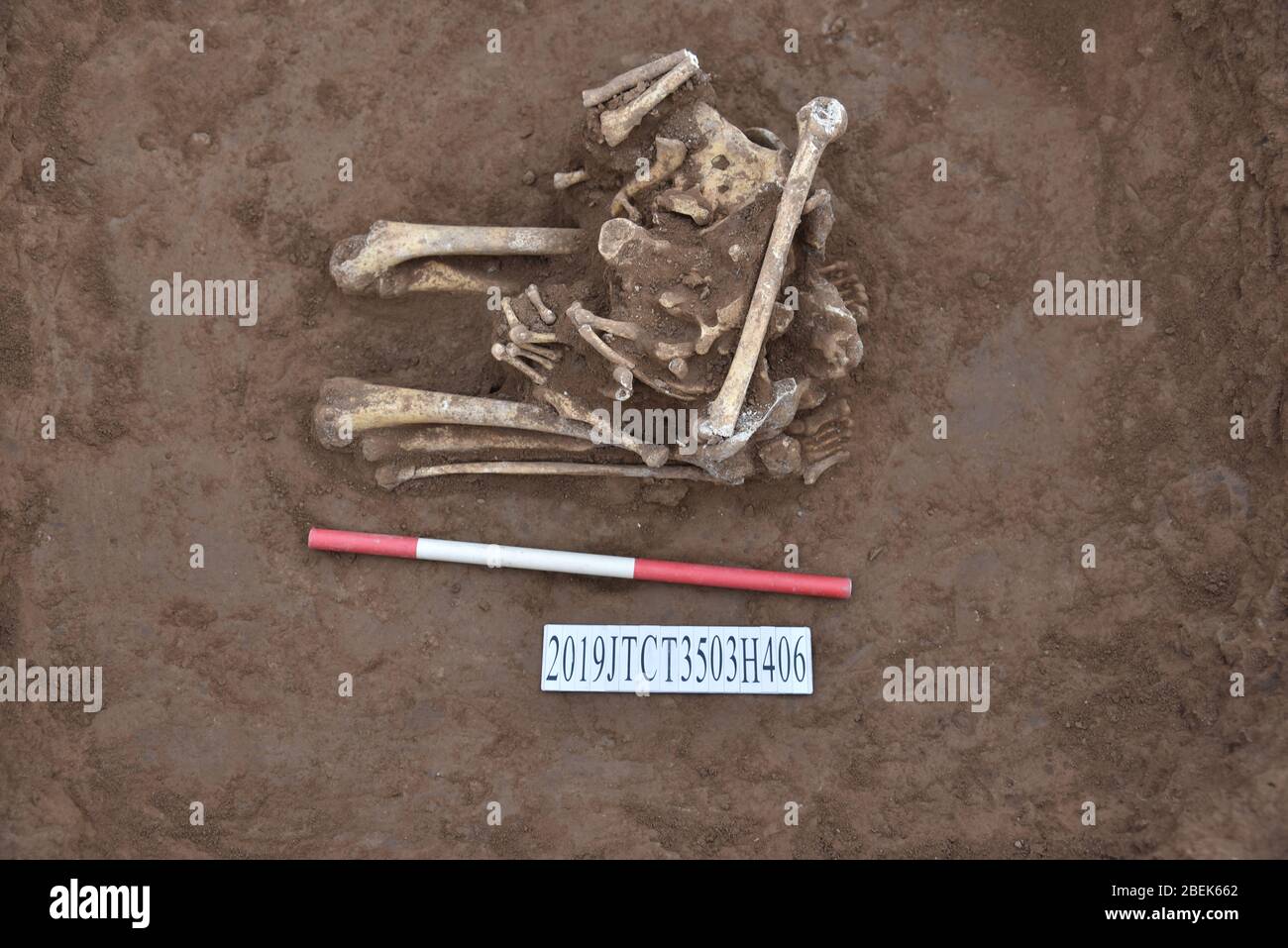 (200414) -- JIYUAN, April 14, 2020 (Xinhua) -- The undated file photo shows human bones remains in kneeling position unearthed from the Chaizhuang site in Jiyuan, central China's Henan Province. Archaeologists have discovered human bones in kneeling position in a sacrificial pit of ruins dating back to the late Shang Dynasty (1600 BC-1046 BC) in central China's Henan Province, which proves a glyph in oracle bone inscription of the burial. In the excavation of the Chaizhuang site in Jiyuan, archaeologists found a large number of tombs of the late Shang Dynasty, providing evidence for the stu Stock Photohttps://www.alamy.com/image-license-details/?v=1https://www.alamy.com/200414-jiyuan-april-14-2020-xinhua-the-undated-file-photo-shows-human-bones-remains-in-kneeling-position-unearthed-from-the-chaizhuang-site-in-jiyuan-central-chinas-henan-province-archaeologists-have-discovered-human-bones-in-kneeling-position-in-a-sacrificial-pit-of-ruins-dating-back-to-the-late-shang-dynasty-1600-bc-1046-bc-in-central-chinas-henan-province-which-proves-a-glyph-in-oracle-bone-inscription-of-the-burial-in-the-excavation-of-the-chaizhuang-site-in-jiyuan-archaeologists-found-a-large-number-of-tombs-of-the-late-shang-dynasty-providing-evidence-for-the-stu-image353234506.html
(200414) -- JIYUAN, April 14, 2020 (Xinhua) -- The undated file photo shows human bones remains in kneeling position unearthed from the Chaizhuang site in Jiyuan, central China's Henan Province. Archaeologists have discovered human bones in kneeling position in a sacrificial pit of ruins dating back to the late Shang Dynasty (1600 BC-1046 BC) in central China's Henan Province, which proves a glyph in oracle bone inscription of the burial. In the excavation of the Chaizhuang site in Jiyuan, archaeologists found a large number of tombs of the late Shang Dynasty, providing evidence for the stu Stock Photohttps://www.alamy.com/image-license-details/?v=1https://www.alamy.com/200414-jiyuan-april-14-2020-xinhua-the-undated-file-photo-shows-human-bones-remains-in-kneeling-position-unearthed-from-the-chaizhuang-site-in-jiyuan-central-chinas-henan-province-archaeologists-have-discovered-human-bones-in-kneeling-position-in-a-sacrificial-pit-of-ruins-dating-back-to-the-late-shang-dynasty-1600-bc-1046-bc-in-central-chinas-henan-province-which-proves-a-glyph-in-oracle-bone-inscription-of-the-burial-in-the-excavation-of-the-chaizhuang-site-in-jiyuan-archaeologists-found-a-large-number-of-tombs-of-the-late-shang-dynasty-providing-evidence-for-the-stu-image353234506.htmlRM2BEK662–(200414) -- JIYUAN, April 14, 2020 (Xinhua) -- The undated file photo shows human bones remains in kneeling position unearthed from the Chaizhuang site in Jiyuan, central China's Henan Province. Archaeologists have discovered human bones in kneeling position in a sacrificial pit of ruins dating back to the late Shang Dynasty (1600 BC-1046 BC) in central China's Henan Province, which proves a glyph in oracle bone inscription of the burial. In the excavation of the Chaizhuang site in Jiyuan, archaeologists found a large number of tombs of the late Shang Dynasty, providing evidence for the stu
 200414 -- JIYUAN, April 14, 2020 -- The undated file photo shows a relic unearthed from the Chaizhuang site in Jiyuan, central China s Henan Province. Archaeologists have discovered human bones in kneeling position in a sacrificial pit of ruins dating back to the late Shang Dynasty 1600 BC-1046 BC in central China s Henan Province, which proves a glyph in oracle bone inscription of the burial. In the excavation of the Chaizhuang site in Jiyuan, archaeologists found a large number of tombs of the late Shang Dynasty, providing evidence for the study of ancient social and ritual customs. Henan Pr Stock Photohttps://www.alamy.com/image-license-details/?v=1https://www.alamy.com/200414-jiyuan-april-14-2020-the-undated-file-photo-shows-a-relic-unearthed-from-the-chaizhuang-site-in-jiyuan-central-china-s-henan-province-archaeologists-have-discovered-human-bones-in-kneeling-position-in-a-sacrificial-pit-of-ruins-dating-back-to-the-late-shang-dynasty-1600-bc-1046-bc-in-central-china-s-henan-province-which-proves-a-glyph-in-oracle-bone-inscription-of-the-burial-in-the-excavation-of-the-chaizhuang-site-in-jiyuan-archaeologists-found-a-large-number-of-tombs-of-the-late-shang-dynasty-providing-evidence-for-the-study-of-ancient-social-and-ritual-customs-henan-pr-image564791305.html
200414 -- JIYUAN, April 14, 2020 -- The undated file photo shows a relic unearthed from the Chaizhuang site in Jiyuan, central China s Henan Province. Archaeologists have discovered human bones in kneeling position in a sacrificial pit of ruins dating back to the late Shang Dynasty 1600 BC-1046 BC in central China s Henan Province, which proves a glyph in oracle bone inscription of the burial. In the excavation of the Chaizhuang site in Jiyuan, archaeologists found a large number of tombs of the late Shang Dynasty, providing evidence for the study of ancient social and ritual customs. Henan Pr Stock Photohttps://www.alamy.com/image-license-details/?v=1https://www.alamy.com/200414-jiyuan-april-14-2020-the-undated-file-photo-shows-a-relic-unearthed-from-the-chaizhuang-site-in-jiyuan-central-china-s-henan-province-archaeologists-have-discovered-human-bones-in-kneeling-position-in-a-sacrificial-pit-of-ruins-dating-back-to-the-late-shang-dynasty-1600-bc-1046-bc-in-central-china-s-henan-province-which-proves-a-glyph-in-oracle-bone-inscription-of-the-burial-in-the-excavation-of-the-chaizhuang-site-in-jiyuan-archaeologists-found-a-large-number-of-tombs-of-the-late-shang-dynasty-providing-evidence-for-the-study-of-ancient-social-and-ritual-customs-henan-pr-image564791305.htmlRM2RPTD21–200414 -- JIYUAN, April 14, 2020 -- The undated file photo shows a relic unearthed from the Chaizhuang site in Jiyuan, central China s Henan Province. Archaeologists have discovered human bones in kneeling position in a sacrificial pit of ruins dating back to the late Shang Dynasty 1600 BC-1046 BC in central China s Henan Province, which proves a glyph in oracle bone inscription of the burial. In the excavation of the Chaizhuang site in Jiyuan, archaeologists found a large number of tombs of the late Shang Dynasty, providing evidence for the study of ancient social and ritual customs. Henan Pr
 (200414) -- JIYUAN, April 14, 2020 (Xinhua) -- The undated file photo shows a stove unearthed from the Chaizhuang site in Jiyuan, central China's Henan Province. Archaeologists have discovered human bones in kneeling position in a sacrificial pit of ruins dating back to the late Shang Dynasty (1600 BC-1046 BC) in central China's Henan Province, which proves a glyph in oracle bone inscription of the burial. In the excavation of the Chaizhuang site in Jiyuan, archaeologists found a large number of tombs of the late Shang Dynasty, providing evidence for the study of ancient social and ritual c Stock Photohttps://www.alamy.com/image-license-details/?v=1https://www.alamy.com/200414-jiyuan-april-14-2020-xinhua-the-undated-file-photo-shows-a-stove-unearthed-from-the-chaizhuang-site-in-jiyuan-central-chinas-henan-province-archaeologists-have-discovered-human-bones-in-kneeling-position-in-a-sacrificial-pit-of-ruins-dating-back-to-the-late-shang-dynasty-1600-bc-1046-bc-in-central-chinas-henan-province-which-proves-a-glyph-in-oracle-bone-inscription-of-the-burial-in-the-excavation-of-the-chaizhuang-site-in-jiyuan-archaeologists-found-a-large-number-of-tombs-of-the-late-shang-dynasty-providing-evidence-for-the-study-of-ancient-social-and-ritual-c-image353234511.html
(200414) -- JIYUAN, April 14, 2020 (Xinhua) -- The undated file photo shows a stove unearthed from the Chaizhuang site in Jiyuan, central China's Henan Province. Archaeologists have discovered human bones in kneeling position in a sacrificial pit of ruins dating back to the late Shang Dynasty (1600 BC-1046 BC) in central China's Henan Province, which proves a glyph in oracle bone inscription of the burial. In the excavation of the Chaizhuang site in Jiyuan, archaeologists found a large number of tombs of the late Shang Dynasty, providing evidence for the study of ancient social and ritual c Stock Photohttps://www.alamy.com/image-license-details/?v=1https://www.alamy.com/200414-jiyuan-april-14-2020-xinhua-the-undated-file-photo-shows-a-stove-unearthed-from-the-chaizhuang-site-in-jiyuan-central-chinas-henan-province-archaeologists-have-discovered-human-bones-in-kneeling-position-in-a-sacrificial-pit-of-ruins-dating-back-to-the-late-shang-dynasty-1600-bc-1046-bc-in-central-chinas-henan-province-which-proves-a-glyph-in-oracle-bone-inscription-of-the-burial-in-the-excavation-of-the-chaizhuang-site-in-jiyuan-archaeologists-found-a-large-number-of-tombs-of-the-late-shang-dynasty-providing-evidence-for-the-study-of-ancient-social-and-ritual-c-image353234511.htmlRM2BEK667–(200414) -- JIYUAN, April 14, 2020 (Xinhua) -- The undated file photo shows a stove unearthed from the Chaizhuang site in Jiyuan, central China's Henan Province. Archaeologists have discovered human bones in kneeling position in a sacrificial pit of ruins dating back to the late Shang Dynasty (1600 BC-1046 BC) in central China's Henan Province, which proves a glyph in oracle bone inscription of the burial. In the excavation of the Chaizhuang site in Jiyuan, archaeologists found a large number of tombs of the late Shang Dynasty, providing evidence for the study of ancient social and ritual c
 200414 -- JIYUAN, April 14, 2020 -- The undated file photo shows human bones remains in kneeling position unearthed from the Chaizhuang site in Jiyuan, central China s Henan Province. Archaeologists have discovered human bones in kneeling position in a sacrificial pit of ruins dating back to the late Shang Dynasty 1600 BC-1046 BC in central China s Henan Province, which proves a glyph in oracle bone inscription of the burial. In the excavation of the Chaizhuang site in Jiyuan, archaeologists found a large number of tombs of the late Shang Dynasty, providing evidence for the study of ancient so Stock Photohttps://www.alamy.com/image-license-details/?v=1https://www.alamy.com/200414-jiyuan-april-14-2020-the-undated-file-photo-shows-human-bones-remains-in-kneeling-position-unearthed-from-the-chaizhuang-site-in-jiyuan-central-china-s-henan-province-archaeologists-have-discovered-human-bones-in-kneeling-position-in-a-sacrificial-pit-of-ruins-dating-back-to-the-late-shang-dynasty-1600-bc-1046-bc-in-central-china-s-henan-province-which-proves-a-glyph-in-oracle-bone-inscription-of-the-burial-in-the-excavation-of-the-chaizhuang-site-in-jiyuan-archaeologists-found-a-large-number-of-tombs-of-the-late-shang-dynasty-providing-evidence-for-the-study-of-ancient-so-image564791313.html
200414 -- JIYUAN, April 14, 2020 -- The undated file photo shows human bones remains in kneeling position unearthed from the Chaizhuang site in Jiyuan, central China s Henan Province. Archaeologists have discovered human bones in kneeling position in a sacrificial pit of ruins dating back to the late Shang Dynasty 1600 BC-1046 BC in central China s Henan Province, which proves a glyph in oracle bone inscription of the burial. In the excavation of the Chaizhuang site in Jiyuan, archaeologists found a large number of tombs of the late Shang Dynasty, providing evidence for the study of ancient so Stock Photohttps://www.alamy.com/image-license-details/?v=1https://www.alamy.com/200414-jiyuan-april-14-2020-the-undated-file-photo-shows-human-bones-remains-in-kneeling-position-unearthed-from-the-chaizhuang-site-in-jiyuan-central-china-s-henan-province-archaeologists-have-discovered-human-bones-in-kneeling-position-in-a-sacrificial-pit-of-ruins-dating-back-to-the-late-shang-dynasty-1600-bc-1046-bc-in-central-china-s-henan-province-which-proves-a-glyph-in-oracle-bone-inscription-of-the-burial-in-the-excavation-of-the-chaizhuang-site-in-jiyuan-archaeologists-found-a-large-number-of-tombs-of-the-late-shang-dynasty-providing-evidence-for-the-study-of-ancient-so-image564791313.htmlRM2RPTD29–200414 -- JIYUAN, April 14, 2020 -- The undated file photo shows human bones remains in kneeling position unearthed from the Chaizhuang site in Jiyuan, central China s Henan Province. Archaeologists have discovered human bones in kneeling position in a sacrificial pit of ruins dating back to the late Shang Dynasty 1600 BC-1046 BC in central China s Henan Province, which proves a glyph in oracle bone inscription of the burial. In the excavation of the Chaizhuang site in Jiyuan, archaeologists found a large number of tombs of the late Shang Dynasty, providing evidence for the study of ancient so
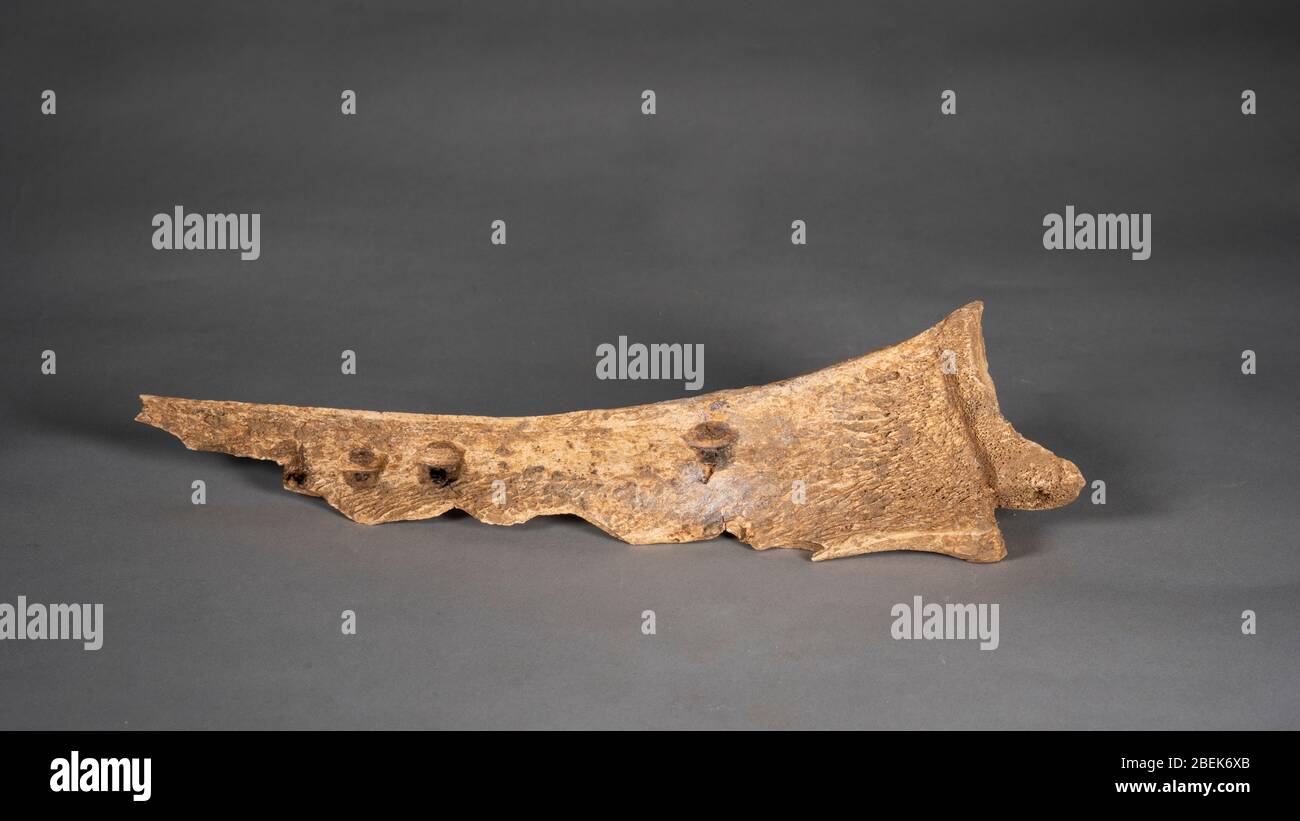 (200414) -- JIYUAN, April 14, 2020 (Xinhua) -- The undated file photo shows a relic unearthed from the Chaizhuang site in Jiyuan, central China's Henan Province. Archaeologists have discovered human bones in kneeling position in a sacrificial pit of ruins dating back to the late Shang Dynasty (1600 BC-1046 BC) in central China's Henan Province, which proves a glyph in oracle bone inscription of the burial. In the excavation of the Chaizhuang site in Jiyuan, archaeologists found a large number of tombs of the late Shang Dynasty, providing evidence for the study of ancient social and ritual c Stock Photohttps://www.alamy.com/image-license-details/?v=1https://www.alamy.com/200414-jiyuan-april-14-2020-xinhua-the-undated-file-photo-shows-a-relic-unearthed-from-the-chaizhuang-site-in-jiyuan-central-chinas-henan-province-archaeologists-have-discovered-human-bones-in-kneeling-position-in-a-sacrificial-pit-of-ruins-dating-back-to-the-late-shang-dynasty-1600-bc-1046-bc-in-central-chinas-henan-province-which-proves-a-glyph-in-oracle-bone-inscription-of-the-burial-in-the-excavation-of-the-chaizhuang-site-in-jiyuan-archaeologists-found-a-large-number-of-tombs-of-the-late-shang-dynasty-providing-evidence-for-the-study-of-ancient-social-and-ritual-c-image353235075.html
(200414) -- JIYUAN, April 14, 2020 (Xinhua) -- The undated file photo shows a relic unearthed from the Chaizhuang site in Jiyuan, central China's Henan Province. Archaeologists have discovered human bones in kneeling position in a sacrificial pit of ruins dating back to the late Shang Dynasty (1600 BC-1046 BC) in central China's Henan Province, which proves a glyph in oracle bone inscription of the burial. In the excavation of the Chaizhuang site in Jiyuan, archaeologists found a large number of tombs of the late Shang Dynasty, providing evidence for the study of ancient social and ritual c Stock Photohttps://www.alamy.com/image-license-details/?v=1https://www.alamy.com/200414-jiyuan-april-14-2020-xinhua-the-undated-file-photo-shows-a-relic-unearthed-from-the-chaizhuang-site-in-jiyuan-central-chinas-henan-province-archaeologists-have-discovered-human-bones-in-kneeling-position-in-a-sacrificial-pit-of-ruins-dating-back-to-the-late-shang-dynasty-1600-bc-1046-bc-in-central-chinas-henan-province-which-proves-a-glyph-in-oracle-bone-inscription-of-the-burial-in-the-excavation-of-the-chaizhuang-site-in-jiyuan-archaeologists-found-a-large-number-of-tombs-of-the-late-shang-dynasty-providing-evidence-for-the-study-of-ancient-social-and-ritual-c-image353235075.htmlRM2BEK6XB–(200414) -- JIYUAN, April 14, 2020 (Xinhua) -- The undated file photo shows a relic unearthed from the Chaizhuang site in Jiyuan, central China's Henan Province. Archaeologists have discovered human bones in kneeling position in a sacrificial pit of ruins dating back to the late Shang Dynasty (1600 BC-1046 BC) in central China's Henan Province, which proves a glyph in oracle bone inscription of the burial. In the excavation of the Chaizhuang site in Jiyuan, archaeologists found a large number of tombs of the late Shang Dynasty, providing evidence for the study of ancient social and ritual c
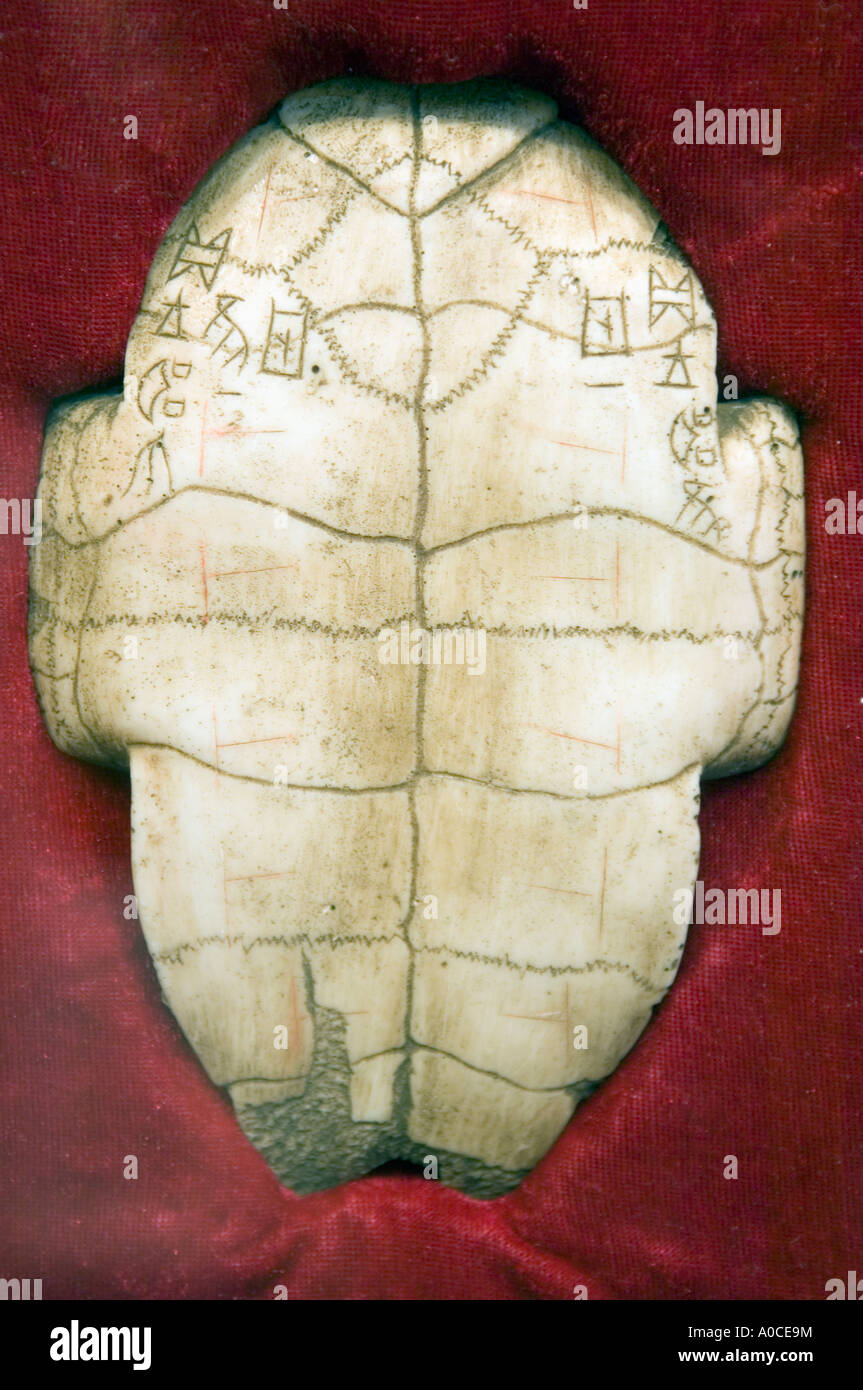 the biggest Inscribed Oracle Bone From the Shang Dynasty in Yinxu city, Henan Province, China Stock Photohttps://www.alamy.com/image-license-details/?v=1https://www.alamy.com/the-biggest-inscribed-oracle-bone-from-the-shang-dynasty-in-yinxu-image9952207.html
the biggest Inscribed Oracle Bone From the Shang Dynasty in Yinxu city, Henan Province, China Stock Photohttps://www.alamy.com/image-license-details/?v=1https://www.alamy.com/the-biggest-inscribed-oracle-bone-from-the-shang-dynasty-in-yinxu-image9952207.htmlRMA0CE9M–the biggest Inscribed Oracle Bone From the Shang Dynasty in Yinxu city, Henan Province, China
 Oracle bone carved with characters. Late Shang Dynasty (13th century B.C.E - mid. 11th century B.C.E) Discovered in Yin relic in Anyang, Henan. Stock Photohttps://www.alamy.com/image-license-details/?v=1https://www.alamy.com/stock-photo-oracle-bone-carved-with-characters-late-shang-dynasty-13th-century-141634132.html
Oracle bone carved with characters. Late Shang Dynasty (13th century B.C.E - mid. 11th century B.C.E) Discovered in Yin relic in Anyang, Henan. Stock Photohttps://www.alamy.com/image-license-details/?v=1https://www.alamy.com/stock-photo-oracle-bone-carved-with-characters-late-shang-dynasty-13th-century-141634132.htmlRMJ6BYNT–Oracle bone carved with characters. Late Shang Dynasty (13th century B.C.E - mid. 11th century B.C.E) Discovered in Yin relic in Anyang, Henan.
 Petrified tortoise shell with oracle bone inscriptions, possibly Shang Dynasty, China, c1400 BC. Artist: Unknown Stock Photohttps://www.alamy.com/image-license-details/?v=1https://www.alamy.com/petrified-tortoise-shell-with-oracle-bone-inscriptions-possibly-shang-image60053136.html
Petrified tortoise shell with oracle bone inscriptions, possibly Shang Dynasty, China, c1400 BC. Artist: Unknown Stock Photohttps://www.alamy.com/image-license-details/?v=1https://www.alamy.com/petrified-tortoise-shell-with-oracle-bone-inscriptions-possibly-shang-image60053136.htmlRMDDKJAT–Petrified tortoise shell with oracle bone inscriptions, possibly Shang Dynasty, China, c1400 BC. Artist: Unknown
 200414 -- JIYUAN, April 14, 2020 -- The undated file photo shows a stove unearthed from the Chaizhuang site in Jiyuan, central China s Henan Province. Archaeologists have discovered human bones in kneeling position in a sacrificial pit of ruins dating back to the late Shang Dynasty 1600 BC-1046 BC in central China s Henan Province, which proves a glyph in oracle bone inscription of the burial. In the excavation of the Chaizhuang site in Jiyuan, archaeologists found a large number of tombs of the late Shang Dynasty, providing evidence for the study of ancient social and ritual customs. Henan Pr Stock Photohttps://www.alamy.com/image-license-details/?v=1https://www.alamy.com/200414-jiyuan-april-14-2020-the-undated-file-photo-shows-a-stove-unearthed-from-the-chaizhuang-site-in-jiyuan-central-china-s-henan-province-archaeologists-have-discovered-human-bones-in-kneeling-position-in-a-sacrificial-pit-of-ruins-dating-back-to-the-late-shang-dynasty-1600-bc-1046-bc-in-central-china-s-henan-province-which-proves-a-glyph-in-oracle-bone-inscription-of-the-burial-in-the-excavation-of-the-chaizhuang-site-in-jiyuan-archaeologists-found-a-large-number-of-tombs-of-the-late-shang-dynasty-providing-evidence-for-the-study-of-ancient-social-and-ritual-customs-henan-pr-image564791374.html
200414 -- JIYUAN, April 14, 2020 -- The undated file photo shows a stove unearthed from the Chaizhuang site in Jiyuan, central China s Henan Province. Archaeologists have discovered human bones in kneeling position in a sacrificial pit of ruins dating back to the late Shang Dynasty 1600 BC-1046 BC in central China s Henan Province, which proves a glyph in oracle bone inscription of the burial. In the excavation of the Chaizhuang site in Jiyuan, archaeologists found a large number of tombs of the late Shang Dynasty, providing evidence for the study of ancient social and ritual customs. Henan Pr Stock Photohttps://www.alamy.com/image-license-details/?v=1https://www.alamy.com/200414-jiyuan-april-14-2020-the-undated-file-photo-shows-a-stove-unearthed-from-the-chaizhuang-site-in-jiyuan-central-china-s-henan-province-archaeologists-have-discovered-human-bones-in-kneeling-position-in-a-sacrificial-pit-of-ruins-dating-back-to-the-late-shang-dynasty-1600-bc-1046-bc-in-central-china-s-henan-province-which-proves-a-glyph-in-oracle-bone-inscription-of-the-burial-in-the-excavation-of-the-chaizhuang-site-in-jiyuan-archaeologists-found-a-large-number-of-tombs-of-the-late-shang-dynasty-providing-evidence-for-the-study-of-ancient-social-and-ritual-customs-henan-pr-image564791374.htmlRM2RPTD4E–200414 -- JIYUAN, April 14, 2020 -- The undated file photo shows a stove unearthed from the Chaizhuang site in Jiyuan, central China s Henan Province. Archaeologists have discovered human bones in kneeling position in a sacrificial pit of ruins dating back to the late Shang Dynasty 1600 BC-1046 BC in central China s Henan Province, which proves a glyph in oracle bone inscription of the burial. In the excavation of the Chaizhuang site in Jiyuan, archaeologists found a large number of tombs of the late Shang Dynasty, providing evidence for the study of ancient social and ritual customs. Henan Pr
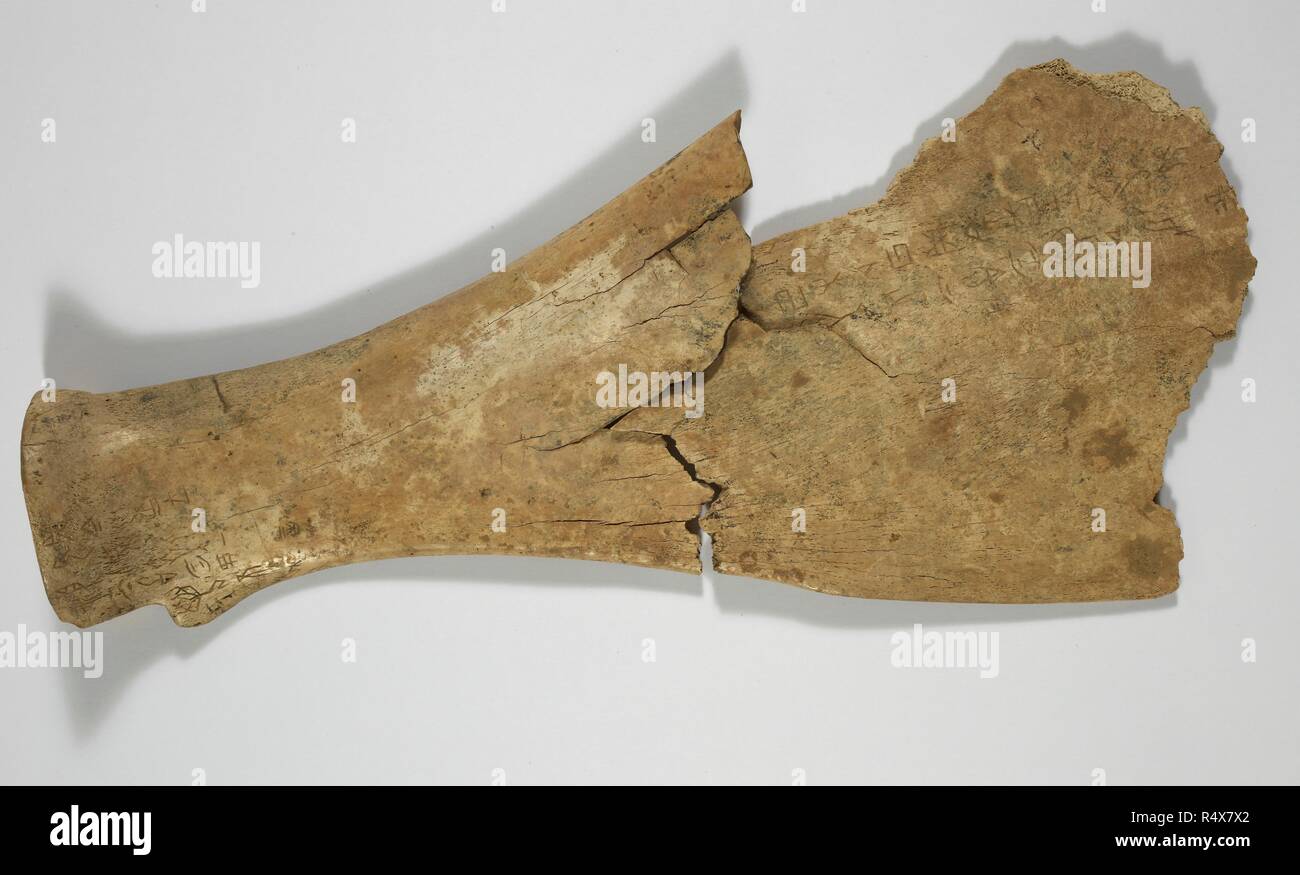 Chinese oracle bone. China, 16th-10th century BC. Diviners of the Shang dynasty (16th-10th centuries B.C.) produced oracles by reading cracks on ox bones. Such bones bear the earliest writing known in China. Originally published/produced in China, 16th-10th century BC. . Source: Or. 7694, 1592. Stock Photohttps://www.alamy.com/image-license-details/?v=1https://www.alamy.com/chinese-oracle-bone-china-16th-10th-century-bc-diviners-of-the-shang-dynasty-16th-10th-centuries-bc-produced-oracles-by-reading-cracks-on-ox-bones-such-bones-bear-the-earliest-writing-known-in-china-originally-publishedproduced-in-china-16th-10th-century-bc-source-or-7694-1592-image226770378.html
Chinese oracle bone. China, 16th-10th century BC. Diviners of the Shang dynasty (16th-10th centuries B.C.) produced oracles by reading cracks on ox bones. Such bones bear the earliest writing known in China. Originally published/produced in China, 16th-10th century BC. . Source: Or. 7694, 1592. Stock Photohttps://www.alamy.com/image-license-details/?v=1https://www.alamy.com/chinese-oracle-bone-china-16th-10th-century-bc-diviners-of-the-shang-dynasty-16th-10th-centuries-bc-produced-oracles-by-reading-cracks-on-ox-bones-such-bones-bear-the-earliest-writing-known-in-china-originally-publishedproduced-in-china-16th-10th-century-bc-source-or-7694-1592-image226770378.htmlRMR4X7X2–Chinese oracle bone. China, 16th-10th century BC. Diviners of the Shang dynasty (16th-10th centuries B.C.) produced oracles by reading cracks on ox bones. Such bones bear the earliest writing known in China. Originally published/produced in China, 16th-10th century BC. . Source: Or. 7694, 1592.
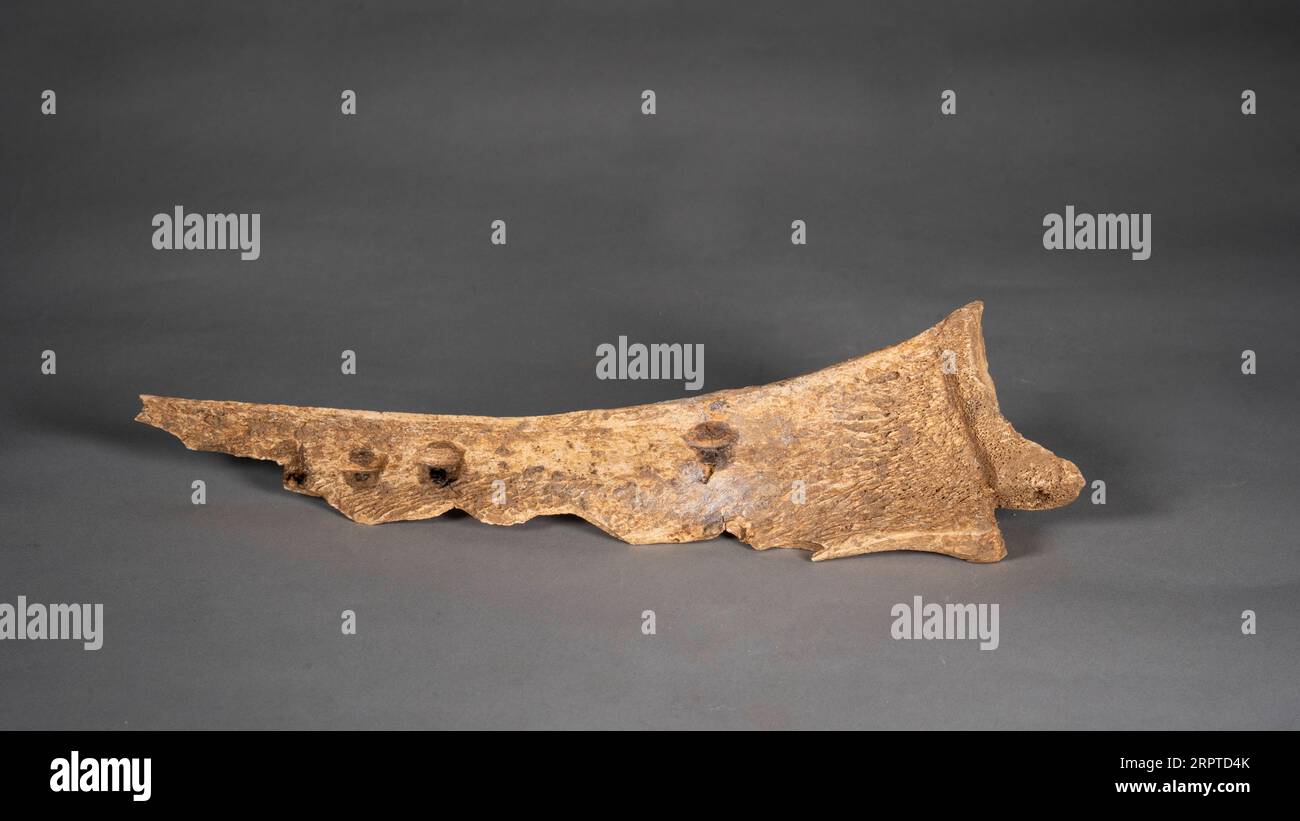 200414 -- JIYUAN, April 14, 2020 -- The undated file photo shows a relic unearthed from the Chaizhuang site in Jiyuan, central China s Henan Province. Archaeologists have discovered human bones in kneeling position in a sacrificial pit of ruins dating back to the late Shang Dynasty 1600 BC-1046 BC in central China s Henan Province, which proves a glyph in oracle bone inscription of the burial. In the excavation of the Chaizhuang site in Jiyuan, archaeologists found a large number of tombs of the late Shang Dynasty, providing evidence for the study of ancient social and ritual customs. Henan Pr Stock Photohttps://www.alamy.com/image-license-details/?v=1https://www.alamy.com/200414-jiyuan-april-14-2020-the-undated-file-photo-shows-a-relic-unearthed-from-the-chaizhuang-site-in-jiyuan-central-china-s-henan-province-archaeologists-have-discovered-human-bones-in-kneeling-position-in-a-sacrificial-pit-of-ruins-dating-back-to-the-late-shang-dynasty-1600-bc-1046-bc-in-central-china-s-henan-province-which-proves-a-glyph-in-oracle-bone-inscription-of-the-burial-in-the-excavation-of-the-chaizhuang-site-in-jiyuan-archaeologists-found-a-large-number-of-tombs-of-the-late-shang-dynasty-providing-evidence-for-the-study-of-ancient-social-and-ritual-customs-henan-pr-image564791379.html
200414 -- JIYUAN, April 14, 2020 -- The undated file photo shows a relic unearthed from the Chaizhuang site in Jiyuan, central China s Henan Province. Archaeologists have discovered human bones in kneeling position in a sacrificial pit of ruins dating back to the late Shang Dynasty 1600 BC-1046 BC in central China s Henan Province, which proves a glyph in oracle bone inscription of the burial. In the excavation of the Chaizhuang site in Jiyuan, archaeologists found a large number of tombs of the late Shang Dynasty, providing evidence for the study of ancient social and ritual customs. Henan Pr Stock Photohttps://www.alamy.com/image-license-details/?v=1https://www.alamy.com/200414-jiyuan-april-14-2020-the-undated-file-photo-shows-a-relic-unearthed-from-the-chaizhuang-site-in-jiyuan-central-china-s-henan-province-archaeologists-have-discovered-human-bones-in-kneeling-position-in-a-sacrificial-pit-of-ruins-dating-back-to-the-late-shang-dynasty-1600-bc-1046-bc-in-central-china-s-henan-province-which-proves-a-glyph-in-oracle-bone-inscription-of-the-burial-in-the-excavation-of-the-chaizhuang-site-in-jiyuan-archaeologists-found-a-large-number-of-tombs-of-the-late-shang-dynasty-providing-evidence-for-the-study-of-ancient-social-and-ritual-customs-henan-pr-image564791379.htmlRM2RPTD4K–200414 -- JIYUAN, April 14, 2020 -- The undated file photo shows a relic unearthed from the Chaizhuang site in Jiyuan, central China s Henan Province. Archaeologists have discovered human bones in kneeling position in a sacrificial pit of ruins dating back to the late Shang Dynasty 1600 BC-1046 BC in central China s Henan Province, which proves a glyph in oracle bone inscription of the burial. In the excavation of the Chaizhuang site in Jiyuan, archaeologists found a large number of tombs of the late Shang Dynasty, providing evidence for the study of ancient social and ritual customs. Henan Pr
 Oracle bone fragment. Culture: China. Dimensions: 3 1/8 × 5 in. (7.9 × 12.7 cm). Museum: Metropolitan Museum of Art, New York, USA. Stock Photohttps://www.alamy.com/image-license-details/?v=1https://www.alamy.com/oracle-bone-fragment-culture-china-dimensions-3-18-5-in-79-127-cm-museum-metropolitan-museum-of-art-new-york-usa-image213259415.html
Oracle bone fragment. Culture: China. Dimensions: 3 1/8 × 5 in. (7.9 × 12.7 cm). Museum: Metropolitan Museum of Art, New York, USA. Stock Photohttps://www.alamy.com/image-license-details/?v=1https://www.alamy.com/oracle-bone-fragment-culture-china-dimensions-3-18-5-in-79-127-cm-museum-metropolitan-museum-of-art-new-york-usa-image213259415.htmlRMPAXPFK–Oracle bone fragment. Culture: China. Dimensions: 3 1/8 × 5 in. (7.9 × 12.7 cm). Museum: Metropolitan Museum of Art, New York, USA.
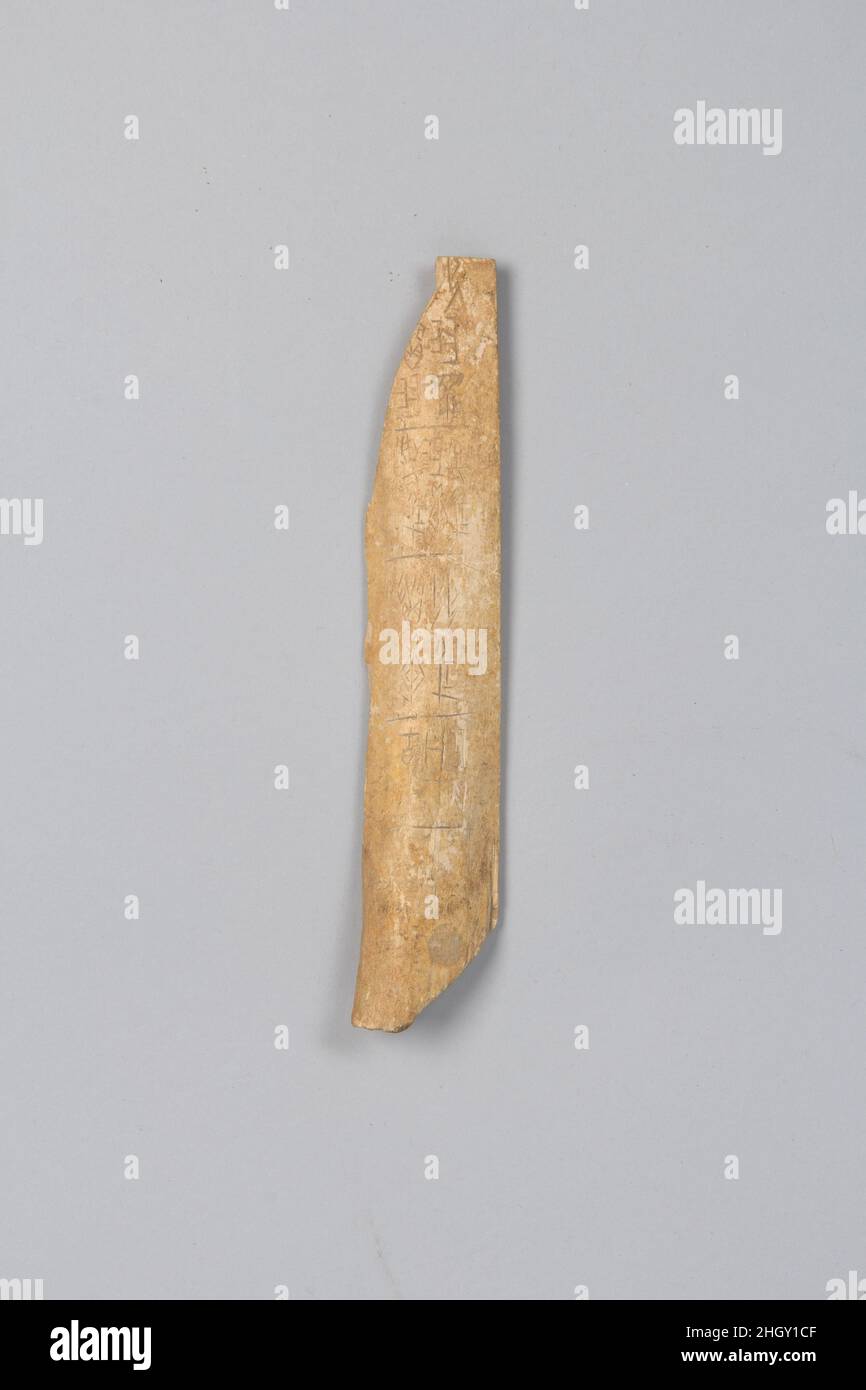 Oracle bone China. Oracle bone. China. Inscribed bone. Shang dynasty (ca. 1600–1046 B.C.). Bone Stock Photohttps://www.alamy.com/image-license-details/?v=1https://www.alamy.com/oracle-bone-china-oracle-bone-china-inscribed-bone-shang-dynasty-ca-16001046-bc-bone-image457897903.html
Oracle bone China. Oracle bone. China. Inscribed bone. Shang dynasty (ca. 1600–1046 B.C.). Bone Stock Photohttps://www.alamy.com/image-license-details/?v=1https://www.alamy.com/oracle-bone-china-oracle-bone-china-inscribed-bone-shang-dynasty-ca-16001046-bc-bone-image457897903.htmlRM2HGY1CF–Oracle bone China. Oracle bone. China. Inscribed bone. Shang dynasty (ca. 1600–1046 B.C.). Bone
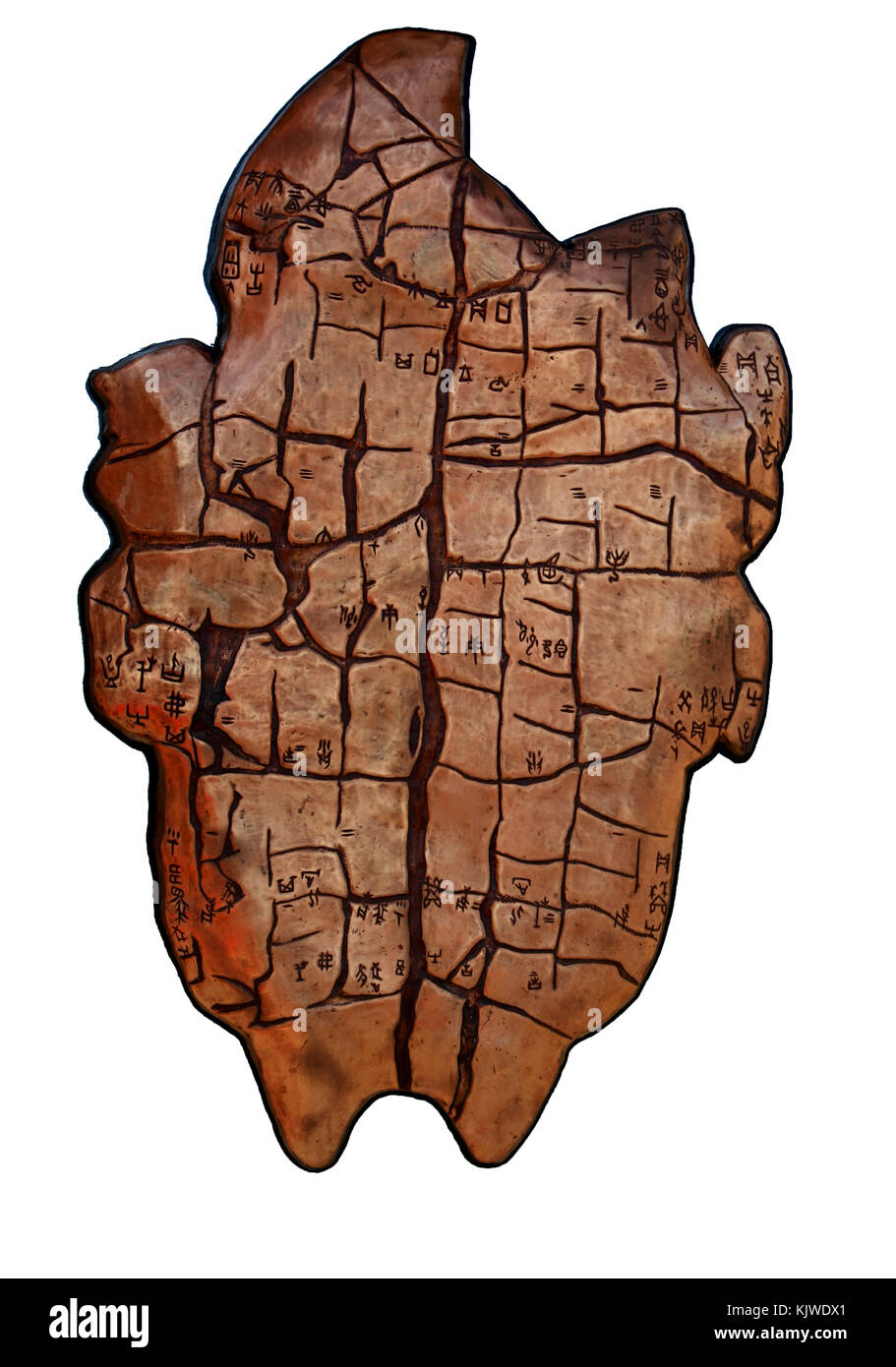 November 27, 2017 - China - CHINA-November 2017:(EDITORIAL USE ONLY. CHINA OUT) An ancient oracle-bone inscriptions. Chinese oracle-bone inscriptions have recently been included in the Memory of the World Register, a list of documentary heritage of the UNESCO, according to the UN agency's website.Oracle-bone inscriptions were excavated from the Ruins of Yin in Anyang, Central China's Henan Province. Inscriptions on tortoise shells and animal bones represent the original characters of the Chinese written language, which date back to the Shang Dynasty (Credit Image: © SIPA Asia via ZUMA Wire) Stock Photohttps://www.alamy.com/image-license-details/?v=1https://www.alamy.com/stock-image-november-27-2017-china-china-november-2017editorial-use-only-china-166516841.html
November 27, 2017 - China - CHINA-November 2017:(EDITORIAL USE ONLY. CHINA OUT) An ancient oracle-bone inscriptions. Chinese oracle-bone inscriptions have recently been included in the Memory of the World Register, a list of documentary heritage of the UNESCO, according to the UN agency's website.Oracle-bone inscriptions were excavated from the Ruins of Yin in Anyang, Central China's Henan Province. Inscriptions on tortoise shells and animal bones represent the original characters of the Chinese written language, which date back to the Shang Dynasty (Credit Image: © SIPA Asia via ZUMA Wire) Stock Photohttps://www.alamy.com/image-license-details/?v=1https://www.alamy.com/stock-image-november-27-2017-china-china-november-2017editorial-use-only-china-166516841.htmlRMKJWDX1–November 27, 2017 - China - CHINA-November 2017:(EDITORIAL USE ONLY. CHINA OUT) An ancient oracle-bone inscriptions. Chinese oracle-bone inscriptions have recently been included in the Memory of the World Register, a list of documentary heritage of the UNESCO, according to the UN agency's website.Oracle-bone inscriptions were excavated from the Ruins of Yin in Anyang, Central China's Henan Province. Inscriptions on tortoise shells and animal bones represent the original characters of the Chinese written language, which date back to the Shang Dynasty (Credit Image: © SIPA Asia via ZUMA Wire)
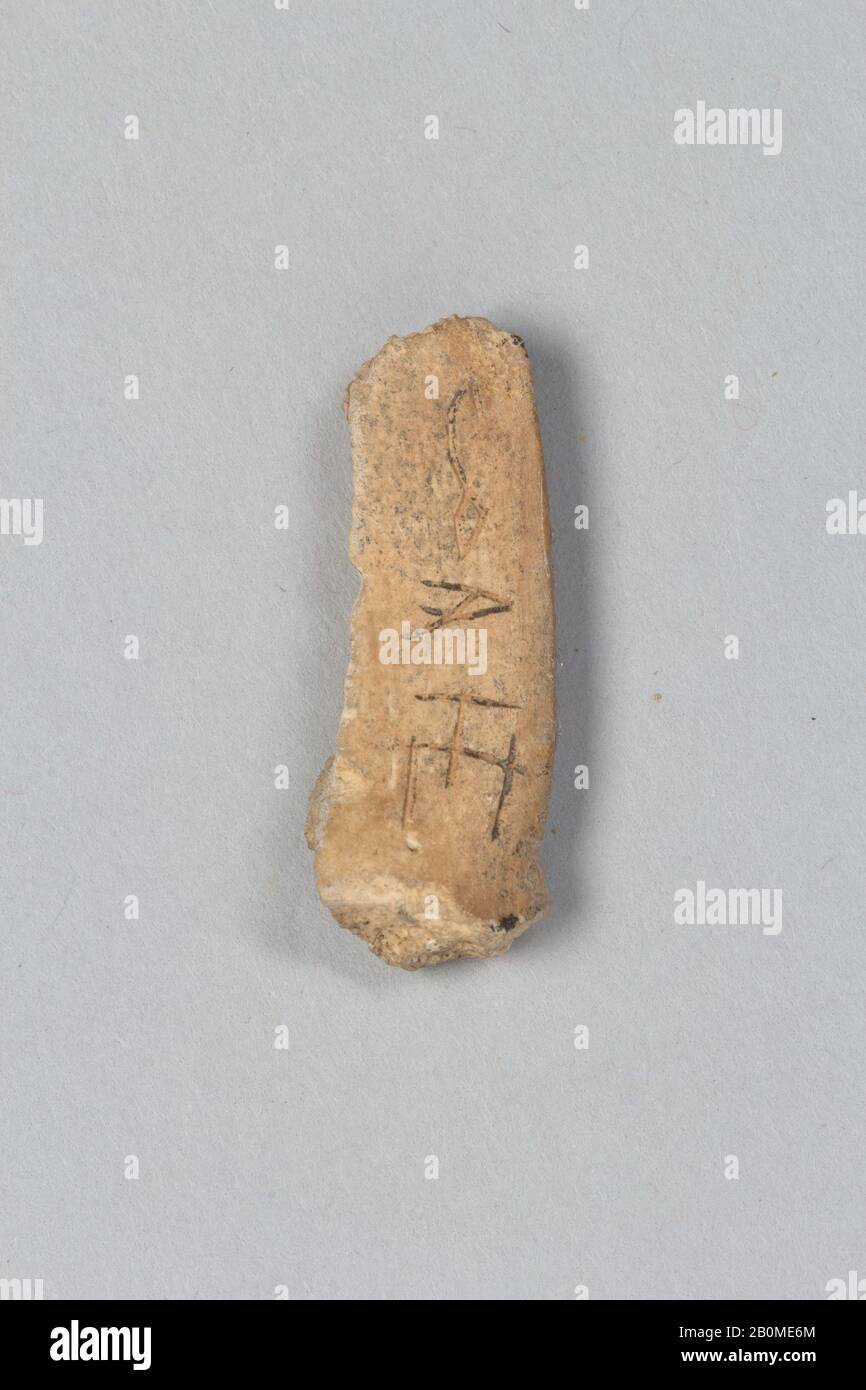 Oracle bone fragment, China, Shang dynasty (ca. 1600–1046 B.C.), Culture: China, Inscribed bone, 1 x 3/8 in. (2.5 x 1 cm), Bone Stock Photohttps://www.alamy.com/image-license-details/?v=1https://www.alamy.com/oracle-bone-fragment-china-shang-dynasty-ca-16001046-bc-culture-china-inscribed-bone-1-x-38-in-25-x-1-cm-bone-image344657564.html
Oracle bone fragment, China, Shang dynasty (ca. 1600–1046 B.C.), Culture: China, Inscribed bone, 1 x 3/8 in. (2.5 x 1 cm), Bone Stock Photohttps://www.alamy.com/image-license-details/?v=1https://www.alamy.com/oracle-bone-fragment-china-shang-dynasty-ca-16001046-bc-culture-china-inscribed-bone-1-x-38-in-25-x-1-cm-bone-image344657564.htmlRM2B0ME6M–Oracle bone fragment, China, Shang dynasty (ca. 1600–1046 B.C.), Culture: China, Inscribed bone, 1 x 3/8 in. (2.5 x 1 cm), Bone
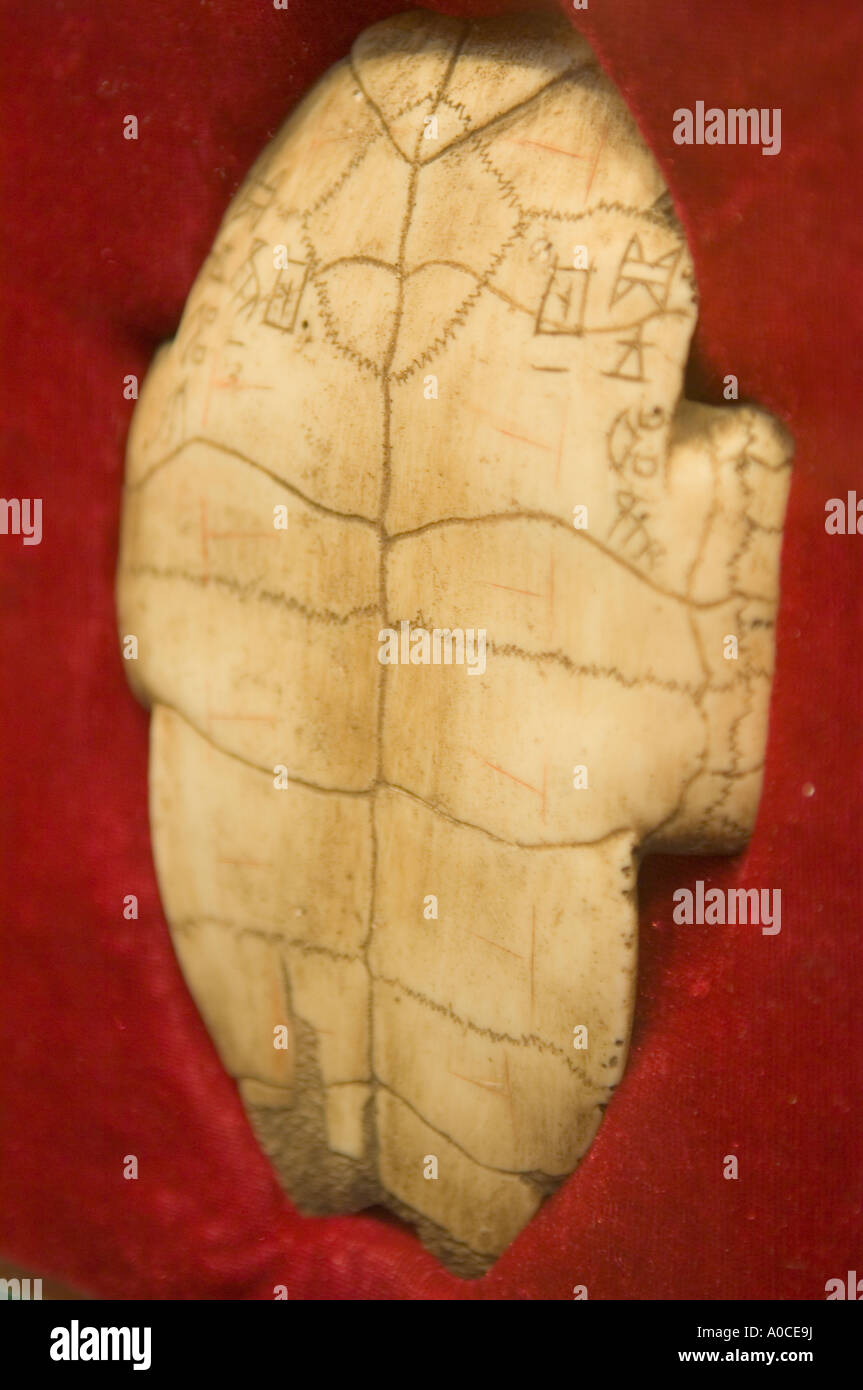 the biggest Inscribed Oracle Bone From the Shang Dynasty in Yinxu city, Henan Province, China Stock Photohttps://www.alamy.com/image-license-details/?v=1https://www.alamy.com/the-biggest-inscribed-oracle-bone-from-the-shang-dynasty-in-yinxu-image9952205.html
the biggest Inscribed Oracle Bone From the Shang Dynasty in Yinxu city, Henan Province, China Stock Photohttps://www.alamy.com/image-license-details/?v=1https://www.alamy.com/the-biggest-inscribed-oracle-bone-from-the-shang-dynasty-in-yinxu-image9952205.htmlRMA0CE9J–the biggest Inscribed Oracle Bone From the Shang Dynasty in Yinxu city, Henan Province, China
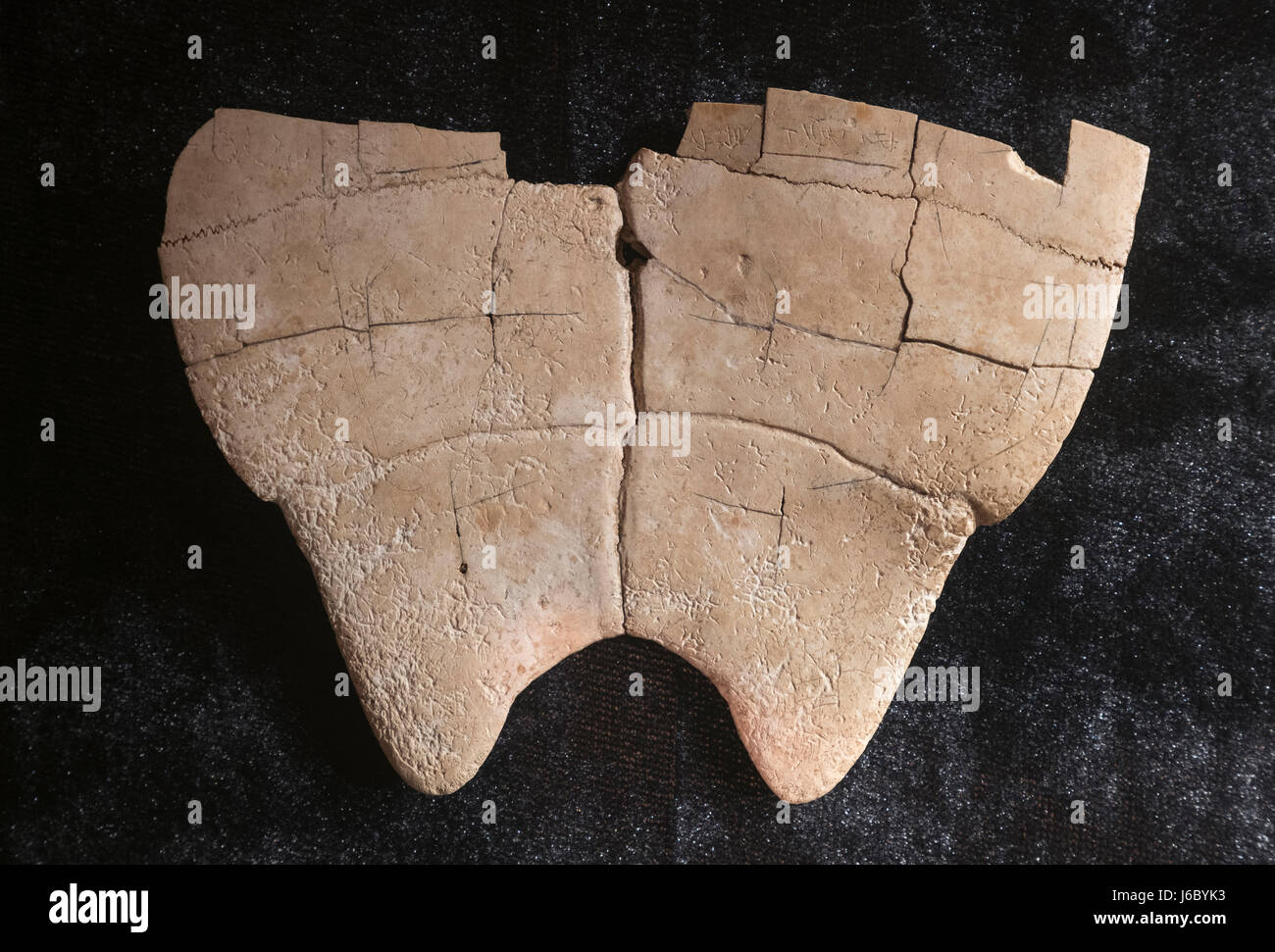 Oracle bone carved with characters. Late Shang Dynasty (13th century B.C.E - mid. 11th century B.C.E) Discovered in Yin relic in Anyang, Henan. Stock Photohttps://www.alamy.com/image-license-details/?v=1https://www.alamy.com/stock-photo-oracle-bone-carved-with-characters-late-shang-dynasty-13th-century-141634055.html
Oracle bone carved with characters. Late Shang Dynasty (13th century B.C.E - mid. 11th century B.C.E) Discovered in Yin relic in Anyang, Henan. Stock Photohttps://www.alamy.com/image-license-details/?v=1https://www.alamy.com/stock-photo-oracle-bone-carved-with-characters-late-shang-dynasty-13th-century-141634055.htmlRMJ6BYK3–Oracle bone carved with characters. Late Shang Dynasty (13th century B.C.E - mid. 11th century B.C.E) Discovered in Yin relic in Anyang, Henan.
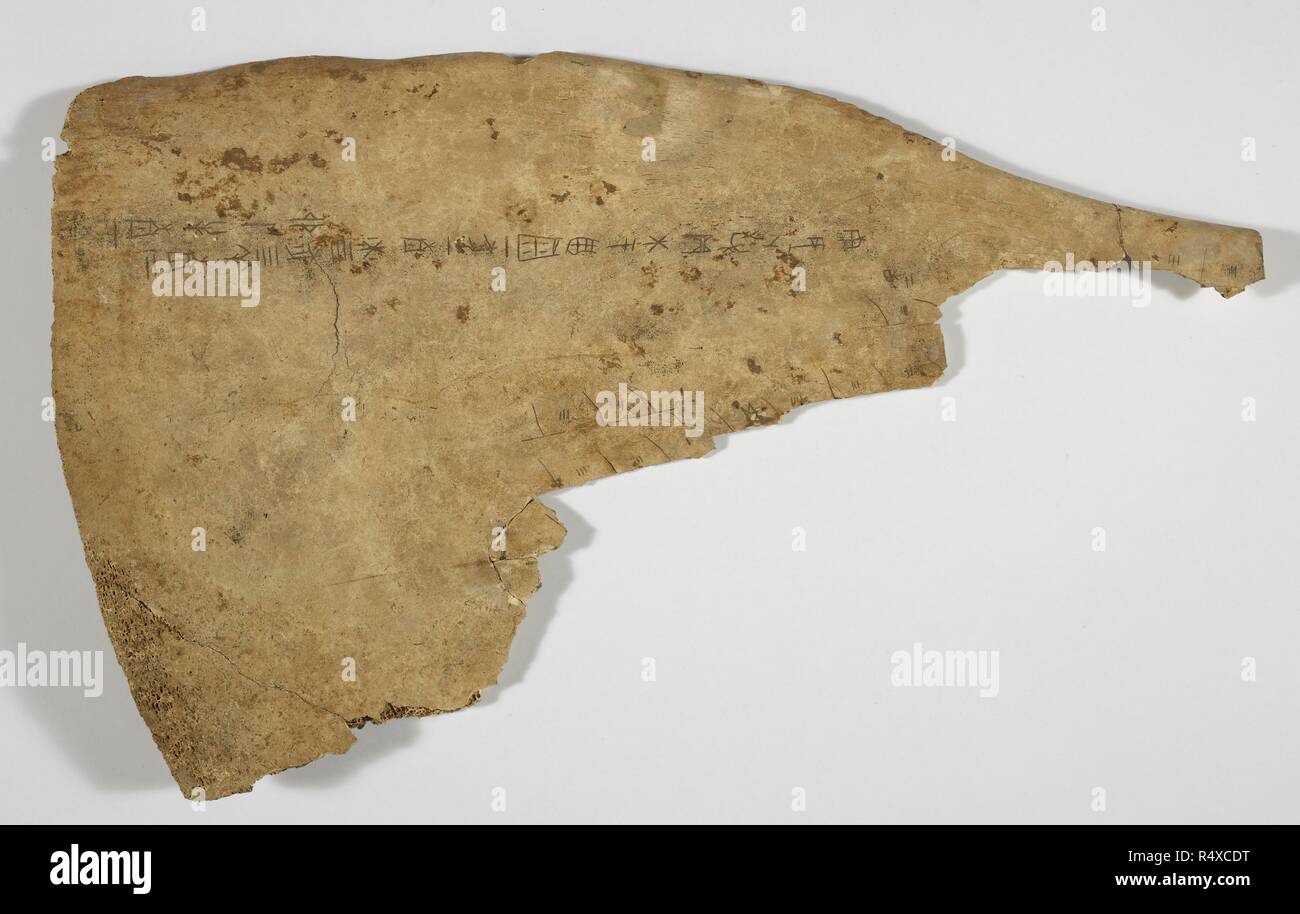 Chinese oracle bone. China, 16th-10th century BC. Diviners of the Shang dynasty (16th-10th centuries B.C.) produced oracles by reading cracks on ox bones. Such bones bear the earliest writing known in China. Originally published/produced in China, 16th-10th century BC. . Source: Or. 7694, 1987. Stock Photohttps://www.alamy.com/image-license-details/?v=1https://www.alamy.com/chinese-oracle-bone-china-16th-10th-century-bc-diviners-of-the-shang-dynasty-16th-10th-centuries-bc-produced-oracles-by-reading-cracks-on-ox-bones-such-bones-bear-the-earliest-writing-known-in-china-originally-publishedproduced-in-china-16th-10th-century-bc-source-or-7694-1987-image226773956.html
Chinese oracle bone. China, 16th-10th century BC. Diviners of the Shang dynasty (16th-10th centuries B.C.) produced oracles by reading cracks on ox bones. Such bones bear the earliest writing known in China. Originally published/produced in China, 16th-10th century BC. . Source: Or. 7694, 1987. Stock Photohttps://www.alamy.com/image-license-details/?v=1https://www.alamy.com/chinese-oracle-bone-china-16th-10th-century-bc-diviners-of-the-shang-dynasty-16th-10th-centuries-bc-produced-oracles-by-reading-cracks-on-ox-bones-such-bones-bear-the-earliest-writing-known-in-china-originally-publishedproduced-in-china-16th-10th-century-bc-source-or-7694-1987-image226773956.htmlRMR4XCDT–Chinese oracle bone. China, 16th-10th century BC. Diviners of the Shang dynasty (16th-10th centuries B.C.) produced oracles by reading cracks on ox bones. Such bones bear the earliest writing known in China. Originally published/produced in China, 16th-10th century BC. . Source: Or. 7694, 1987.
 Oracle bone fragment. Culture: China. Dimensions: 3 1/2 × 5 in. (8.9 × 12.7 cm). Museum: Metropolitan Museum of Art, New York, USA. Stock Photohttps://www.alamy.com/image-license-details/?v=1https://www.alamy.com/oracle-bone-fragment-culture-china-dimensions-3-12-5-in-89-127-cm-museum-metropolitan-museum-of-art-new-york-usa-image213345634.html
Oracle bone fragment. Culture: China. Dimensions: 3 1/2 × 5 in. (8.9 × 12.7 cm). Museum: Metropolitan Museum of Art, New York, USA. Stock Photohttps://www.alamy.com/image-license-details/?v=1https://www.alamy.com/oracle-bone-fragment-culture-china-dimensions-3-12-5-in-89-127-cm-museum-metropolitan-museum-of-art-new-york-usa-image213345634.htmlRMPB2MEX–Oracle bone fragment. Culture: China. Dimensions: 3 1/2 × 5 in. (8.9 × 12.7 cm). Museum: Metropolitan Museum of Art, New York, USA.
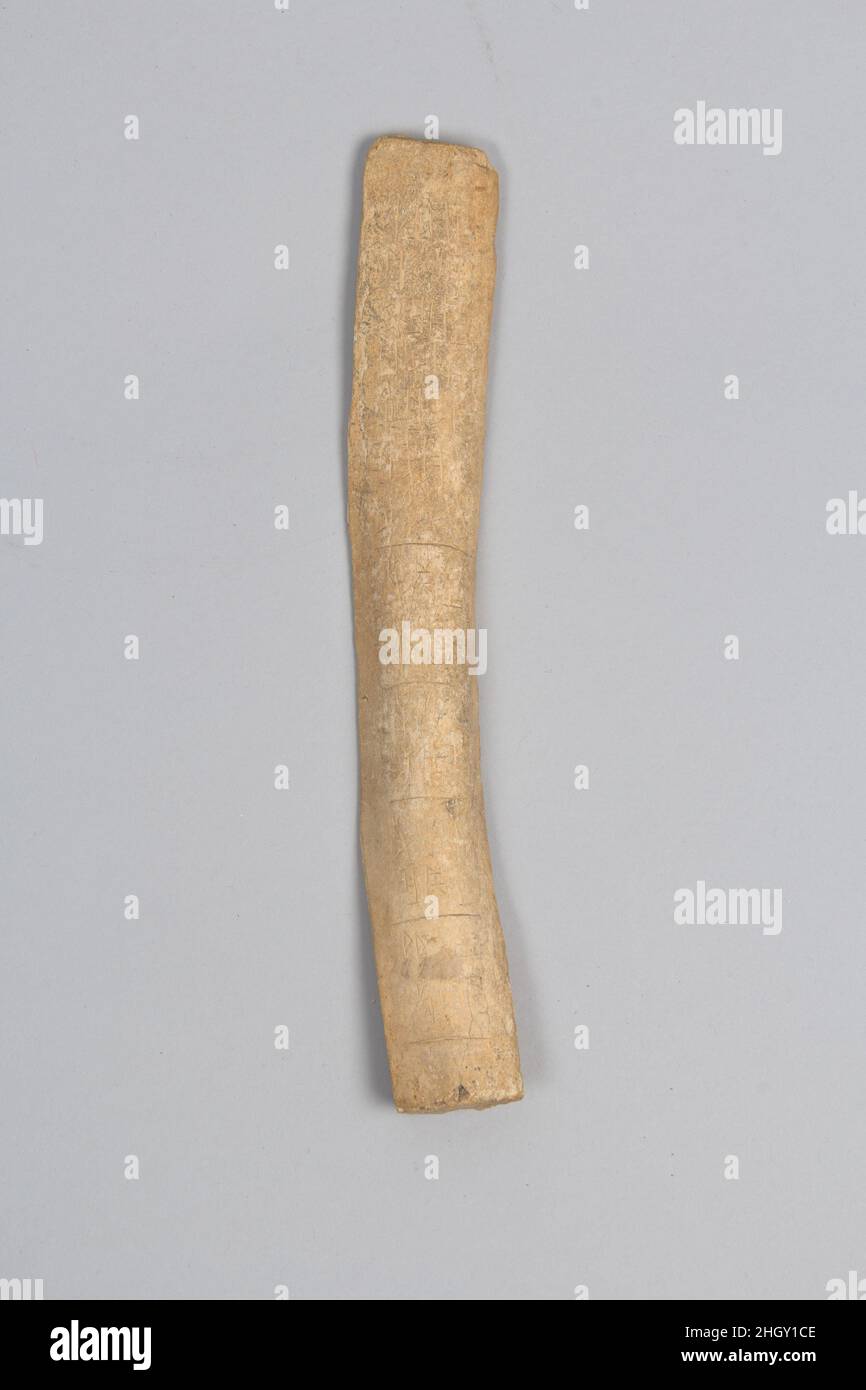 Oracle bone China. Oracle bone. China. Inscribed bone. Shang dynasty (ca. 1600–1046 B.C.). Bone Stock Photohttps://www.alamy.com/image-license-details/?v=1https://www.alamy.com/oracle-bone-china-oracle-bone-china-inscribed-bone-shang-dynasty-ca-16001046-bc-bone-image457897902.html
Oracle bone China. Oracle bone. China. Inscribed bone. Shang dynasty (ca. 1600–1046 B.C.). Bone Stock Photohttps://www.alamy.com/image-license-details/?v=1https://www.alamy.com/oracle-bone-china-oracle-bone-china-inscribed-bone-shang-dynasty-ca-16001046-bc-bone-image457897902.htmlRM2HGY1CE–Oracle bone China. Oracle bone. China. Inscribed bone. Shang dynasty (ca. 1600–1046 B.C.). Bone
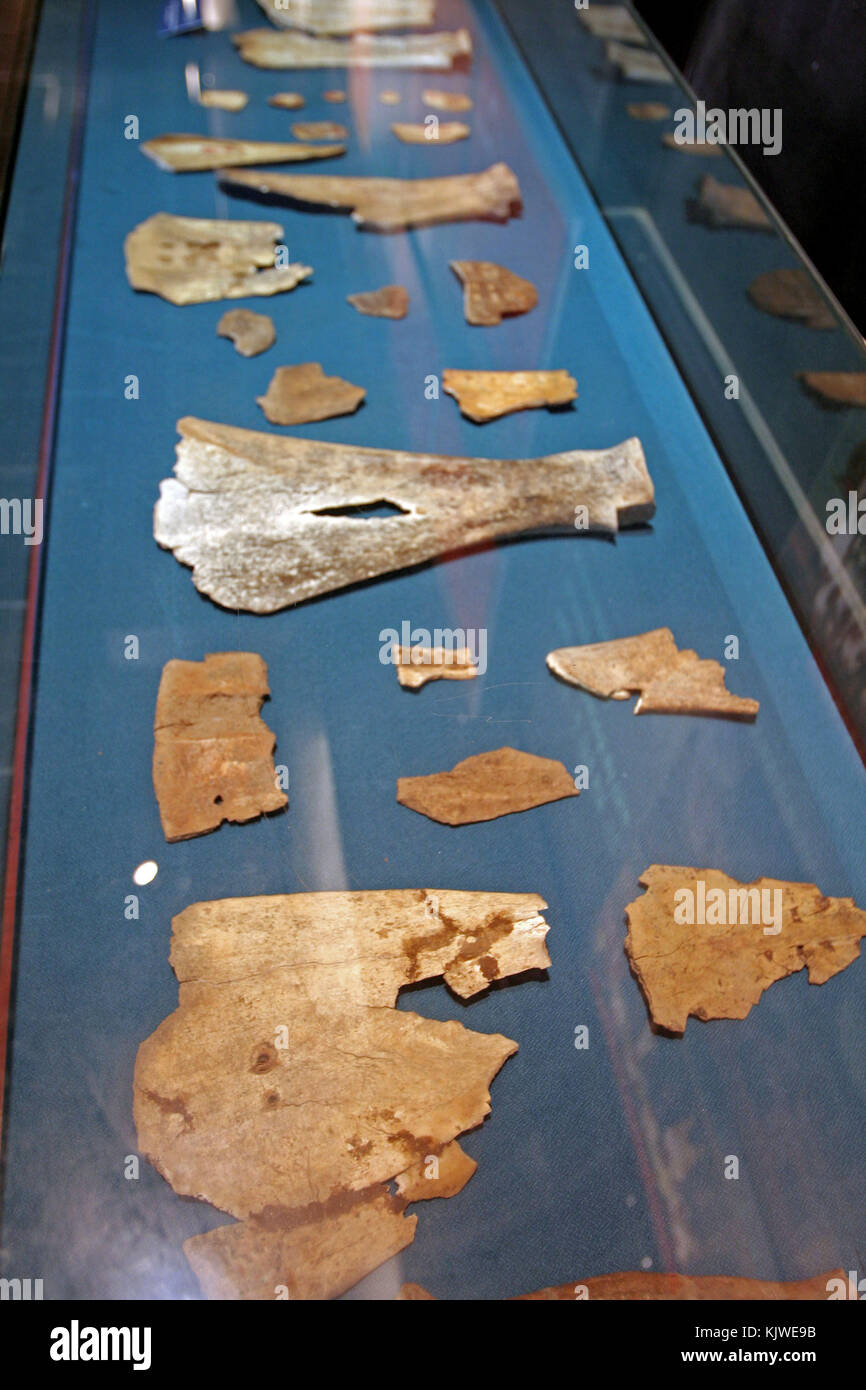 China. 27th Nov, 2017. CHINA-November 2017:(EDITORIAL USE ONLY. CHINA OUT) An ancient oracle-bone inscriptions. Chinese oracle-bone inscriptions have recently been included in the Memory of the World Register, a list of documentary heritage of the UNESCO, according to the UN agency's website.Oracle-bone inscriptions were excavated from the Ruins of Yin in Anyang, Central China's Henan Province. Inscriptions on tortoise shells and animal bones represent the original characters of the Chinese written language, which date back to the Shang Dynasty Credit: SIPA Asia/ZUMA Wire/Alamy Live News Stock Photohttps://www.alamy.com/image-license-details/?v=1https://www.alamy.com/stock-image-china-27th-nov-2017-china-november-2017editorial-use-only-china-out-166517159.html
China. 27th Nov, 2017. CHINA-November 2017:(EDITORIAL USE ONLY. CHINA OUT) An ancient oracle-bone inscriptions. Chinese oracle-bone inscriptions have recently been included in the Memory of the World Register, a list of documentary heritage of the UNESCO, according to the UN agency's website.Oracle-bone inscriptions were excavated from the Ruins of Yin in Anyang, Central China's Henan Province. Inscriptions on tortoise shells and animal bones represent the original characters of the Chinese written language, which date back to the Shang Dynasty Credit: SIPA Asia/ZUMA Wire/Alamy Live News Stock Photohttps://www.alamy.com/image-license-details/?v=1https://www.alamy.com/stock-image-china-27th-nov-2017-china-november-2017editorial-use-only-china-out-166517159.htmlRMKJWE9B–China. 27th Nov, 2017. CHINA-November 2017:(EDITORIAL USE ONLY. CHINA OUT) An ancient oracle-bone inscriptions. Chinese oracle-bone inscriptions have recently been included in the Memory of the World Register, a list of documentary heritage of the UNESCO, according to the UN agency's website.Oracle-bone inscriptions were excavated from the Ruins of Yin in Anyang, Central China's Henan Province. Inscriptions on tortoise shells and animal bones represent the original characters of the Chinese written language, which date back to the Shang Dynasty Credit: SIPA Asia/ZUMA Wire/Alamy Live News
 Oracle bone fragment China. Oracle bone fragment. China. Bone. Shang dynasty (ca. 1600–1046 B.C.). Bone Stock Photohttps://www.alamy.com/image-license-details/?v=1https://www.alamy.com/oracle-bone-fragment-china-oracle-bone-fragment-china-bone-shang-dynasty-ca-16001046-bc-bone-image458118544.html
Oracle bone fragment China. Oracle bone fragment. China. Bone. Shang dynasty (ca. 1600–1046 B.C.). Bone Stock Photohttps://www.alamy.com/image-license-details/?v=1https://www.alamy.com/oracle-bone-fragment-china-oracle-bone-fragment-china-bone-shang-dynasty-ca-16001046-bc-bone-image458118544.htmlRM2HH92TG–Oracle bone fragment China. Oracle bone fragment. China. Bone. Shang dynasty (ca. 1600–1046 B.C.). Bone
 Oracle bone fragment China. Oracle bone fragment. China. Bone. Shang dynasty (ca. 1600–1046 B.C.). Bone Stock Photohttps://www.alamy.com/image-license-details/?v=1https://www.alamy.com/oracle-bone-fragment-china-oracle-bone-fragment-china-bone-shang-dynasty-ca-16001046-bc-bone-image457897926.html
Oracle bone fragment China. Oracle bone fragment. China. Bone. Shang dynasty (ca. 1600–1046 B.C.). Bone Stock Photohttps://www.alamy.com/image-license-details/?v=1https://www.alamy.com/oracle-bone-fragment-china-oracle-bone-fragment-china-bone-shang-dynasty-ca-16001046-bc-bone-image457897926.htmlRM2HGY1DA–Oracle bone fragment China. Oracle bone fragment. China. Bone. Shang dynasty (ca. 1600–1046 B.C.). Bone
 Oracle bone fragment, China, Shang dynasty (ca. 1600–1046 B.C.), Culture: China, Inscribed bone, 3 1/2 × 8 in. (8.9 × 20.3 cm), Bone Stock Photohttps://www.alamy.com/image-license-details/?v=1https://www.alamy.com/oracle-bone-fragment-china-shang-dynasty-ca-16001046-bc-culture-china-inscribed-bone-3-12-8-in-89-203-cm-bone-image344657817.html
Oracle bone fragment, China, Shang dynasty (ca. 1600–1046 B.C.), Culture: China, Inscribed bone, 3 1/2 × 8 in. (8.9 × 20.3 cm), Bone Stock Photohttps://www.alamy.com/image-license-details/?v=1https://www.alamy.com/oracle-bone-fragment-china-shang-dynasty-ca-16001046-bc-culture-china-inscribed-bone-3-12-8-in-89-203-cm-bone-image344657817.htmlRM2B0MEFN–Oracle bone fragment, China, Shang dynasty (ca. 1600–1046 B.C.), Culture: China, Inscribed bone, 3 1/2 × 8 in. (8.9 × 20.3 cm), Bone
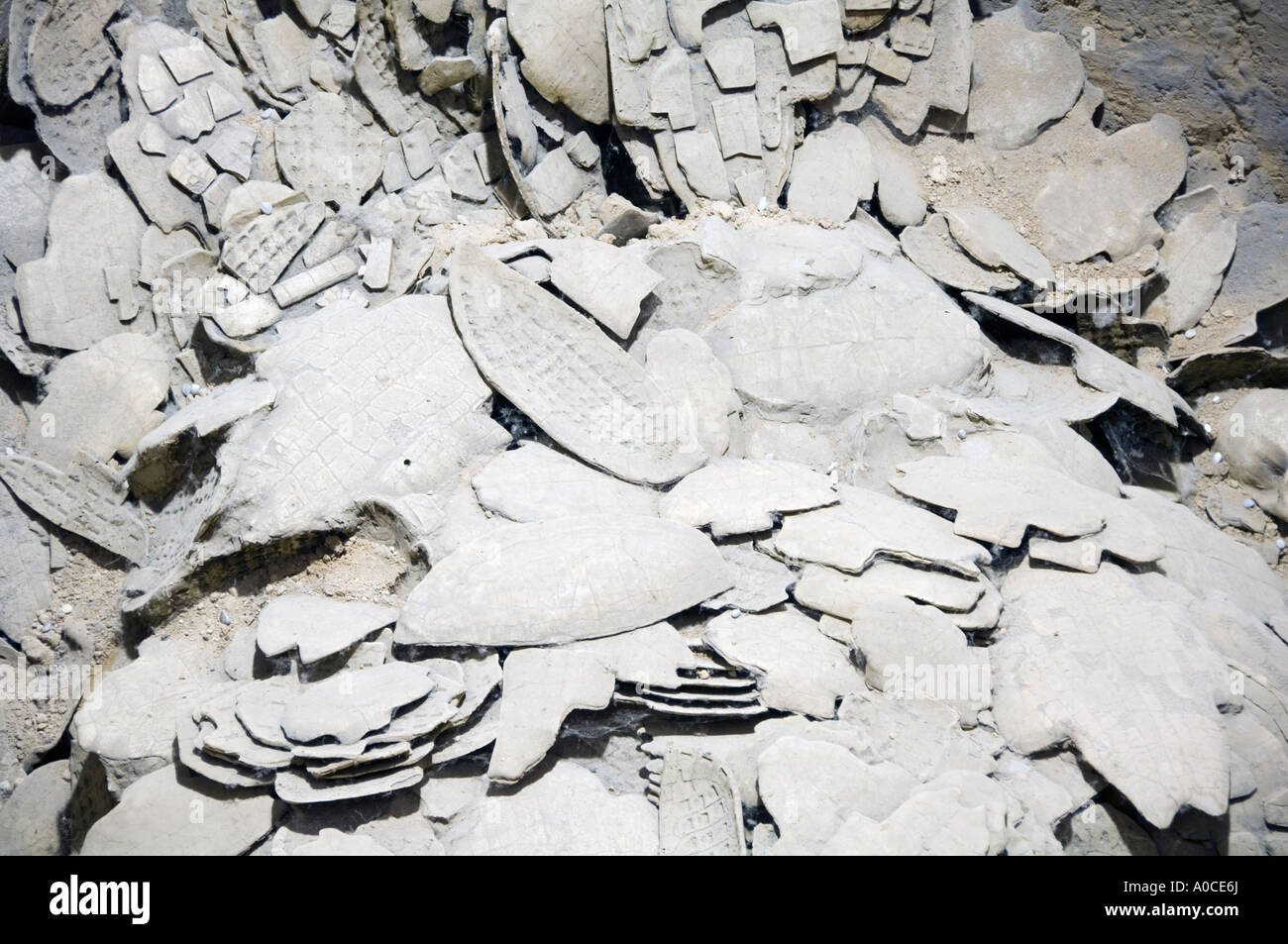 Inscribed Oracle Bone From the Shang Dynasty in Yinxu city, Henan Province, China Stock Photohttps://www.alamy.com/image-license-details/?v=1https://www.alamy.com/inscribed-oracle-bone-from-the-shang-dynasty-in-yinxu-city-henan-province-image9952169.html
Inscribed Oracle Bone From the Shang Dynasty in Yinxu city, Henan Province, China Stock Photohttps://www.alamy.com/image-license-details/?v=1https://www.alamy.com/inscribed-oracle-bone-from-the-shang-dynasty-in-yinxu-city-henan-province-image9952169.htmlRMA0CE6J–Inscribed Oracle Bone From the Shang Dynasty in Yinxu city, Henan Province, China
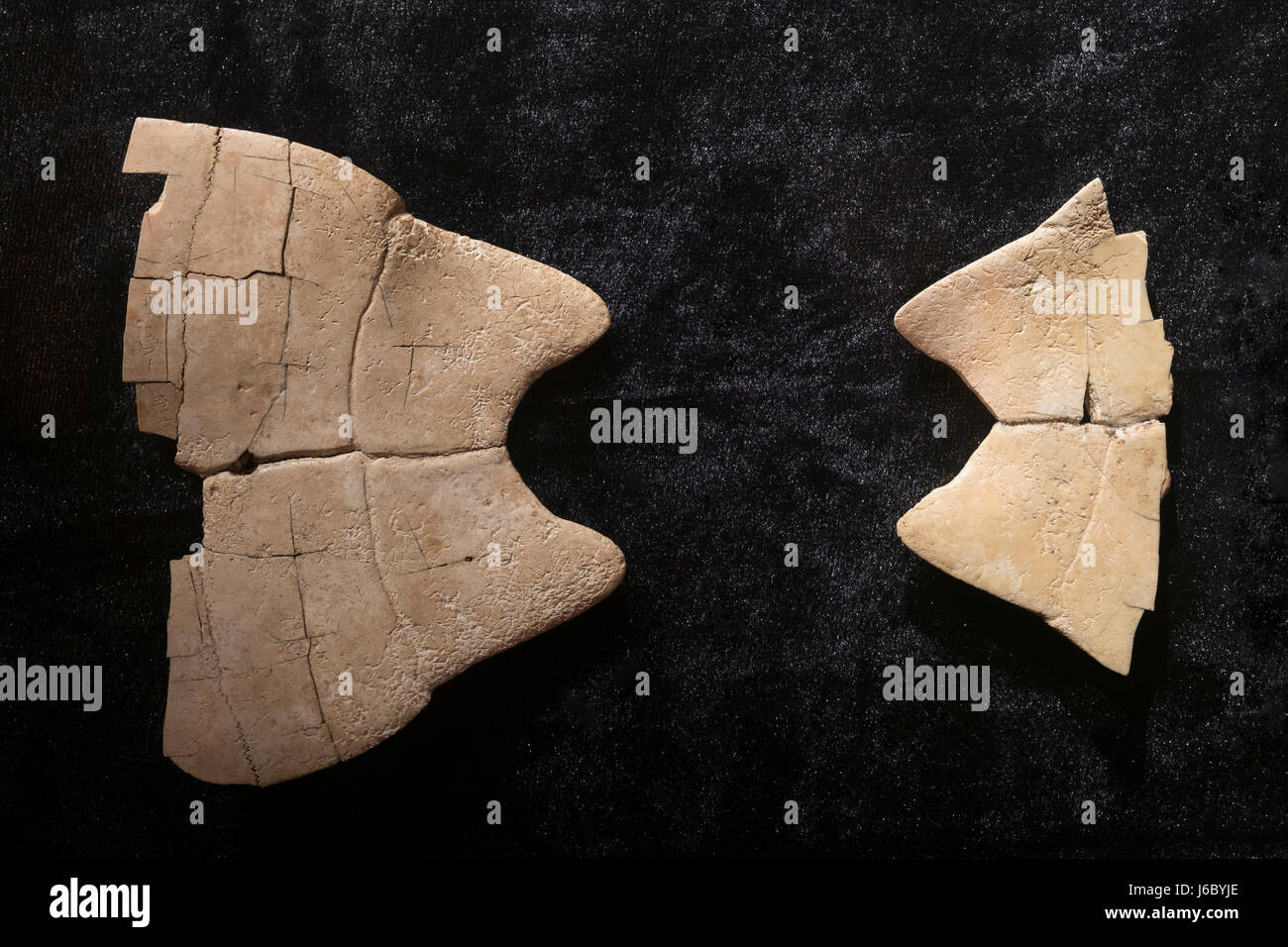 Oracle bone carved with characters. Late Shang Dynasty (13th century B.C.E - mid. 11th century B.C.E) Discovered in Yin relic in Anyang, Henan. Stock Photohttps://www.alamy.com/image-license-details/?v=1https://www.alamy.com/stock-photo-oracle-bone-carved-with-characters-late-shang-dynasty-13th-century-141634038.html
Oracle bone carved with characters. Late Shang Dynasty (13th century B.C.E - mid. 11th century B.C.E) Discovered in Yin relic in Anyang, Henan. Stock Photohttps://www.alamy.com/image-license-details/?v=1https://www.alamy.com/stock-photo-oracle-bone-carved-with-characters-late-shang-dynasty-13th-century-141634038.htmlRMJ6BYJE–Oracle bone carved with characters. Late Shang Dynasty (13th century B.C.E - mid. 11th century B.C.E) Discovered in Yin relic in Anyang, Henan.
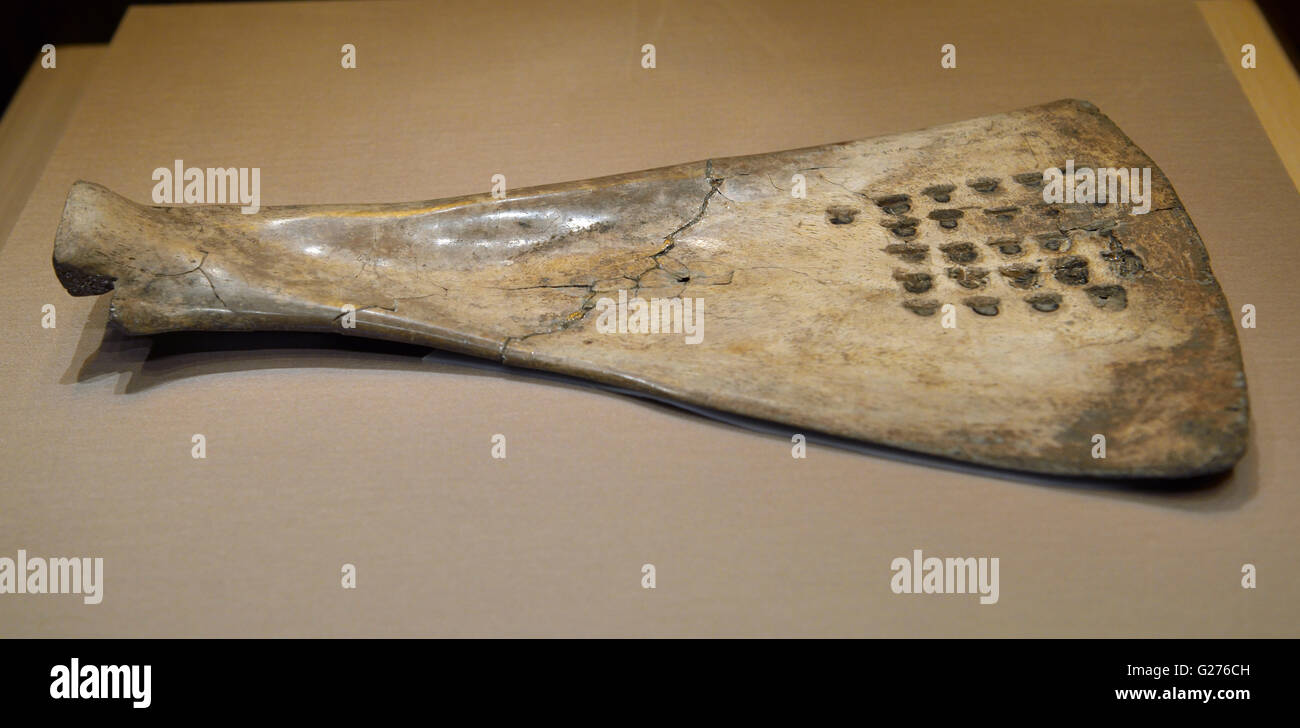 Oracle bone with scripts unearthed from The Tomb of Fu Hao. Beijing Capital Museum. Stock Photohttps://www.alamy.com/image-license-details/?v=1https://www.alamy.com/stock-photo-oracle-bone-with-scripts-unearthed-from-the-tomb-of-fu-hao-beijing-104650241.html
Oracle bone with scripts unearthed from The Tomb of Fu Hao. Beijing Capital Museum. Stock Photohttps://www.alamy.com/image-license-details/?v=1https://www.alamy.com/stock-photo-oracle-bone-with-scripts-unearthed-from-the-tomb-of-fu-hao-beijing-104650241.htmlRMG276CH–Oracle bone with scripts unearthed from The Tomb of Fu Hao. Beijing Capital Museum.
 Chinese oracle bone. China, 16th-10th century B.C. Diviners of the Shang dynasty (16th-10th centuries B.C.) produced oracles by reading cracks on ox bones. Such bones bear the earliest writing known in China. The pit marks were produced by a hot poker. Originally published/produced in China, 16th-10th century B.C. . Source: Or. 7694, 1535v. Language: Chinese. Stock Photohttps://www.alamy.com/image-license-details/?v=1https://www.alamy.com/chinese-oracle-bone-china-16th-10th-century-bc-diviners-of-the-shang-dynasty-16th-10th-centuries-bc-produced-oracles-by-reading-cracks-on-ox-bones-such-bones-bear-the-earliest-writing-known-in-china-the-pit-marks-were-produced-by-a-hot-poker-originally-publishedproduced-in-china-16th-10th-century-bc-source-or-7694-1535v-language-chinese-image227108874.html
Chinese oracle bone. China, 16th-10th century B.C. Diviners of the Shang dynasty (16th-10th centuries B.C.) produced oracles by reading cracks on ox bones. Such bones bear the earliest writing known in China. The pit marks were produced by a hot poker. Originally published/produced in China, 16th-10th century B.C. . Source: Or. 7694, 1535v. Language: Chinese. Stock Photohttps://www.alamy.com/image-license-details/?v=1https://www.alamy.com/chinese-oracle-bone-china-16th-10th-century-bc-diviners-of-the-shang-dynasty-16th-10th-centuries-bc-produced-oracles-by-reading-cracks-on-ox-bones-such-bones-bear-the-earliest-writing-known-in-china-the-pit-marks-were-produced-by-a-hot-poker-originally-publishedproduced-in-china-16th-10th-century-bc-source-or-7694-1535v-language-chinese-image227108874.htmlRMR5DKK6–Chinese oracle bone. China, 16th-10th century B.C. Diviners of the Shang dynasty (16th-10th centuries B.C.) produced oracles by reading cracks on ox bones. Such bones bear the earliest writing known in China. The pit marks were produced by a hot poker. Originally published/produced in China, 16th-10th century B.C. . Source: Or. 7694, 1535v. Language: Chinese.
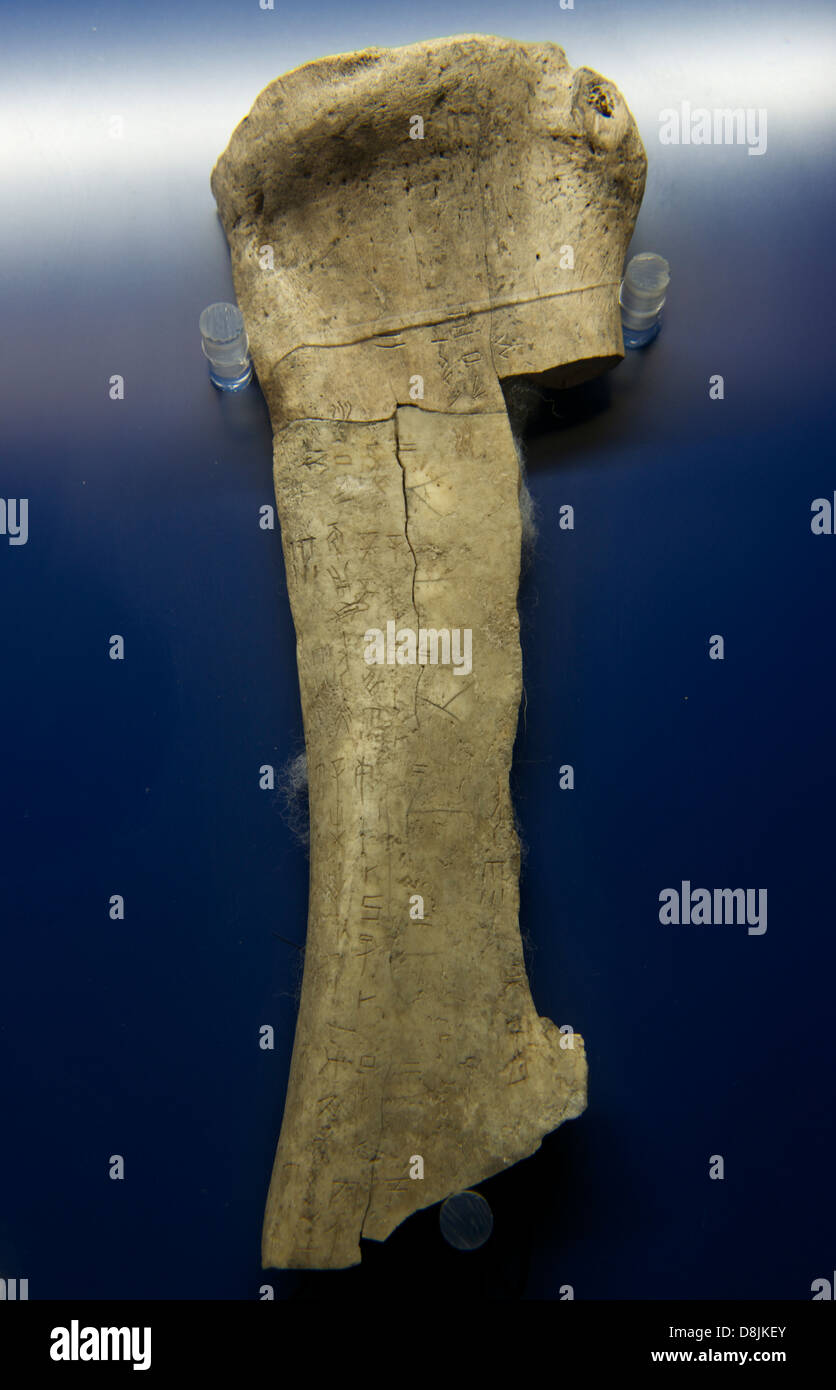 Oracle-Bone Inscriptions - Yin Ruin in Anyang, Henan province. Stock Photohttps://www.alamy.com/image-license-details/?v=1https://www.alamy.com/stock-photo-oracle-bone-inscriptions-yin-ruin-in-anyang-henan-province-56958803.html
Oracle-Bone Inscriptions - Yin Ruin in Anyang, Henan province. Stock Photohttps://www.alamy.com/image-license-details/?v=1https://www.alamy.com/stock-photo-oracle-bone-inscriptions-yin-ruin-in-anyang-henan-province-56958803.htmlRMD8JKEY–Oracle-Bone Inscriptions - Yin Ruin in Anyang, Henan province.
 Oracle bone fragment. Culture: China. Dimensions: 15/16 x 11/16 in. (2.4 x 1.7 cm). Museum: Metropolitan Museum of Art, New York, USA. Stock Photohttps://www.alamy.com/image-license-details/?v=1https://www.alamy.com/oracle-bone-fragment-culture-china-dimensions-1516-x-1116-in-24-x-17-cm-museum-metropolitan-museum-of-art-new-york-usa-image213422668.html
Oracle bone fragment. Culture: China. Dimensions: 15/16 x 11/16 in. (2.4 x 1.7 cm). Museum: Metropolitan Museum of Art, New York, USA. Stock Photohttps://www.alamy.com/image-license-details/?v=1https://www.alamy.com/oracle-bone-fragment-culture-china-dimensions-1516-x-1116-in-24-x-17-cm-museum-metropolitan-museum-of-art-new-york-usa-image213422668.htmlRMPB66P4–Oracle bone fragment. Culture: China. Dimensions: 15/16 x 11/16 in. (2.4 x 1.7 cm). Museum: Metropolitan Museum of Art, New York, USA.
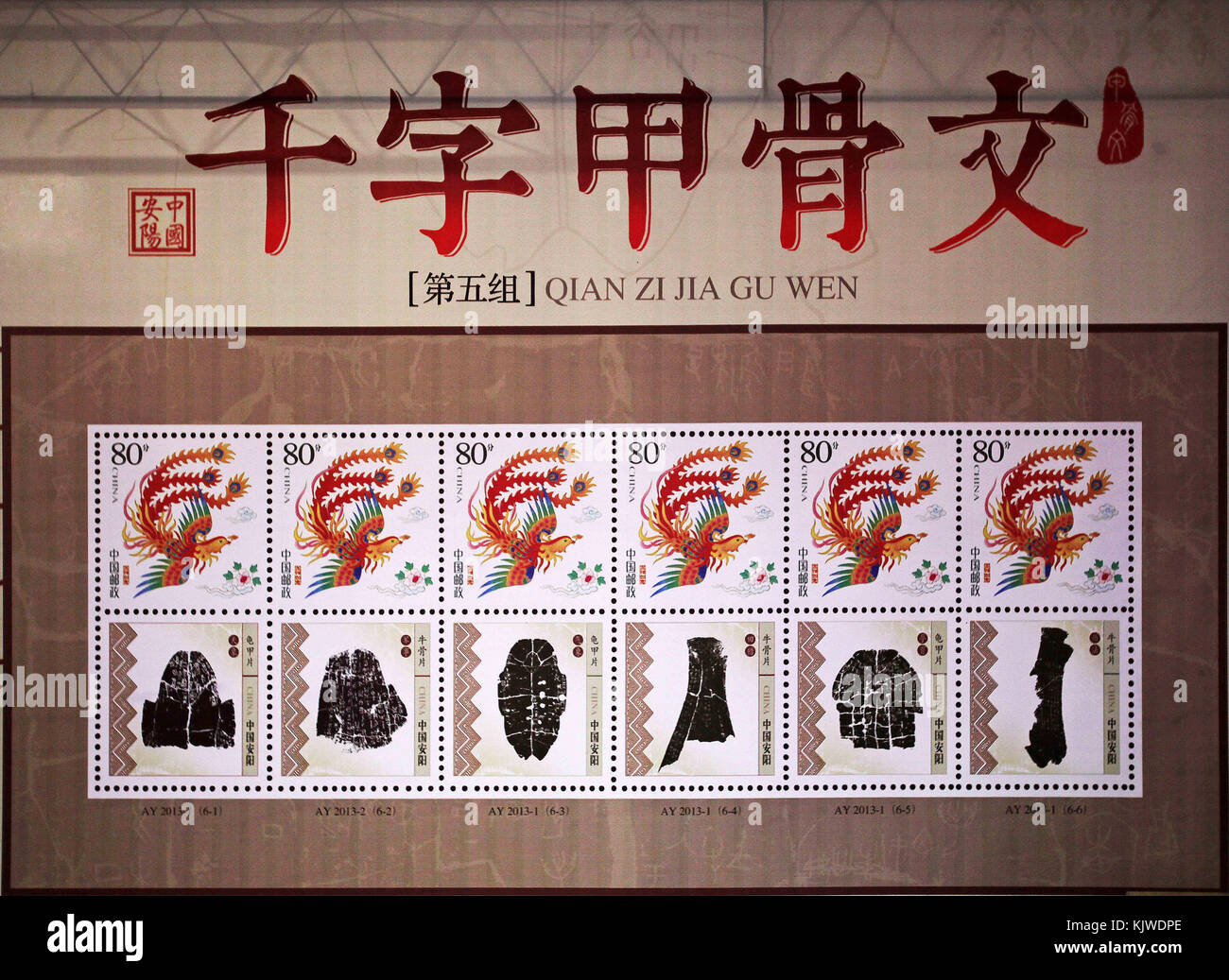 November 27, 2017 - China - CHINA-November 2017:(EDITORIAL USE ONLY. CHINA OUT) An ancient oracle-bone inscriptions. Chinese oracle-bone inscriptions have recently been included in the Memory of the World Register, a list of documentary heritage of the UNESCO, according to the UN agency's website.Oracle-bone inscriptions were excavated from the Ruins of Yin in Anyang, Central China's Henan Province. Inscriptions on tortoise shells and animal bones represent the original characters of the Chinese written language, which date back to the Shang Dynasty (Credit Image: © SIPA Asia via ZUMA Wire) Stock Photohttps://www.alamy.com/image-license-details/?v=1https://www.alamy.com/stock-image-november-27-2017-china-china-november-2017editorial-use-only-china-166516742.html
November 27, 2017 - China - CHINA-November 2017:(EDITORIAL USE ONLY. CHINA OUT) An ancient oracle-bone inscriptions. Chinese oracle-bone inscriptions have recently been included in the Memory of the World Register, a list of documentary heritage of the UNESCO, according to the UN agency's website.Oracle-bone inscriptions were excavated from the Ruins of Yin in Anyang, Central China's Henan Province. Inscriptions on tortoise shells and animal bones represent the original characters of the Chinese written language, which date back to the Shang Dynasty (Credit Image: © SIPA Asia via ZUMA Wire) Stock Photohttps://www.alamy.com/image-license-details/?v=1https://www.alamy.com/stock-image-november-27-2017-china-china-november-2017editorial-use-only-china-166516742.htmlRMKJWDPE–November 27, 2017 - China - CHINA-November 2017:(EDITORIAL USE ONLY. CHINA OUT) An ancient oracle-bone inscriptions. Chinese oracle-bone inscriptions have recently been included in the Memory of the World Register, a list of documentary heritage of the UNESCO, according to the UN agency's website.Oracle-bone inscriptions were excavated from the Ruins of Yin in Anyang, Central China's Henan Province. Inscriptions on tortoise shells and animal bones represent the original characters of the Chinese written language, which date back to the Shang Dynasty (Credit Image: © SIPA Asia via ZUMA Wire)
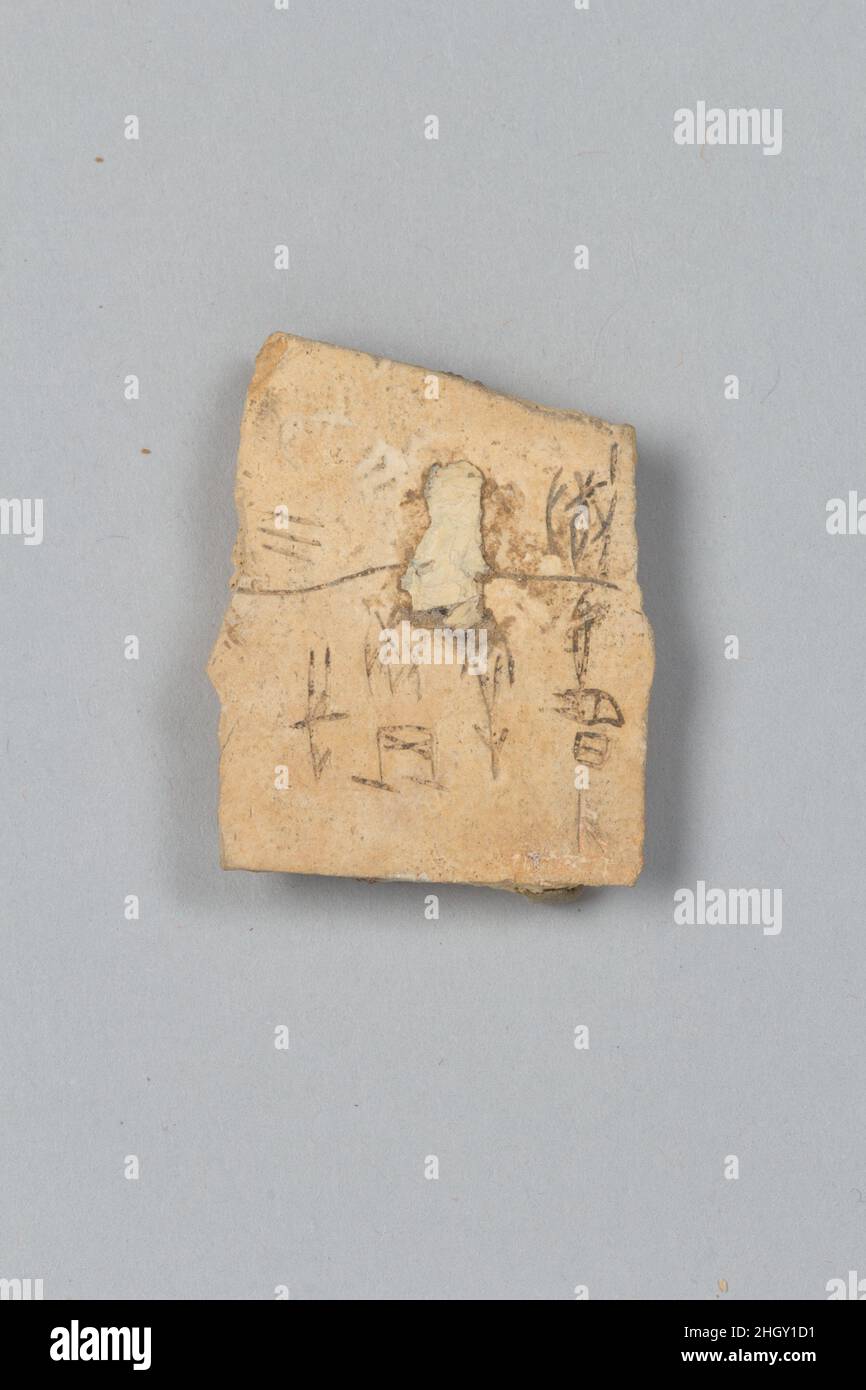 Oracle bone fragment China. Oracle bone fragment. China. Bone. Shang dynasty (ca. 1600–1046 B.C.). Bone Stock Photohttps://www.alamy.com/image-license-details/?v=1https://www.alamy.com/oracle-bone-fragment-china-oracle-bone-fragment-china-bone-shang-dynasty-ca-16001046-bc-bone-image457897917.html
Oracle bone fragment China. Oracle bone fragment. China. Bone. Shang dynasty (ca. 1600–1046 B.C.). Bone Stock Photohttps://www.alamy.com/image-license-details/?v=1https://www.alamy.com/oracle-bone-fragment-china-oracle-bone-fragment-china-bone-shang-dynasty-ca-16001046-bc-bone-image457897917.htmlRM2HGY1D1–Oracle bone fragment China. Oracle bone fragment. China. Bone. Shang dynasty (ca. 1600–1046 B.C.). Bone
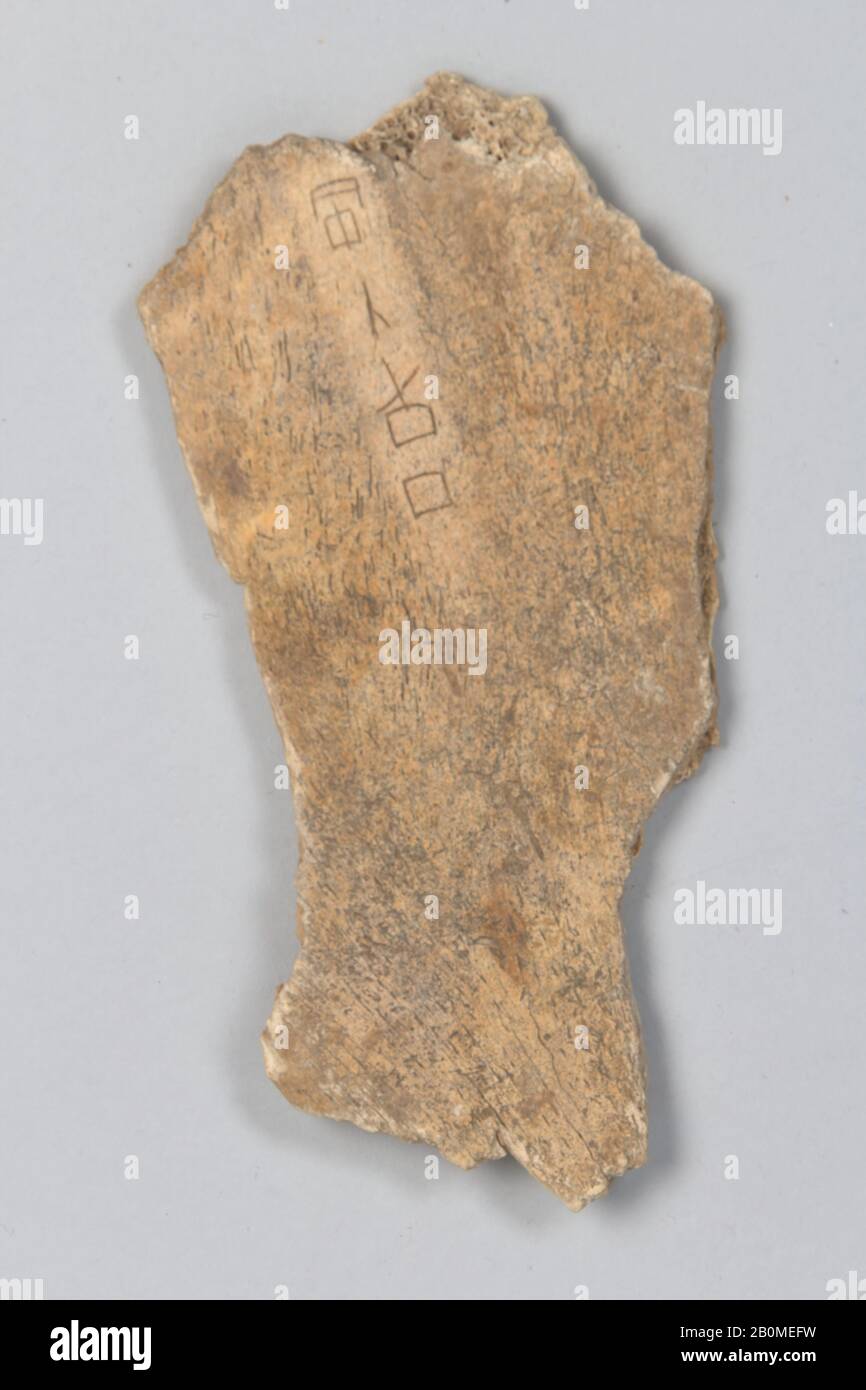 Oracle bone fragment, China, Shang dynasty (ca. 1600–1046 B.C.), Culture: China, Inscribed bone, 3 1/8 × 5 in. (7.9 × 12.7 cm), Bone Stock Photohttps://www.alamy.com/image-license-details/?v=1https://www.alamy.com/oracle-bone-fragment-china-shang-dynasty-ca-16001046-bc-culture-china-inscribed-bone-3-18-5-in-79-127-cm-bone-image344657821.html
Oracle bone fragment, China, Shang dynasty (ca. 1600–1046 B.C.), Culture: China, Inscribed bone, 3 1/8 × 5 in. (7.9 × 12.7 cm), Bone Stock Photohttps://www.alamy.com/image-license-details/?v=1https://www.alamy.com/oracle-bone-fragment-china-shang-dynasty-ca-16001046-bc-culture-china-inscribed-bone-3-18-5-in-79-127-cm-bone-image344657821.htmlRM2B0MEFW–Oracle bone fragment, China, Shang dynasty (ca. 1600–1046 B.C.), Culture: China, Inscribed bone, 3 1/8 × 5 in. (7.9 × 12.7 cm), Bone
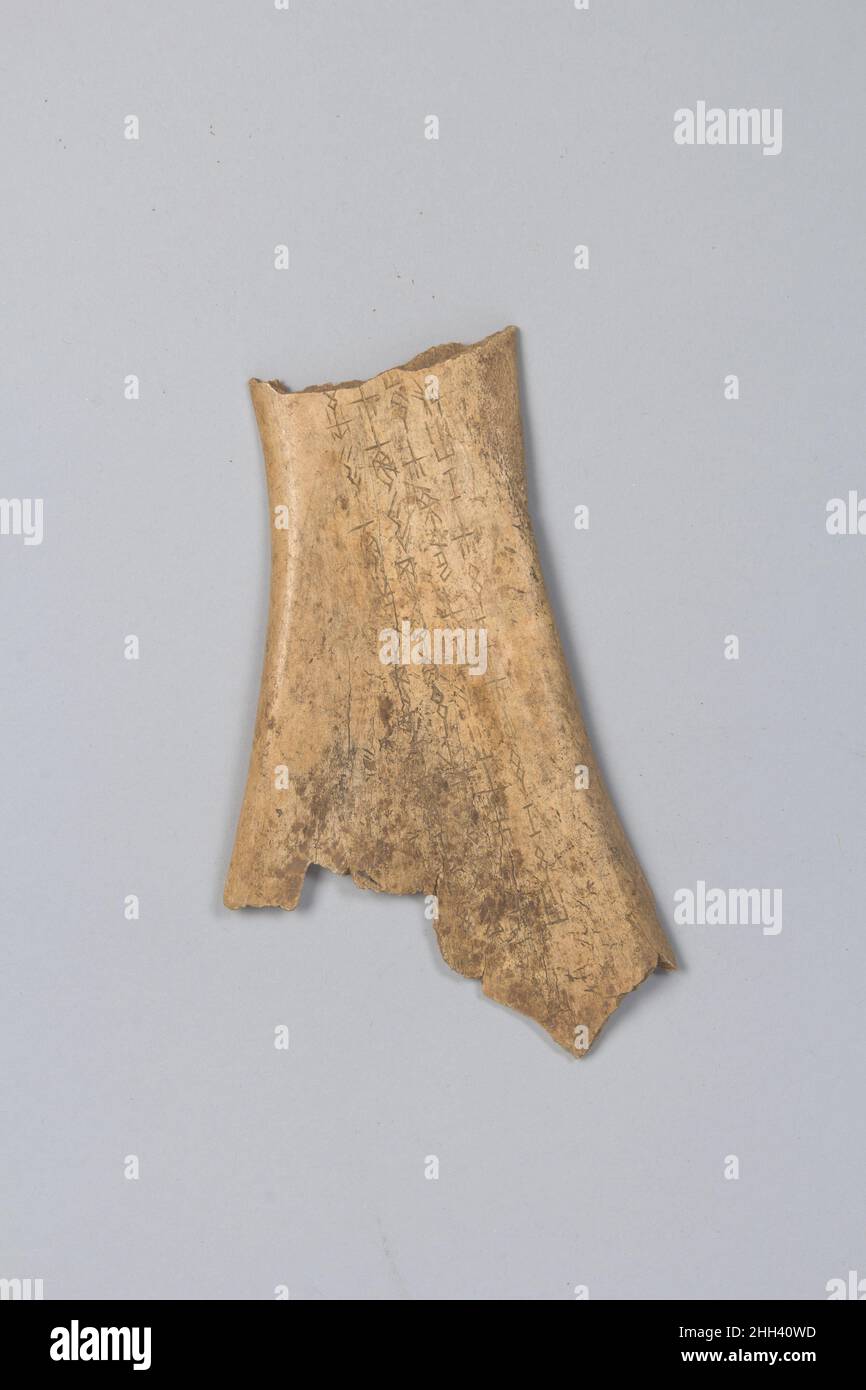 Oracle bone fragment China. Oracle bone fragment. China. Inscribed bone. Shang dynasty (ca. 1600–1046 B.C.). Bone Stock Photohttps://www.alamy.com/image-license-details/?v=1https://www.alamy.com/oracle-bone-fragment-china-oracle-bone-fragment-china-inscribed-bone-shang-dynasty-ca-16001046-bc-bone-image458007241.html
Oracle bone fragment China. Oracle bone fragment. China. Inscribed bone. Shang dynasty (ca. 1600–1046 B.C.). Bone Stock Photohttps://www.alamy.com/image-license-details/?v=1https://www.alamy.com/oracle-bone-fragment-china-oracle-bone-fragment-china-inscribed-bone-shang-dynasty-ca-16001046-bc-bone-image458007241.htmlRM2HH40WD–Oracle bone fragment China. Oracle bone fragment. China. Inscribed bone. Shang dynasty (ca. 1600–1046 B.C.). Bone
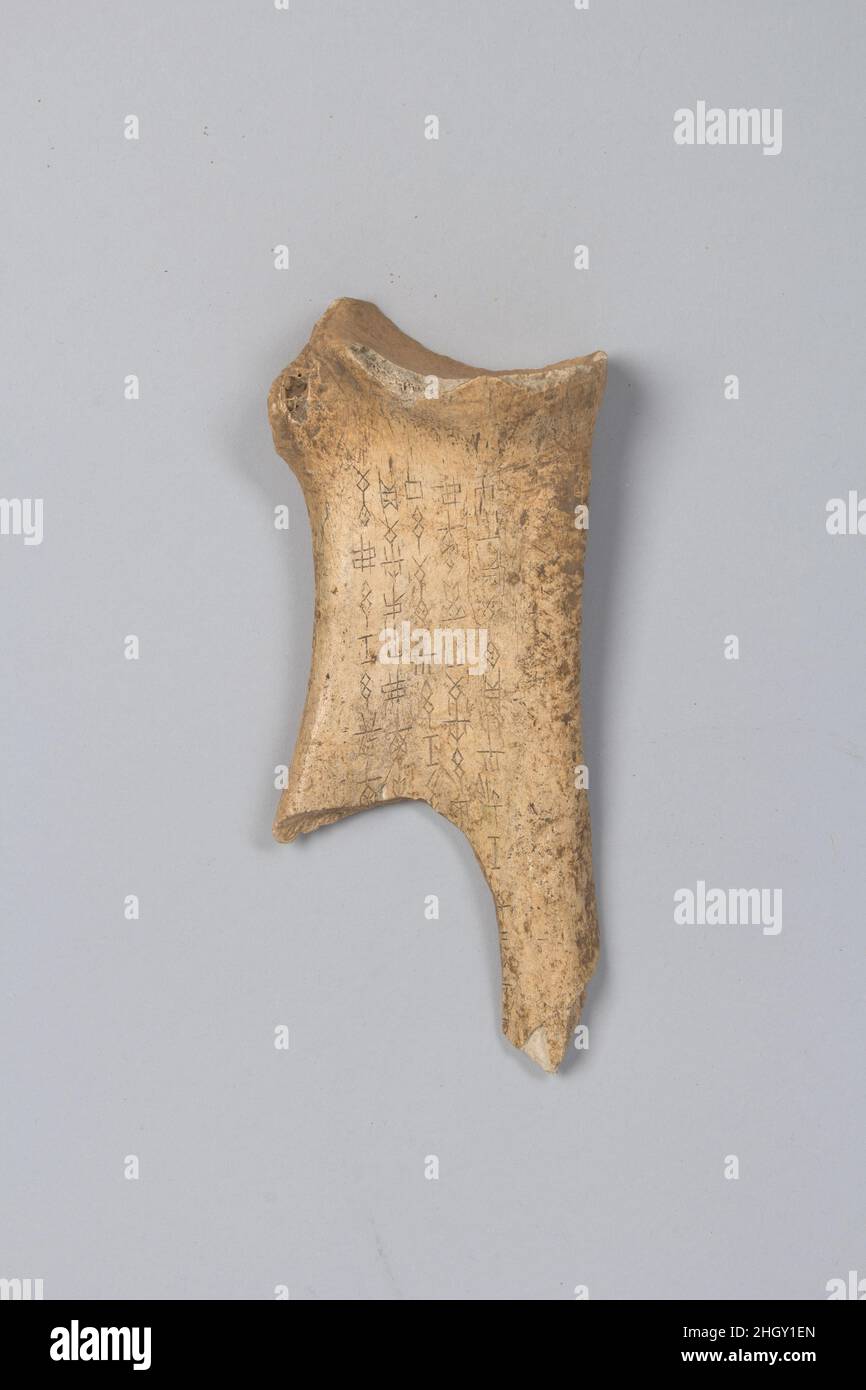 Oracle bone fragment China. Oracle bone fragment. China. Inscribed bone. Shang dynasty (ca. 1600–1046 B.C.). Bone Stock Photohttps://www.alamy.com/image-license-details/?v=1https://www.alamy.com/oracle-bone-fragment-china-oracle-bone-fragment-china-inscribed-bone-shang-dynasty-ca-16001046-bc-bone-image457897965.html
Oracle bone fragment China. Oracle bone fragment. China. Inscribed bone. Shang dynasty (ca. 1600–1046 B.C.). Bone Stock Photohttps://www.alamy.com/image-license-details/?v=1https://www.alamy.com/oracle-bone-fragment-china-oracle-bone-fragment-china-inscribed-bone-shang-dynasty-ca-16001046-bc-bone-image457897965.htmlRM2HGY1EN–Oracle bone fragment China. Oracle bone fragment. China. Inscribed bone. Shang dynasty (ca. 1600–1046 B.C.). Bone
 Inscribed Oracle Bone From the Shang Dynasty in Yinxu city, Henan Province, China Stock Photohttps://www.alamy.com/image-license-details/?v=1https://www.alamy.com/inscribed-oracle-bone-from-the-shang-dynasty-in-yinxu-city-henan-province-image9952166.html
Inscribed Oracle Bone From the Shang Dynasty in Yinxu city, Henan Province, China Stock Photohttps://www.alamy.com/image-license-details/?v=1https://www.alamy.com/inscribed-oracle-bone-from-the-shang-dynasty-in-yinxu-city-henan-province-image9952166.htmlRMA0CE5Y–Inscribed Oracle Bone From the Shang Dynasty in Yinxu city, Henan Province, China
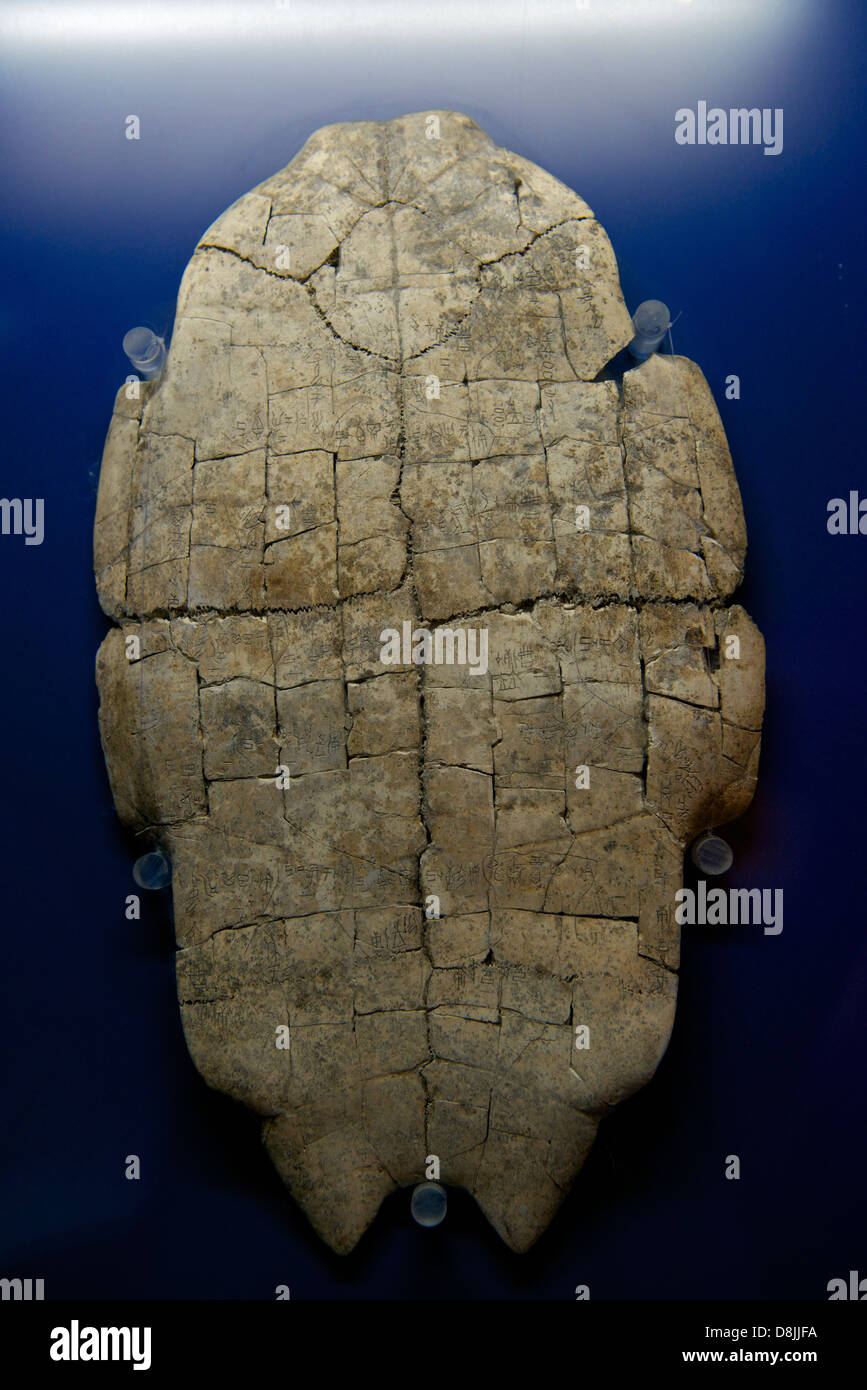 Oracle-Bone Inscriptions - Yin Ruin in Anyang, Henan province. Stock Photohttps://www.alamy.com/image-license-details/?v=1https://www.alamy.com/stock-photo-oracle-bone-inscriptions-yin-ruin-in-anyang-henan-province-56958030.html
Oracle-Bone Inscriptions - Yin Ruin in Anyang, Henan province. Stock Photohttps://www.alamy.com/image-license-details/?v=1https://www.alamy.com/stock-photo-oracle-bone-inscriptions-yin-ruin-in-anyang-henan-province-56958030.htmlRMD8JJFA–Oracle-Bone Inscriptions - Yin Ruin in Anyang, Henan province.
 Oracle bone fragment. Culture: China. Dimensions: 1 1/8 x 3/4 in. (2.9 x 1.9 cm). Museum: Metropolitan Museum of Art, New York, USA. Stock Photohttps://www.alamy.com/image-license-details/?v=1https://www.alamy.com/oracle-bone-fragment-culture-china-dimensions-1-18-x-34-in-29-x-19-cm-museum-metropolitan-museum-of-art-new-york-usa-image213298030.html
Oracle bone fragment. Culture: China. Dimensions: 1 1/8 x 3/4 in. (2.9 x 1.9 cm). Museum: Metropolitan Museum of Art, New York, USA. Stock Photohttps://www.alamy.com/image-license-details/?v=1https://www.alamy.com/oracle-bone-fragment-culture-china-dimensions-1-18-x-34-in-29-x-19-cm-museum-metropolitan-museum-of-art-new-york-usa-image213298030.htmlRMPB0FPP–Oracle bone fragment. Culture: China. Dimensions: 1 1/8 x 3/4 in. (2.9 x 1.9 cm). Museum: Metropolitan Museum of Art, New York, USA.
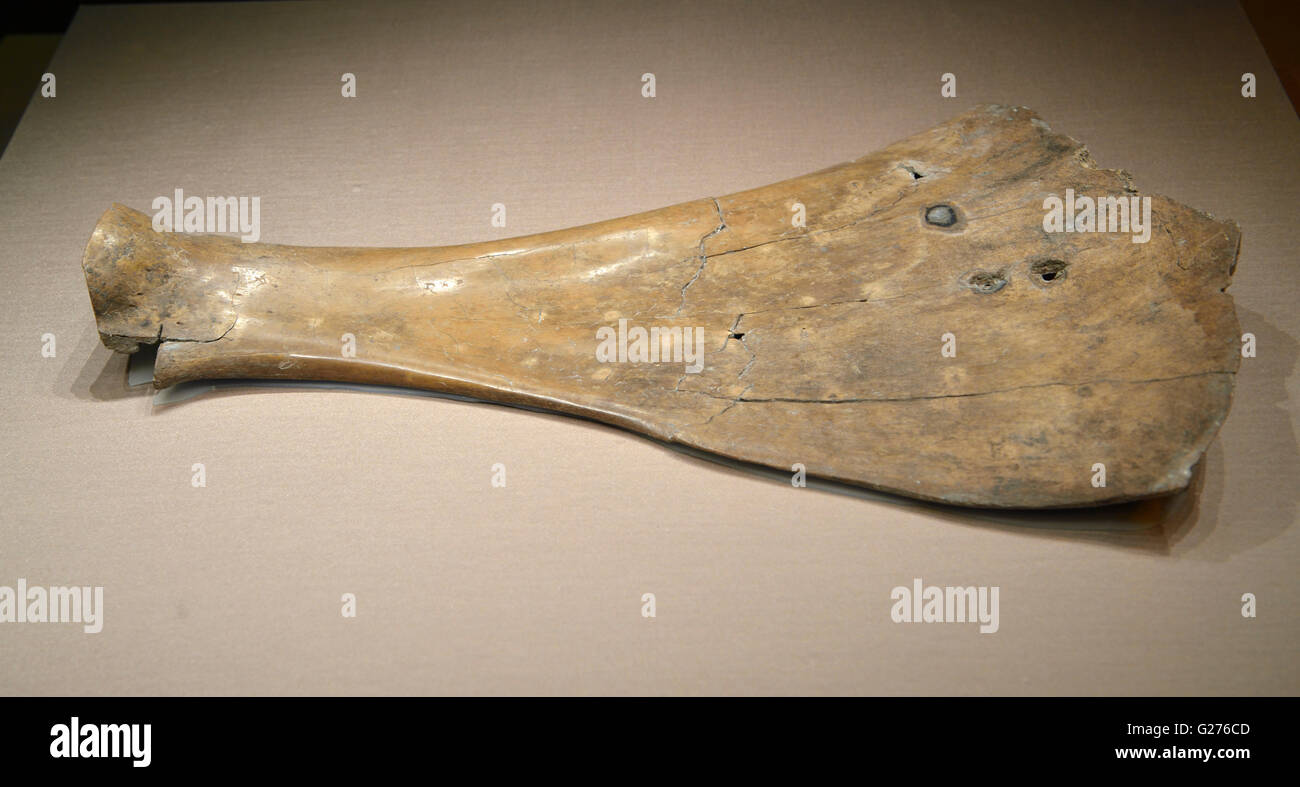 Oracle bone with scripts unearthed from The Tomb of Fu Hao. Beijing Capital Museum. Stock Photohttps://www.alamy.com/image-license-details/?v=1https://www.alamy.com/stock-photo-oracle-bone-with-scripts-unearthed-from-the-tomb-of-fu-hao-beijing-104650237.html
Oracle bone with scripts unearthed from The Tomb of Fu Hao. Beijing Capital Museum. Stock Photohttps://www.alamy.com/image-license-details/?v=1https://www.alamy.com/stock-photo-oracle-bone-with-scripts-unearthed-from-the-tomb-of-fu-hao-beijing-104650237.htmlRMG276CD–Oracle bone with scripts unearthed from The Tomb of Fu Hao. Beijing Capital Museum.
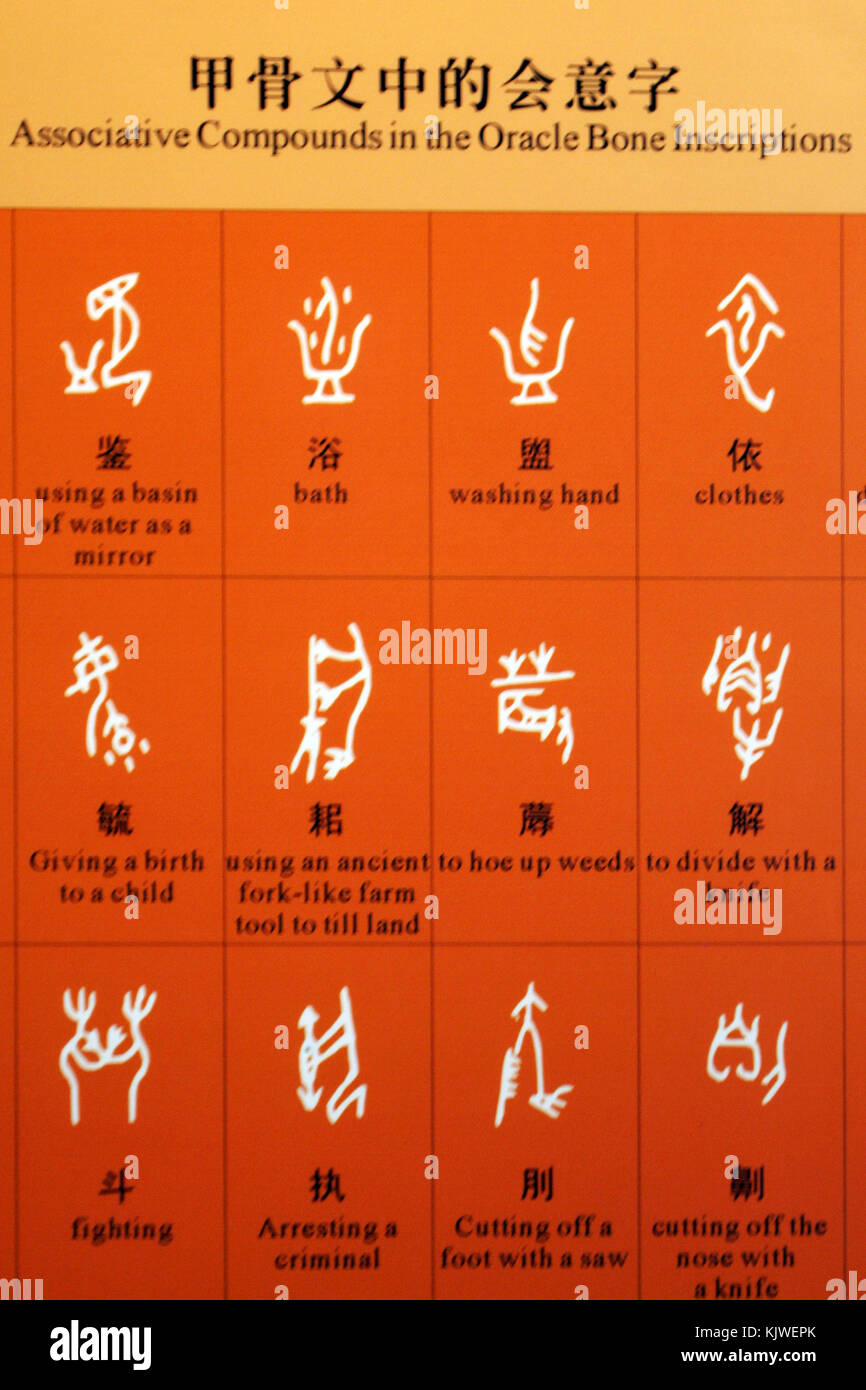 China. 27th Nov, 2017. CHINA-November 2017:(EDITORIAL USE ONLY. CHINA OUT) An ancient oracle-bone inscriptions. Chinese oracle-bone inscriptions have recently been included in the Memory of the World Register, a list of documentary heritage of the UNESCO, according to the UN agency's website.Oracle-bone inscriptions were excavated from the Ruins of Yin in Anyang, Central China's Henan Province. Inscriptions on tortoise shells and animal bones represent the original characters of the Chinese written language, which date back to the Shang Dynasty Credit: SIPA Asia/ZUMA Wire/Alamy Live News Stock Photohttps://www.alamy.com/image-license-details/?v=1https://www.alamy.com/stock-image-china-27th-nov-2017-china-november-2017editorial-use-only-china-out-166517531.html
China. 27th Nov, 2017. CHINA-November 2017:(EDITORIAL USE ONLY. CHINA OUT) An ancient oracle-bone inscriptions. Chinese oracle-bone inscriptions have recently been included in the Memory of the World Register, a list of documentary heritage of the UNESCO, according to the UN agency's website.Oracle-bone inscriptions were excavated from the Ruins of Yin in Anyang, Central China's Henan Province. Inscriptions on tortoise shells and animal bones represent the original characters of the Chinese written language, which date back to the Shang Dynasty Credit: SIPA Asia/ZUMA Wire/Alamy Live News Stock Photohttps://www.alamy.com/image-license-details/?v=1https://www.alamy.com/stock-image-china-27th-nov-2017-china-november-2017editorial-use-only-china-out-166517531.htmlRMKJWEPK–China. 27th Nov, 2017. CHINA-November 2017:(EDITORIAL USE ONLY. CHINA OUT) An ancient oracle-bone inscriptions. Chinese oracle-bone inscriptions have recently been included in the Memory of the World Register, a list of documentary heritage of the UNESCO, according to the UN agency's website.Oracle-bone inscriptions were excavated from the Ruins of Yin in Anyang, Central China's Henan Province. Inscriptions on tortoise shells and animal bones represent the original characters of the Chinese written language, which date back to the Shang Dynasty Credit: SIPA Asia/ZUMA Wire/Alamy Live News
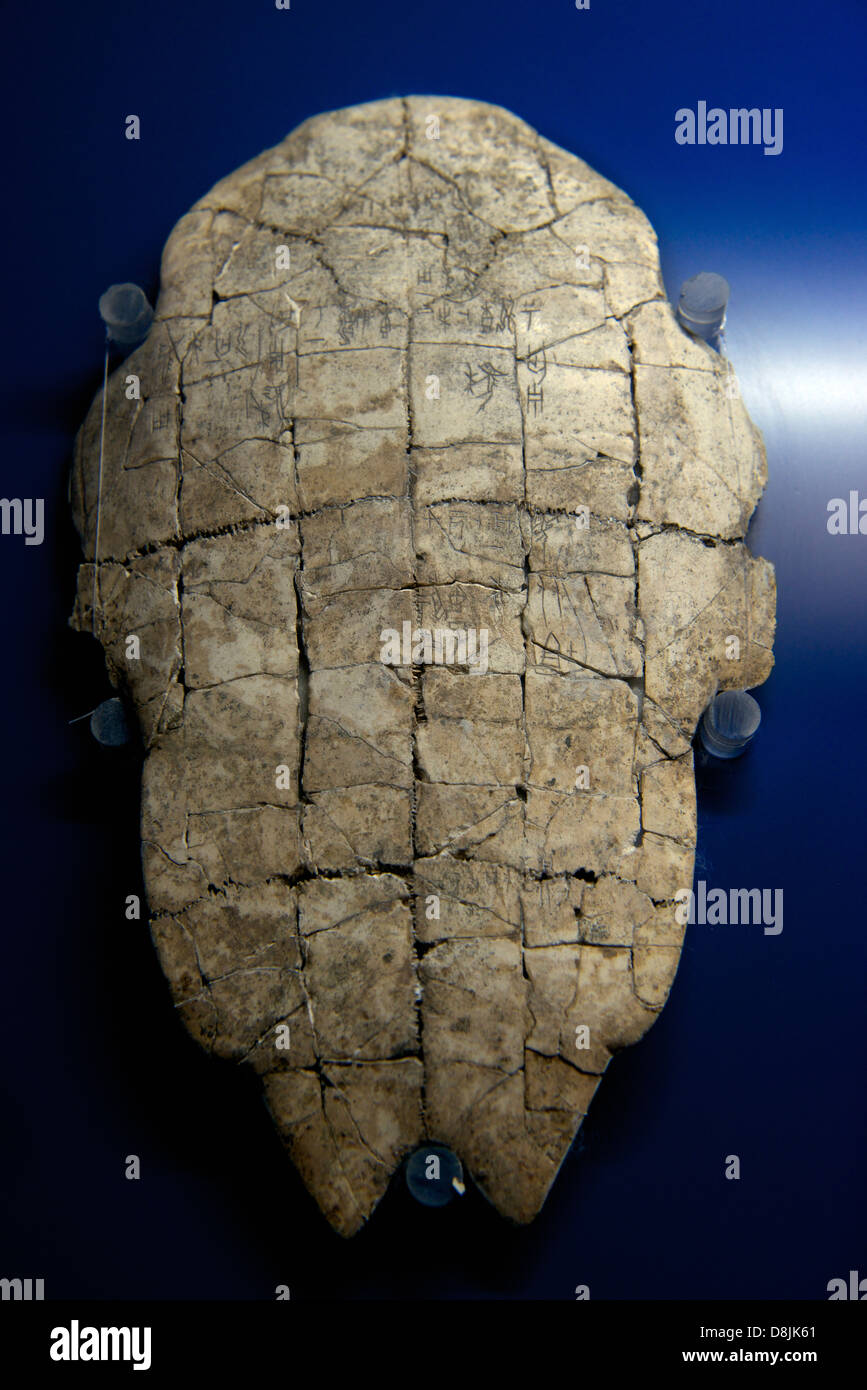 Oracle-Bone Inscriptions - Yin Ruin in Anyang, Henan province, China. 2013 Stock Photohttps://www.alamy.com/image-license-details/?v=1https://www.alamy.com/stock-photo-oracle-bone-inscriptions-yin-ruin-in-anyang-henan-province-china-2013-56958553.html
Oracle-Bone Inscriptions - Yin Ruin in Anyang, Henan province, China. 2013 Stock Photohttps://www.alamy.com/image-license-details/?v=1https://www.alamy.com/stock-photo-oracle-bone-inscriptions-yin-ruin-in-anyang-henan-province-china-2013-56958553.htmlRMD8JK61–Oracle-Bone Inscriptions - Yin Ruin in Anyang, Henan province, China. 2013
 Oracle bone fragment, China, Shang dynasty (ca. 1600–1046 B.C.), Culture: China, Bone, H. 1 in. (2.5 cm); W. 1 3/4 in. (4.4 cm), Bone Stock Photohttps://www.alamy.com/image-license-details/?v=1https://www.alamy.com/oracle-bone-fragment-china-shang-dynasty-ca-16001046-bc-culture-china-bone-h-1-in-25-cm-w-1-34-in-44-cm-bone-image344657560.html
Oracle bone fragment, China, Shang dynasty (ca. 1600–1046 B.C.), Culture: China, Bone, H. 1 in. (2.5 cm); W. 1 3/4 in. (4.4 cm), Bone Stock Photohttps://www.alamy.com/image-license-details/?v=1https://www.alamy.com/oracle-bone-fragment-china-shang-dynasty-ca-16001046-bc-culture-china-bone-h-1-in-25-cm-w-1-34-in-44-cm-bone-image344657560.htmlRM2B0ME6G–Oracle bone fragment, China, Shang dynasty (ca. 1600–1046 B.C.), Culture: China, Bone, H. 1 in. (2.5 cm); W. 1 3/4 in. (4.4 cm), Bone
 Oracle bone fragment China. Oracle bone fragment. China. Inscribed bone. Shang dynasty (ca. 1600–1046 B.C.). Bone Stock Photohttps://www.alamy.com/image-license-details/?v=1https://www.alamy.com/oracle-bone-fragment-china-oracle-bone-fragment-china-inscribed-bone-shang-dynasty-ca-16001046-bc-bone-image457897943.html
Oracle bone fragment China. Oracle bone fragment. China. Inscribed bone. Shang dynasty (ca. 1600–1046 B.C.). Bone Stock Photohttps://www.alamy.com/image-license-details/?v=1https://www.alamy.com/oracle-bone-fragment-china-oracle-bone-fragment-china-inscribed-bone-shang-dynasty-ca-16001046-bc-bone-image457897943.htmlRM2HGY1DY–Oracle bone fragment China. Oracle bone fragment. China. Inscribed bone. Shang dynasty (ca. 1600–1046 B.C.). Bone
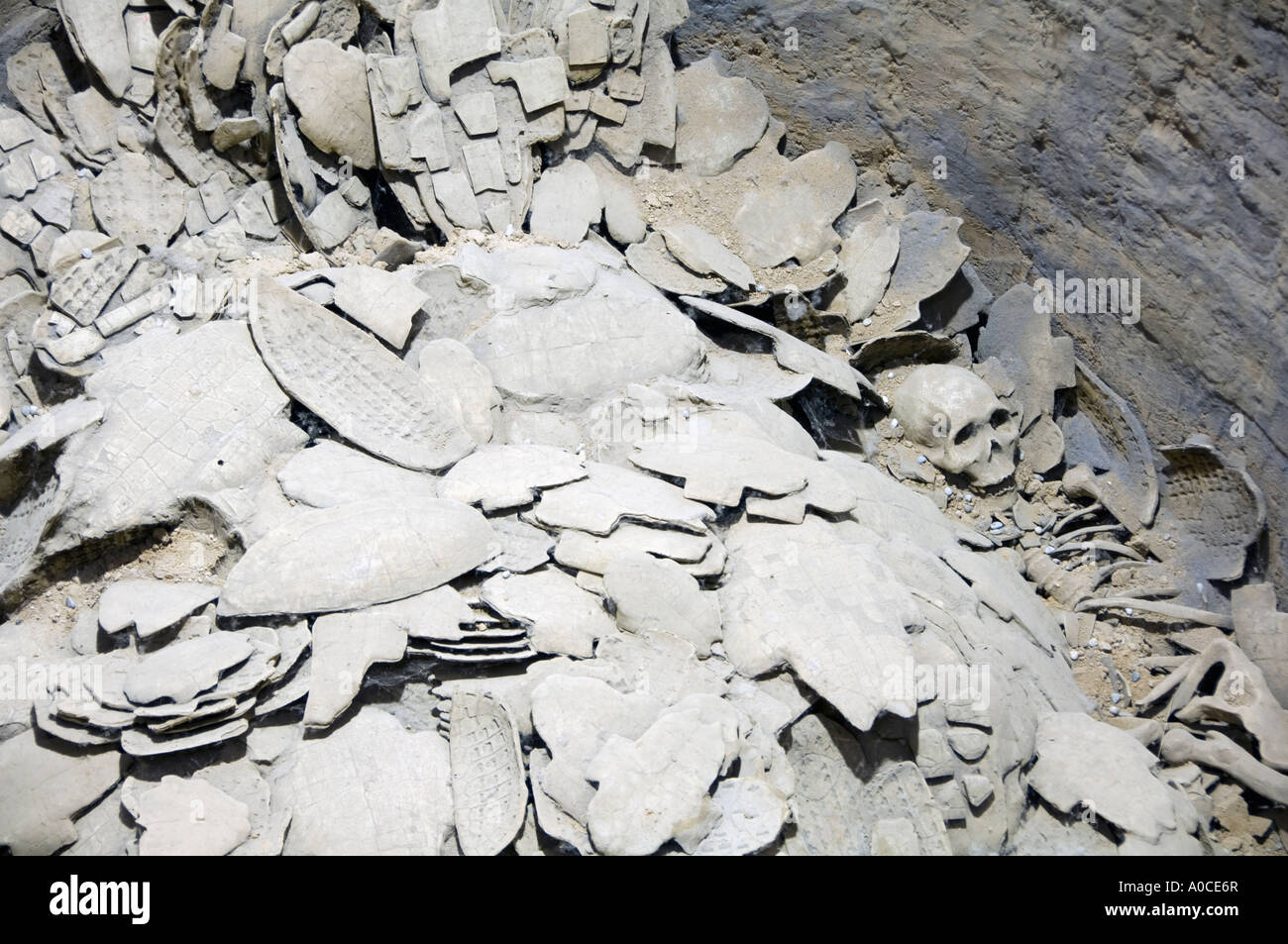 Inscribed Oracle Bone From the Shang Dynasty in Yinxu city, Henan Province, China Stock Photohttps://www.alamy.com/image-license-details/?v=1https://www.alamy.com/inscribed-oracle-bone-from-the-shang-dynasty-in-yinxu-city-henan-province-image9952174.html
Inscribed Oracle Bone From the Shang Dynasty in Yinxu city, Henan Province, China Stock Photohttps://www.alamy.com/image-license-details/?v=1https://www.alamy.com/inscribed-oracle-bone-from-the-shang-dynasty-in-yinxu-city-henan-province-image9952174.htmlRMA0CE6R–Inscribed Oracle Bone From the Shang Dynasty in Yinxu city, Henan Province, China
 Oracle bone fragment. Culture: China. Dimensions: 1 3/8 x 1 1/16 in. (3.5 x 2.7 cm). Museum: Metropolitan Museum of Art, New York, USA. Stock Photohttps://www.alamy.com/image-license-details/?v=1https://www.alamy.com/oracle-bone-fragment-culture-china-dimensions-1-38-x-1-116-in-35-x-27-cm-museum-metropolitan-museum-of-art-new-york-usa-image213320307.html
Oracle bone fragment. Culture: China. Dimensions: 1 3/8 x 1 1/16 in. (3.5 x 2.7 cm). Museum: Metropolitan Museum of Art, New York, USA. Stock Photohttps://www.alamy.com/image-license-details/?v=1https://www.alamy.com/oracle-bone-fragment-culture-china-dimensions-1-38-x-1-116-in-35-x-27-cm-museum-metropolitan-museum-of-art-new-york-usa-image213320307.htmlRMPB1G6B–Oracle bone fragment. Culture: China. Dimensions: 1 3/8 x 1 1/16 in. (3.5 x 2.7 cm). Museum: Metropolitan Museum of Art, New York, USA.
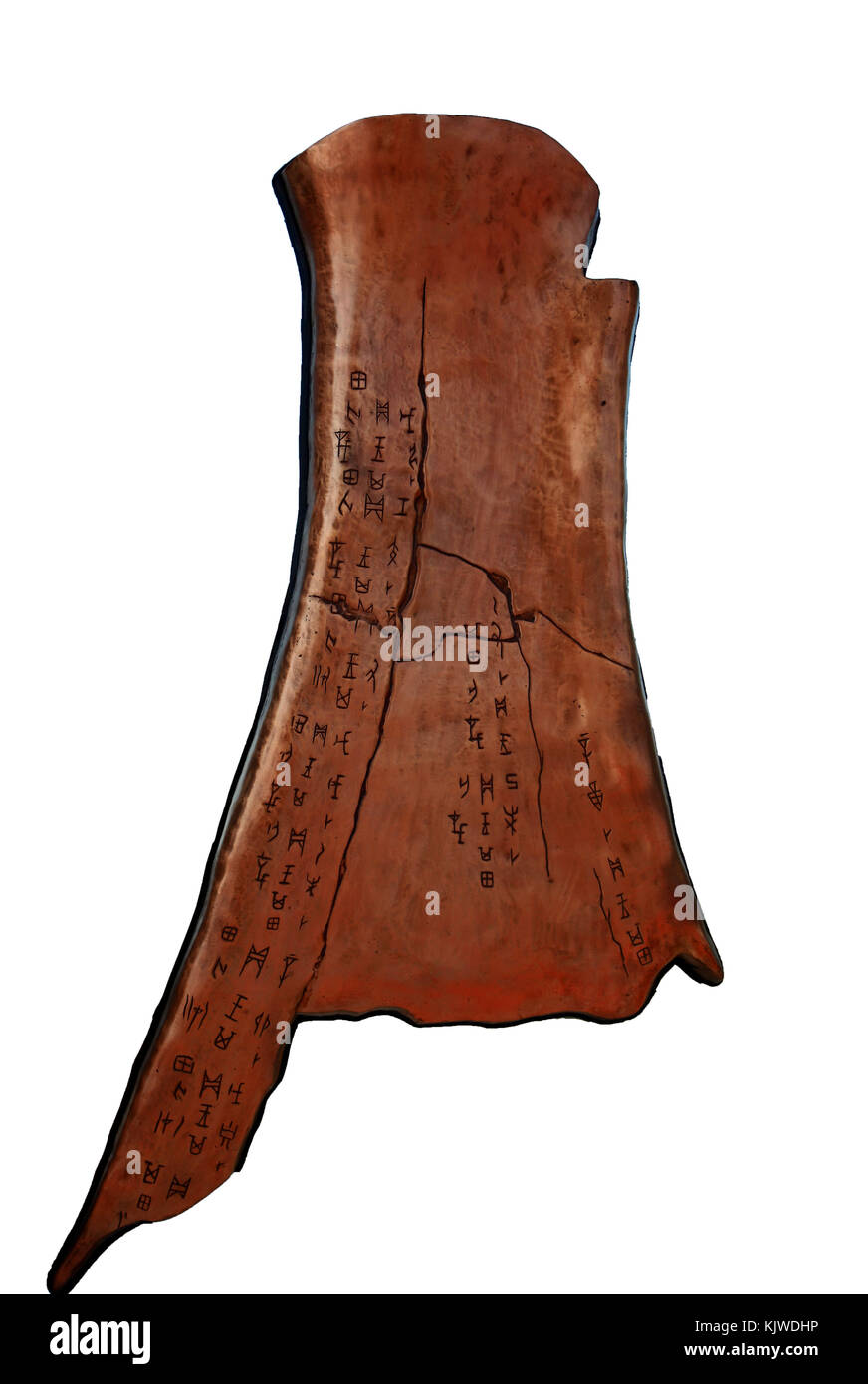 November 27, 2017 - China - CHINA-November 2017:(EDITORIAL USE ONLY. CHINA OUT) An ancient oracle-bone inscriptions. Chinese oracle-bone inscriptions have recently been included in the Memory of the World Register, a list of documentary heritage of the UNESCO, according to the UN agency's website.Oracle-bone inscriptions were excavated from the Ruins of Yin in Anyang, Central China's Henan Province. Inscriptions on tortoise shells and animal bones represent the original characters of the Chinese written language, which date back to the Shang Dynasty (Credit Image: © SIPA Asia via ZUMA Wire) Stock Photohttps://www.alamy.com/image-license-details/?v=1https://www.alamy.com/stock-image-november-27-2017-china-china-november-2017editorial-use-only-china-166516610.html
November 27, 2017 - China - CHINA-November 2017:(EDITORIAL USE ONLY. CHINA OUT) An ancient oracle-bone inscriptions. Chinese oracle-bone inscriptions have recently been included in the Memory of the World Register, a list of documentary heritage of the UNESCO, according to the UN agency's website.Oracle-bone inscriptions were excavated from the Ruins of Yin in Anyang, Central China's Henan Province. Inscriptions on tortoise shells and animal bones represent the original characters of the Chinese written language, which date back to the Shang Dynasty (Credit Image: © SIPA Asia via ZUMA Wire) Stock Photohttps://www.alamy.com/image-license-details/?v=1https://www.alamy.com/stock-image-november-27-2017-china-china-november-2017editorial-use-only-china-166516610.htmlRMKJWDHP–November 27, 2017 - China - CHINA-November 2017:(EDITORIAL USE ONLY. CHINA OUT) An ancient oracle-bone inscriptions. Chinese oracle-bone inscriptions have recently been included in the Memory of the World Register, a list of documentary heritage of the UNESCO, according to the UN agency's website.Oracle-bone inscriptions were excavated from the Ruins of Yin in Anyang, Central China's Henan Province. Inscriptions on tortoise shells and animal bones represent the original characters of the Chinese written language, which date back to the Shang Dynasty (Credit Image: © SIPA Asia via ZUMA Wire)
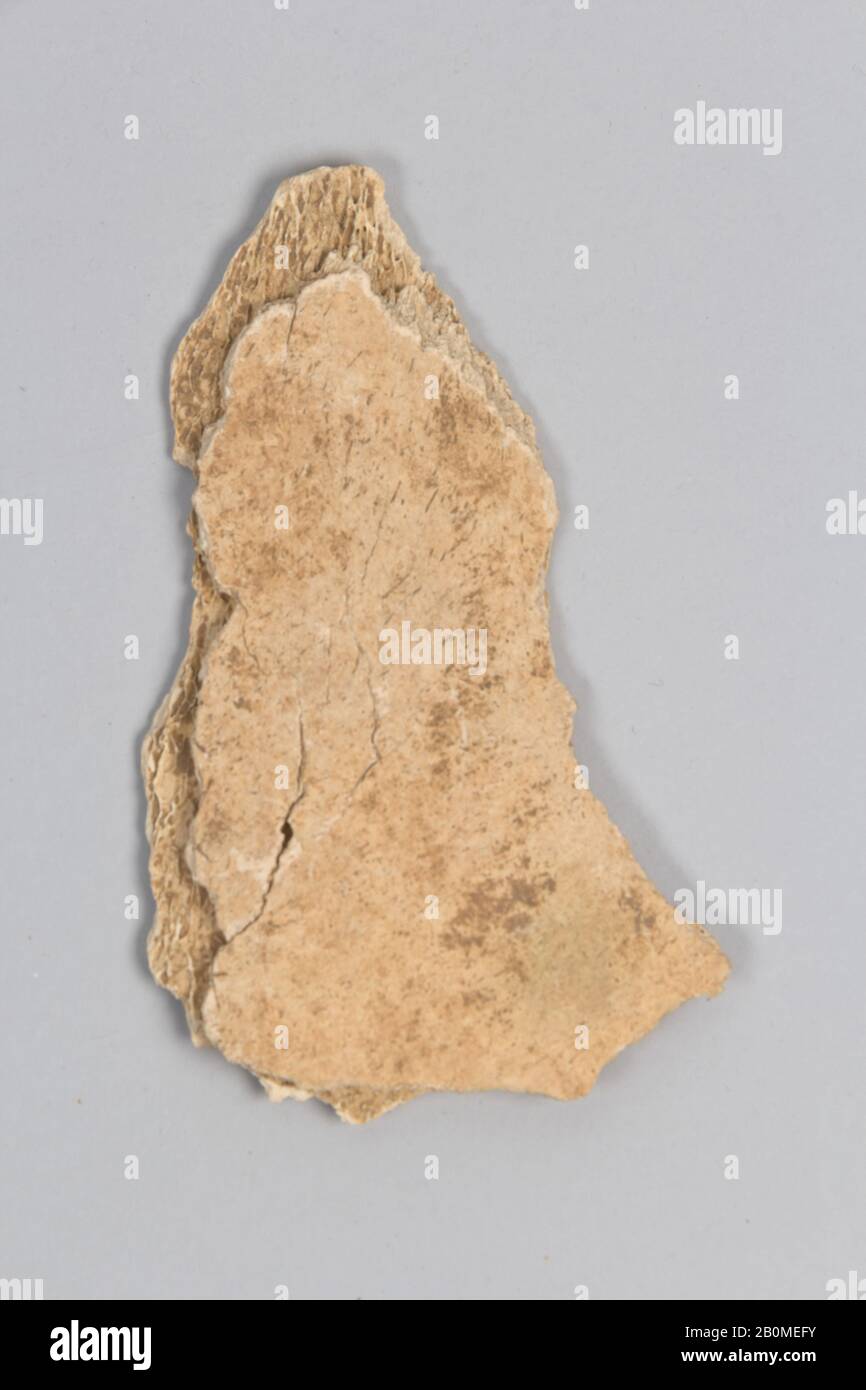 Oracle bone fragment, China, Shang dynasty (ca. 1600–1046 B.C.), Culture: China, Bone, 2 5/8 × 4 1/4 in. (6.7 × 10.8 cm), Bone Stock Photohttps://www.alamy.com/image-license-details/?v=1https://www.alamy.com/oracle-bone-fragment-china-shang-dynasty-ca-16001046-bc-culture-china-bone-2-58-4-14-in-67-108-cm-bone-image344657823.html
Oracle bone fragment, China, Shang dynasty (ca. 1600–1046 B.C.), Culture: China, Bone, 2 5/8 × 4 1/4 in. (6.7 × 10.8 cm), Bone Stock Photohttps://www.alamy.com/image-license-details/?v=1https://www.alamy.com/oracle-bone-fragment-china-shang-dynasty-ca-16001046-bc-culture-china-bone-2-58-4-14-in-67-108-cm-bone-image344657823.htmlRM2B0MEFY–Oracle bone fragment, China, Shang dynasty (ca. 1600–1046 B.C.), Culture: China, Bone, 2 5/8 × 4 1/4 in. (6.7 × 10.8 cm), Bone
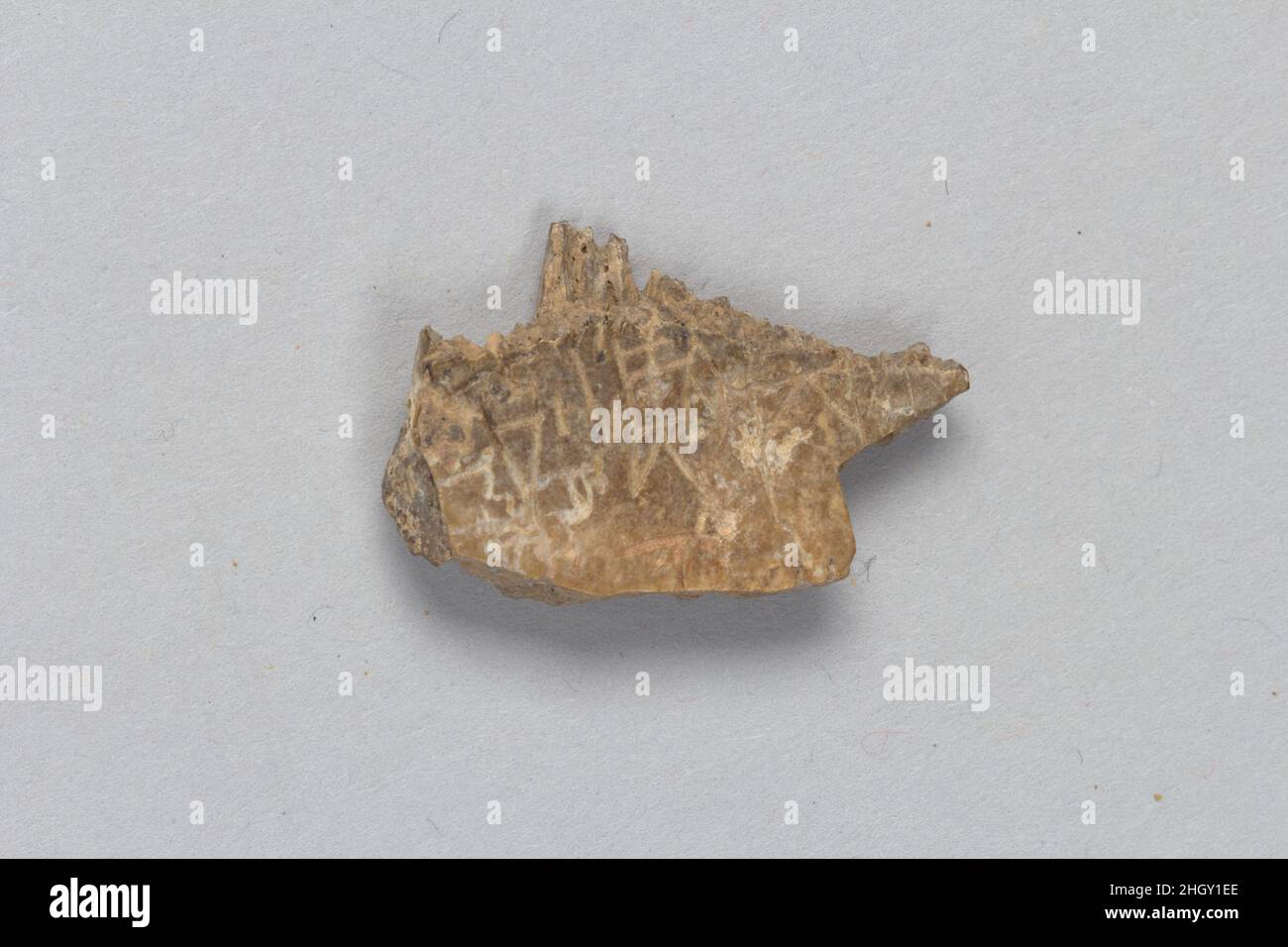 Oracle bone fragment China. Oracle bone fragment. China. Inscribed bone. Shang dynasty (ca. 1600–1046 B.C.). Bone Stock Photohttps://www.alamy.com/image-license-details/?v=1https://www.alamy.com/oracle-bone-fragment-china-oracle-bone-fragment-china-inscribed-bone-shang-dynasty-ca-16001046-bc-bone-image457897958.html
Oracle bone fragment China. Oracle bone fragment. China. Inscribed bone. Shang dynasty (ca. 1600–1046 B.C.). Bone Stock Photohttps://www.alamy.com/image-license-details/?v=1https://www.alamy.com/oracle-bone-fragment-china-oracle-bone-fragment-china-inscribed-bone-shang-dynasty-ca-16001046-bc-bone-image457897958.htmlRM2HGY1EE–Oracle bone fragment China. Oracle bone fragment. China. Inscribed bone. Shang dynasty (ca. 1600–1046 B.C.). Bone
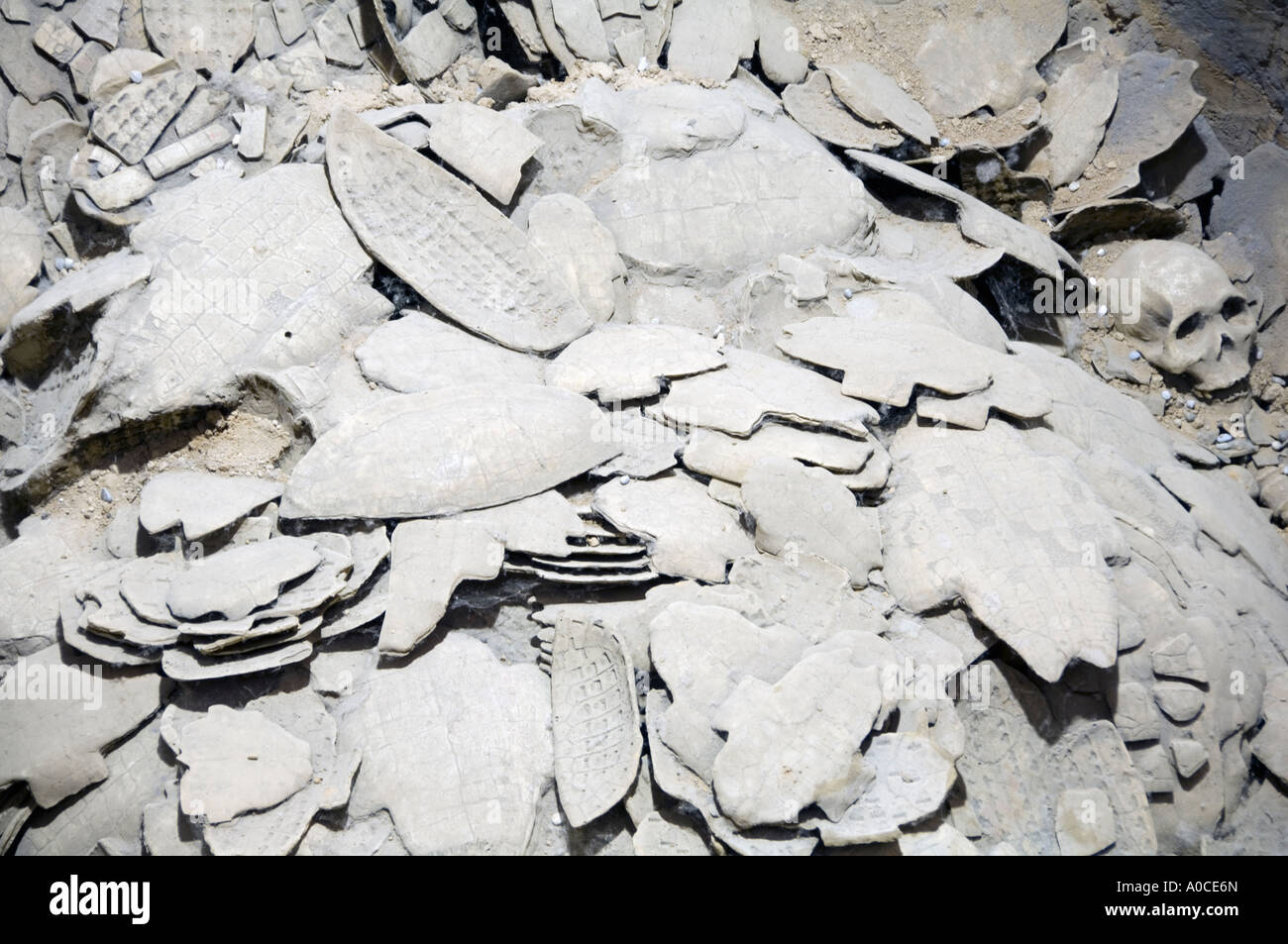 Inscribed Oracle Bone From the Shang Dynasty in Yinxu city, Henan Province, China Stock Photohttps://www.alamy.com/image-license-details/?v=1https://www.alamy.com/inscribed-oracle-bone-from-the-shang-dynasty-in-yinxu-city-henan-province-image9952172.html
Inscribed Oracle Bone From the Shang Dynasty in Yinxu city, Henan Province, China Stock Photohttps://www.alamy.com/image-license-details/?v=1https://www.alamy.com/inscribed-oracle-bone-from-the-shang-dynasty-in-yinxu-city-henan-province-image9952172.htmlRMA0CE6N–Inscribed Oracle Bone From the Shang Dynasty in Yinxu city, Henan Province, China
 Oracle bone fragment. Culture: China. Dimensions: H. 1 in. (2.5 cm); W. 1 3/4 in. (4.4 cm). Museum: Metropolitan Museum of Art, New York, USA. Stock Photohttps://www.alamy.com/image-license-details/?v=1https://www.alamy.com/oracle-bone-fragment-culture-china-dimensions-h-1-in-25-cm-w-1-34-in-44-cm-museum-metropolitan-museum-of-art-new-york-usa-image213259626.html
Oracle bone fragment. Culture: China. Dimensions: H. 1 in. (2.5 cm); W. 1 3/4 in. (4.4 cm). Museum: Metropolitan Museum of Art, New York, USA. Stock Photohttps://www.alamy.com/image-license-details/?v=1https://www.alamy.com/oracle-bone-fragment-culture-china-dimensions-h-1-in-25-cm-w-1-34-in-44-cm-museum-metropolitan-museum-of-art-new-york-usa-image213259626.htmlRMPAXPR6–Oracle bone fragment. Culture: China. Dimensions: H. 1 in. (2.5 cm); W. 1 3/4 in. (4.4 cm). Museum: Metropolitan Museum of Art, New York, USA.
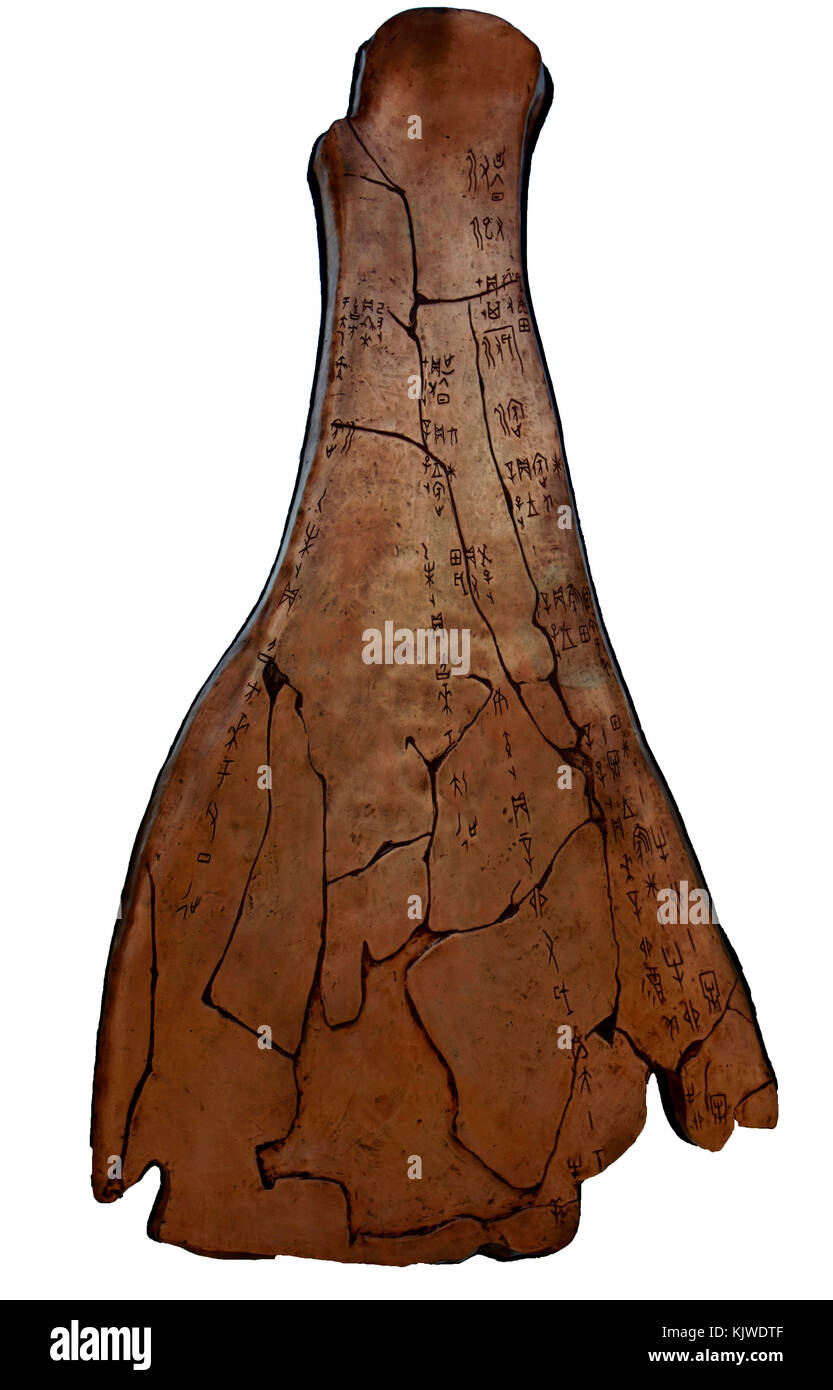 November 27, 2017 - China - CHINA-November 2017:(EDITORIAL USE ONLY. CHINA OUT) An ancient oracle-bone inscriptions. Chinese oracle-bone inscriptions have recently been included in the Memory of the World Register, a list of documentary heritage of the UNESCO, according to the UN agency's website.Oracle-bone inscriptions were excavated from the Ruins of Yin in Anyang, Central China's Henan Province. Inscriptions on tortoise shells and animal bones represent the original characters of the Chinese written language, which date back to the Shang Dynasty (Credit Image: © SIPA Asia via ZUMA Wire) Stock Photohttps://www.alamy.com/image-license-details/?v=1https://www.alamy.com/stock-image-november-27-2017-china-china-november-2017editorial-use-only-china-166516799.html
November 27, 2017 - China - CHINA-November 2017:(EDITORIAL USE ONLY. CHINA OUT) An ancient oracle-bone inscriptions. Chinese oracle-bone inscriptions have recently been included in the Memory of the World Register, a list of documentary heritage of the UNESCO, according to the UN agency's website.Oracle-bone inscriptions were excavated from the Ruins of Yin in Anyang, Central China's Henan Province. Inscriptions on tortoise shells and animal bones represent the original characters of the Chinese written language, which date back to the Shang Dynasty (Credit Image: © SIPA Asia via ZUMA Wire) Stock Photohttps://www.alamy.com/image-license-details/?v=1https://www.alamy.com/stock-image-november-27-2017-china-china-november-2017editorial-use-only-china-166516799.htmlRMKJWDTF–November 27, 2017 - China - CHINA-November 2017:(EDITORIAL USE ONLY. CHINA OUT) An ancient oracle-bone inscriptions. Chinese oracle-bone inscriptions have recently been included in the Memory of the World Register, a list of documentary heritage of the UNESCO, according to the UN agency's website.Oracle-bone inscriptions were excavated from the Ruins of Yin in Anyang, Central China's Henan Province. Inscriptions on tortoise shells and animal bones represent the original characters of the Chinese written language, which date back to the Shang Dynasty (Credit Image: © SIPA Asia via ZUMA Wire)
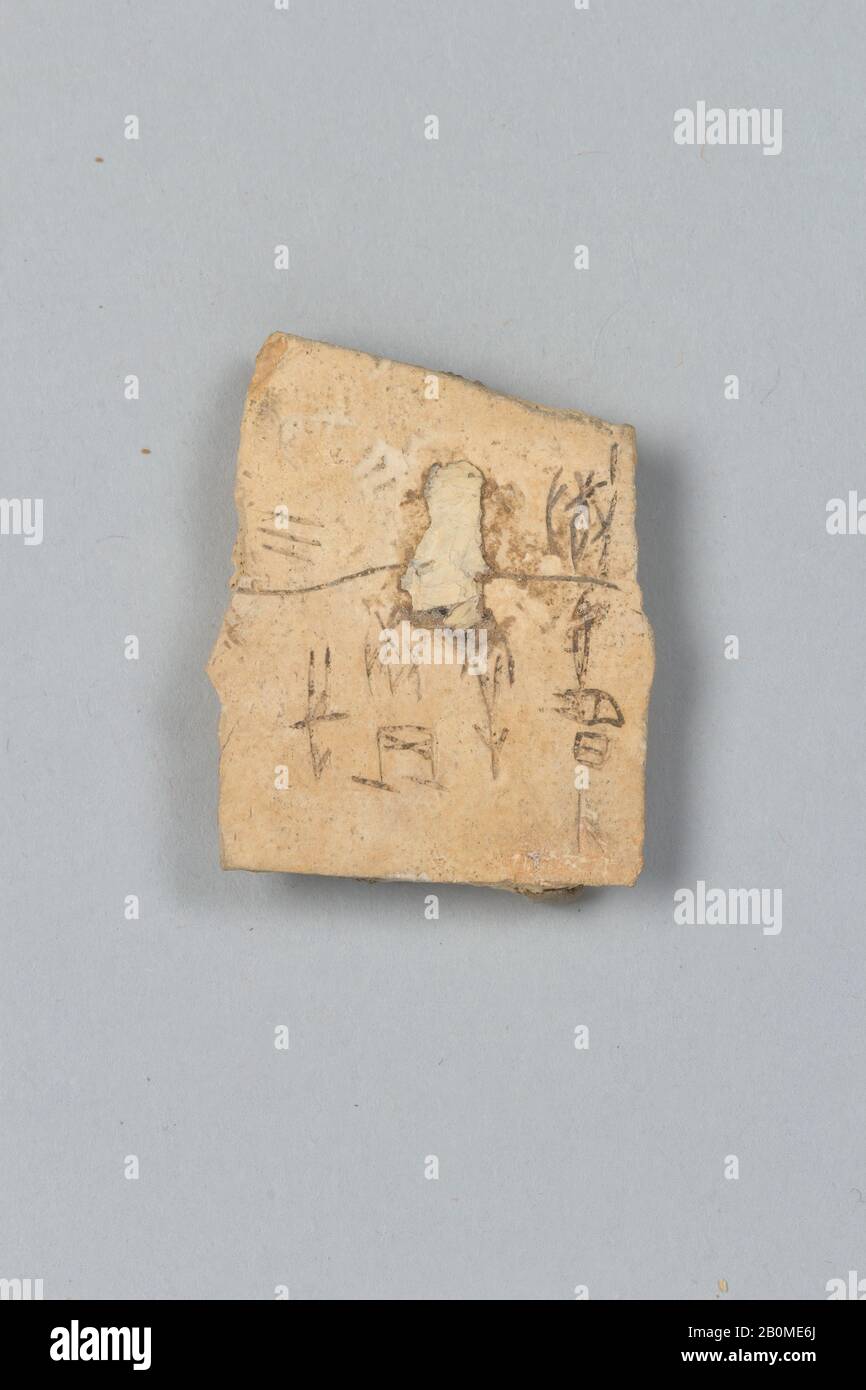 Oracle bone fragment, China, Shang dynasty (ca. 1600–1046 B.C.), Culture: China, Bone, 1 3/8 x 1 1/16 in. (3.5 x 2.7 cm), Bone Stock Photohttps://www.alamy.com/image-license-details/?v=1https://www.alamy.com/oracle-bone-fragment-china-shang-dynasty-ca-16001046-bc-culture-china-bone-1-38-x-1-116-in-35-x-27-cm-bone-image344657562.html
Oracle bone fragment, China, Shang dynasty (ca. 1600–1046 B.C.), Culture: China, Bone, 1 3/8 x 1 1/16 in. (3.5 x 2.7 cm), Bone Stock Photohttps://www.alamy.com/image-license-details/?v=1https://www.alamy.com/oracle-bone-fragment-china-shang-dynasty-ca-16001046-bc-culture-china-bone-1-38-x-1-116-in-35-x-27-cm-bone-image344657562.htmlRM2B0ME6J–Oracle bone fragment, China, Shang dynasty (ca. 1600–1046 B.C.), Culture: China, Bone, 1 3/8 x 1 1/16 in. (3.5 x 2.7 cm), Bone
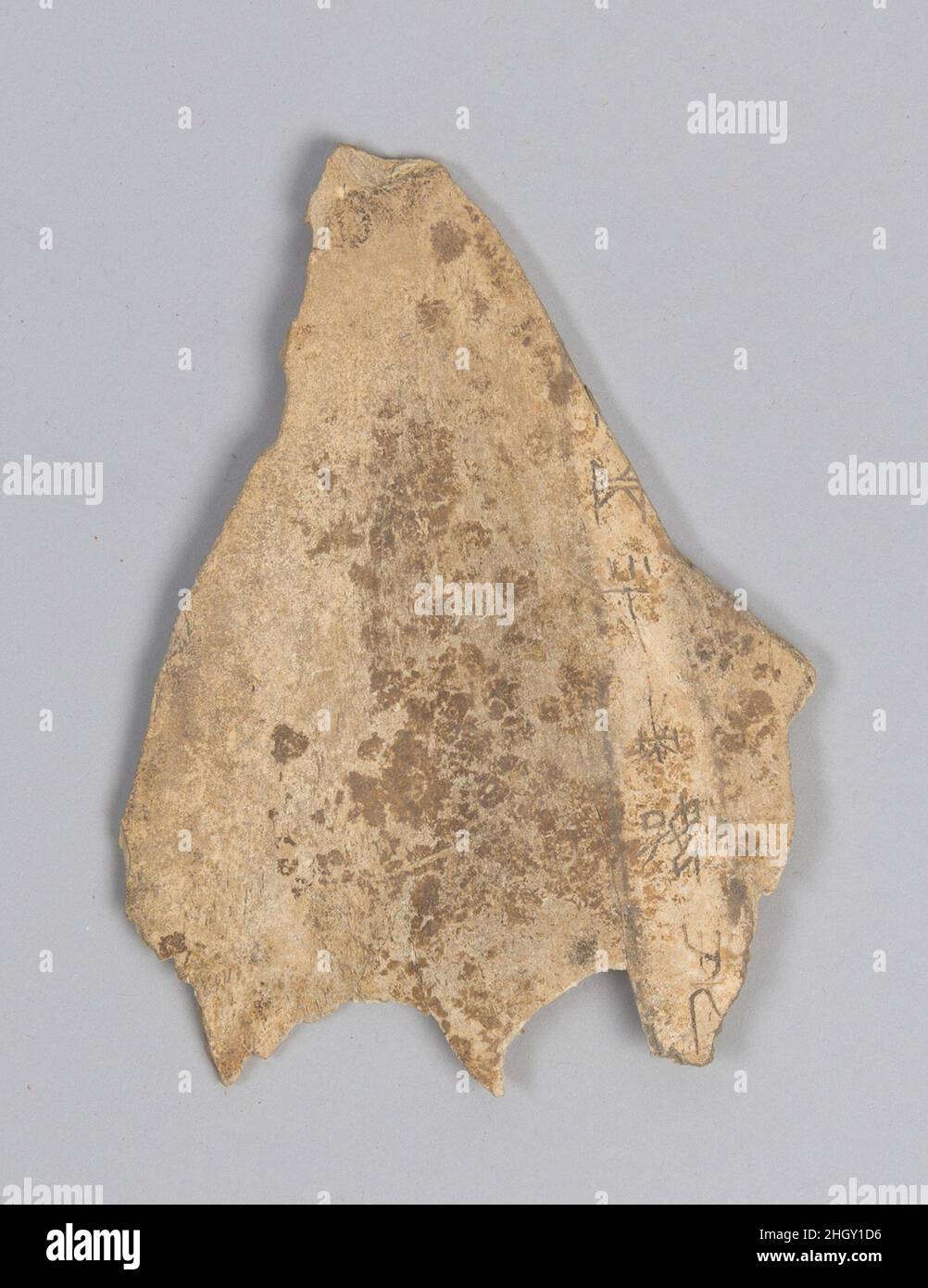 Oracle bone fragment China. Oracle bone fragment. China. Inscribed bone. Shang dynasty (ca. 1600–1046 B.C.). Bone Stock Photohttps://www.alamy.com/image-license-details/?v=1https://www.alamy.com/oracle-bone-fragment-china-oracle-bone-fragment-china-inscribed-bone-shang-dynasty-ca-16001046-bc-bone-image457897922.html
Oracle bone fragment China. Oracle bone fragment. China. Inscribed bone. Shang dynasty (ca. 1600–1046 B.C.). Bone Stock Photohttps://www.alamy.com/image-license-details/?v=1https://www.alamy.com/oracle-bone-fragment-china-oracle-bone-fragment-china-inscribed-bone-shang-dynasty-ca-16001046-bc-bone-image457897922.htmlRM2HGY1D6–Oracle bone fragment China. Oracle bone fragment. China. Inscribed bone. Shang dynasty (ca. 1600–1046 B.C.). Bone
 Inscribed Oracle Bone From the Shang Dynasty in Yinxu city, Henan Province, China Stock Photohttps://www.alamy.com/image-license-details/?v=1https://www.alamy.com/inscribed-oracle-bone-from-the-shang-dynasty-in-yinxu-city-henan-province-image9952178.html
Inscribed Oracle Bone From the Shang Dynasty in Yinxu city, Henan Province, China Stock Photohttps://www.alamy.com/image-license-details/?v=1https://www.alamy.com/inscribed-oracle-bone-from-the-shang-dynasty-in-yinxu-city-henan-province-image9952178.htmlRMA0CE6Y–Inscribed Oracle Bone From the Shang Dynasty in Yinxu city, Henan Province, China
 Oracle bone fragment. Culture: China. Dimensions: 1 3/4 × 4 1/2 in. (4.4 × 11.4 cm). Museum: Metropolitan Museum of Art, New York, USA. Stock Photohttps://www.alamy.com/image-license-details/?v=1https://www.alamy.com/oracle-bone-fragment-culture-china-dimensions-1-34-4-12-in-44-114-cm-museum-metropolitan-museum-of-art-new-york-usa-image213397202.html
Oracle bone fragment. Culture: China. Dimensions: 1 3/4 × 4 1/2 in. (4.4 × 11.4 cm). Museum: Metropolitan Museum of Art, New York, USA. Stock Photohttps://www.alamy.com/image-license-details/?v=1https://www.alamy.com/oracle-bone-fragment-culture-china-dimensions-1-34-4-12-in-44-114-cm-museum-metropolitan-museum-of-art-new-york-usa-image213397202.htmlRMPB528J–Oracle bone fragment. Culture: China. Dimensions: 1 3/4 × 4 1/2 in. (4.4 × 11.4 cm). Museum: Metropolitan Museum of Art, New York, USA.